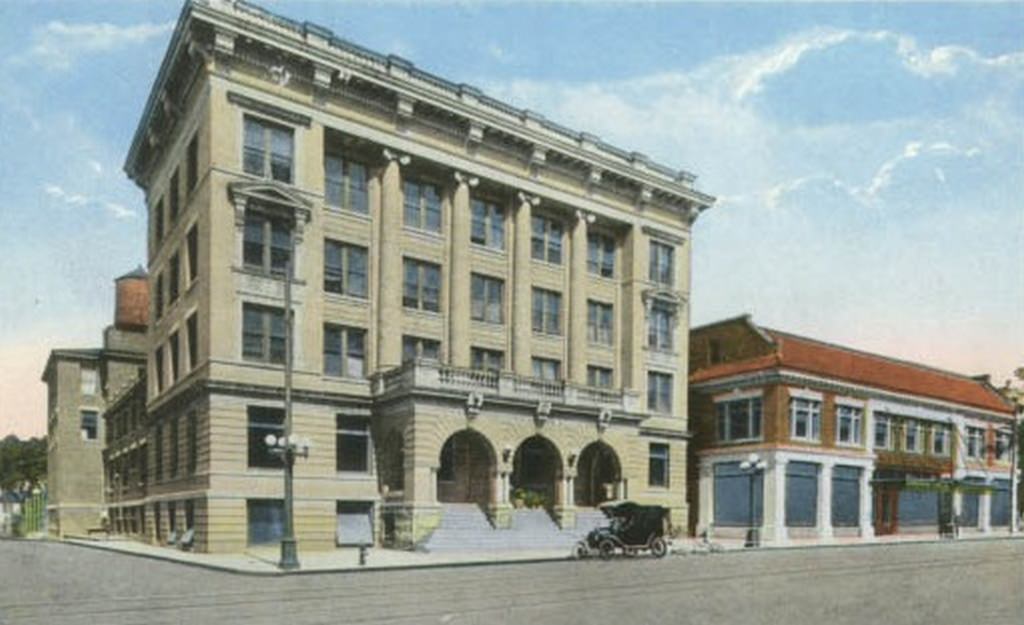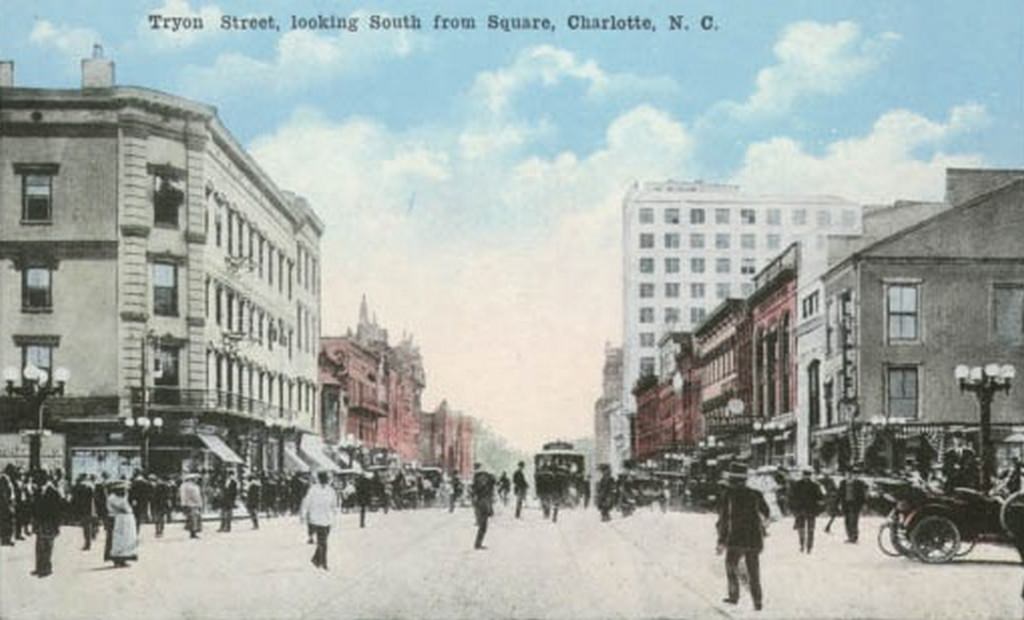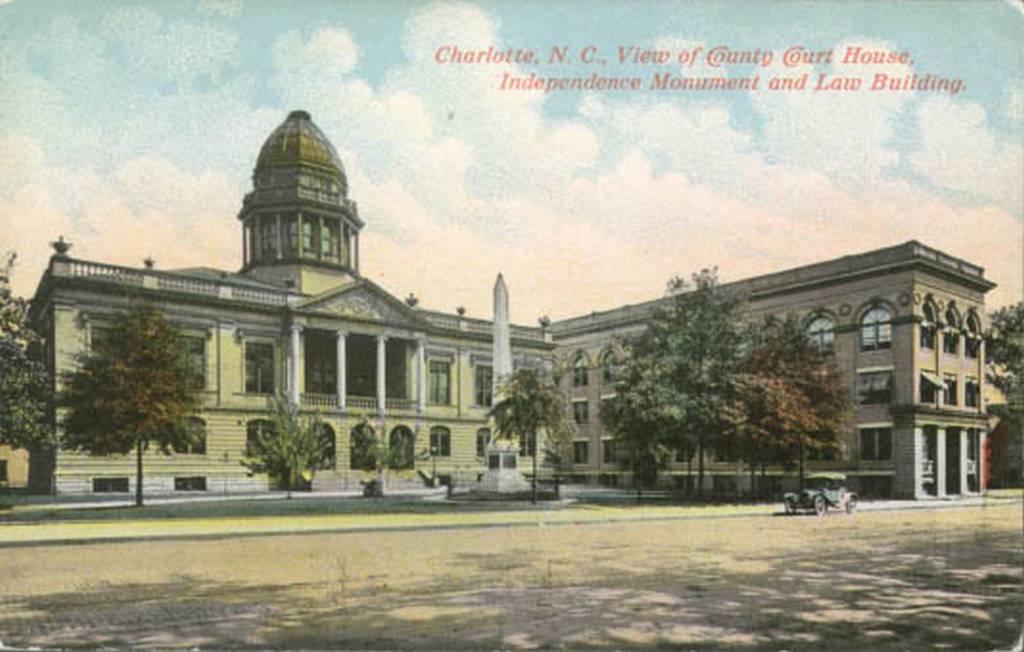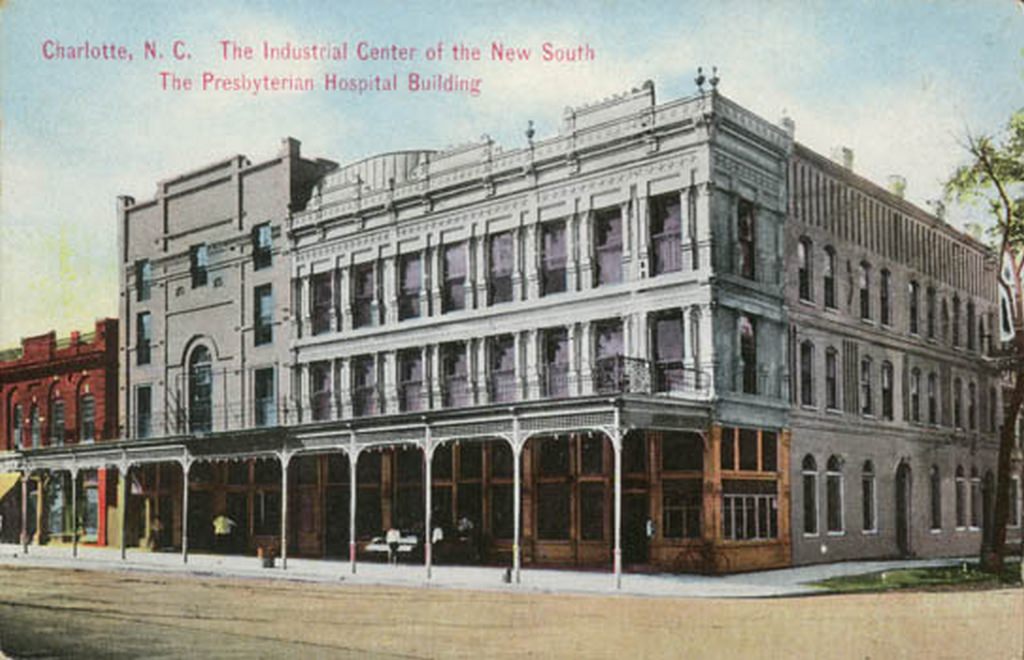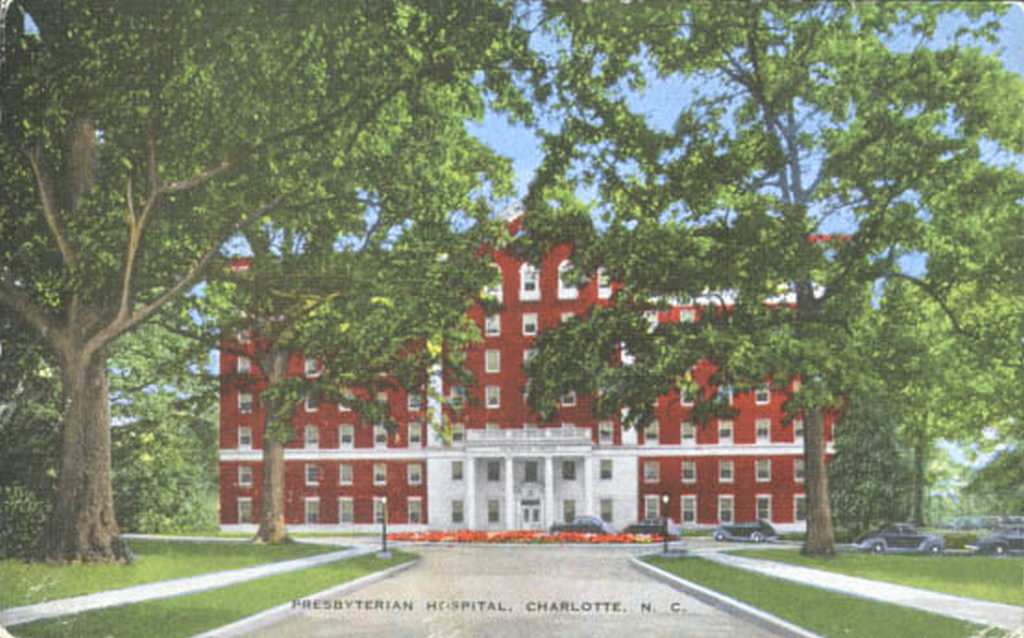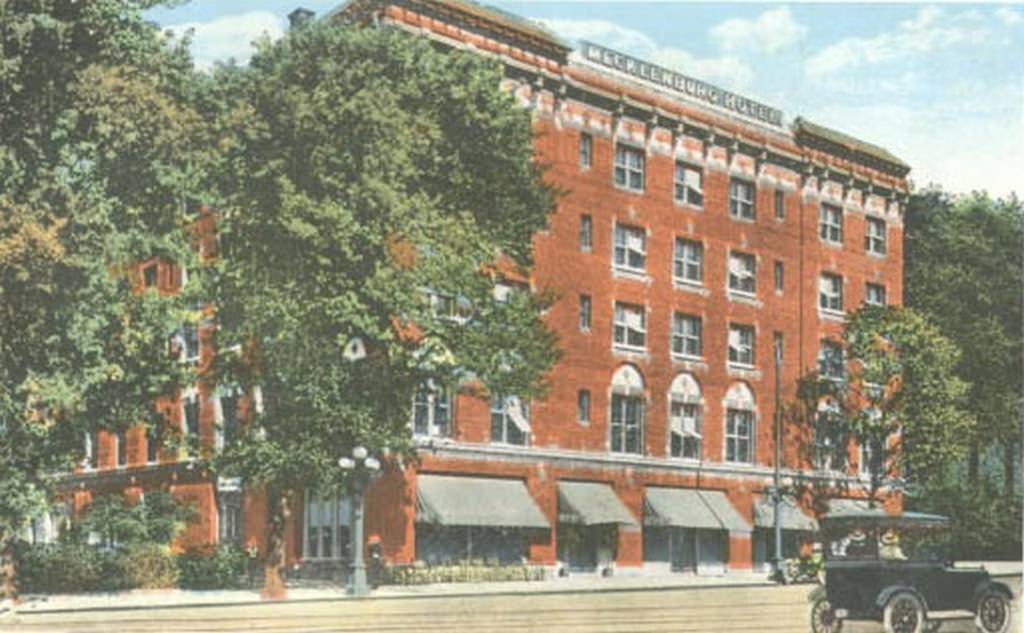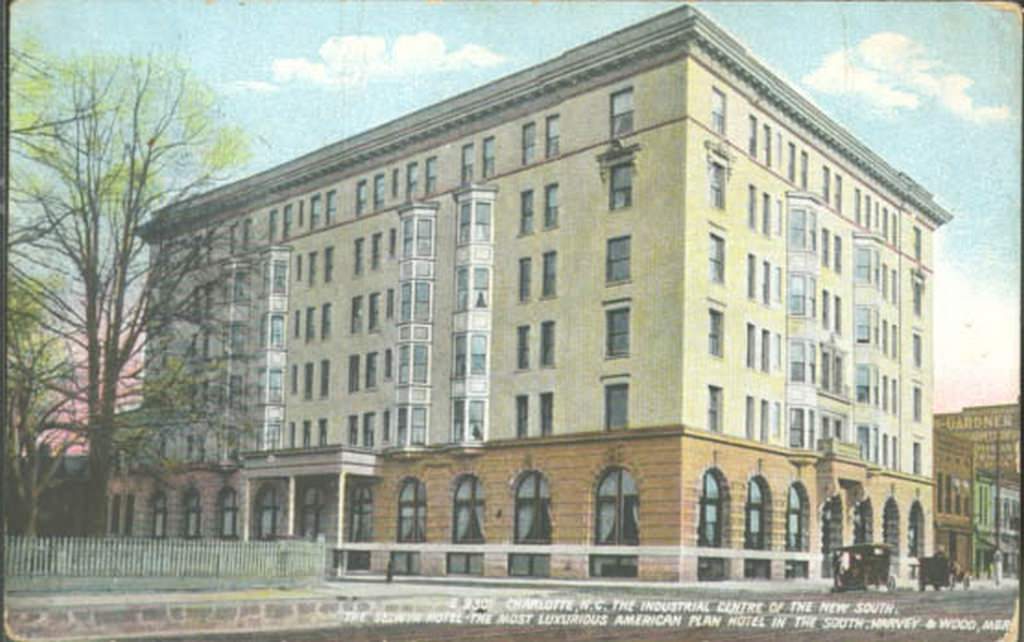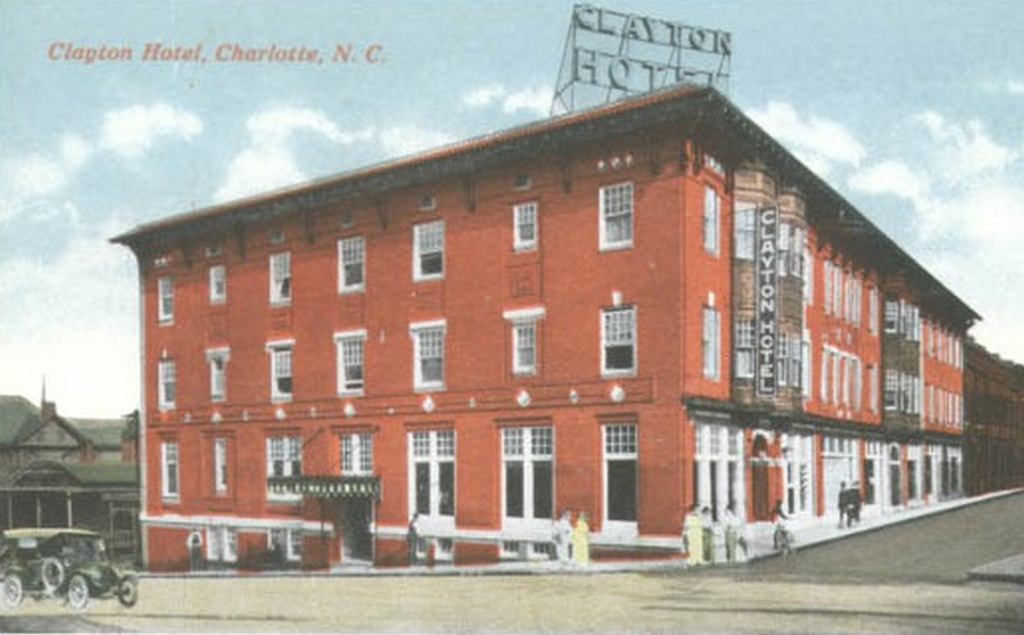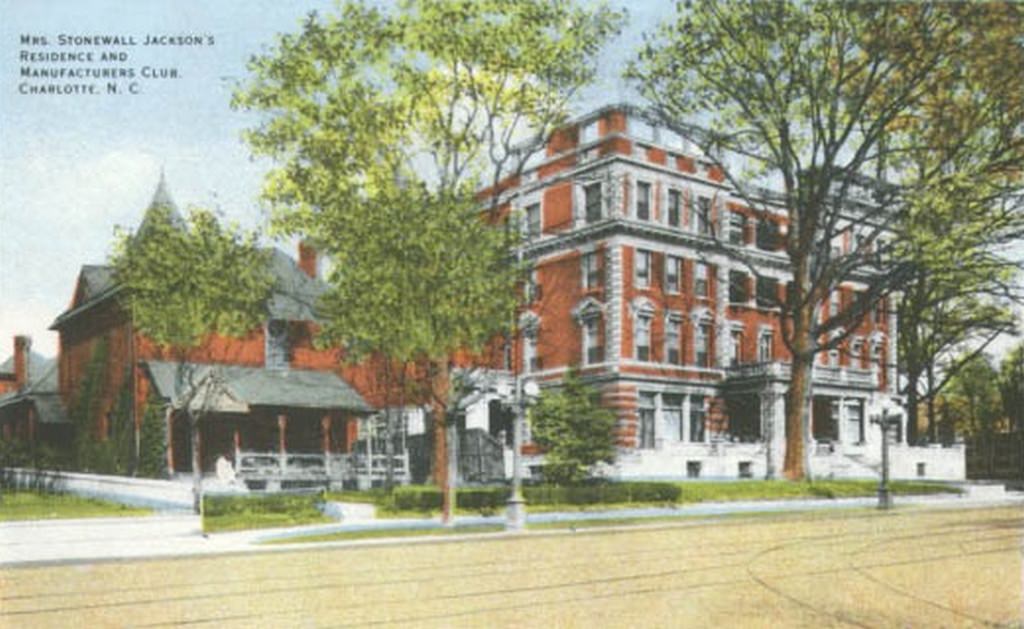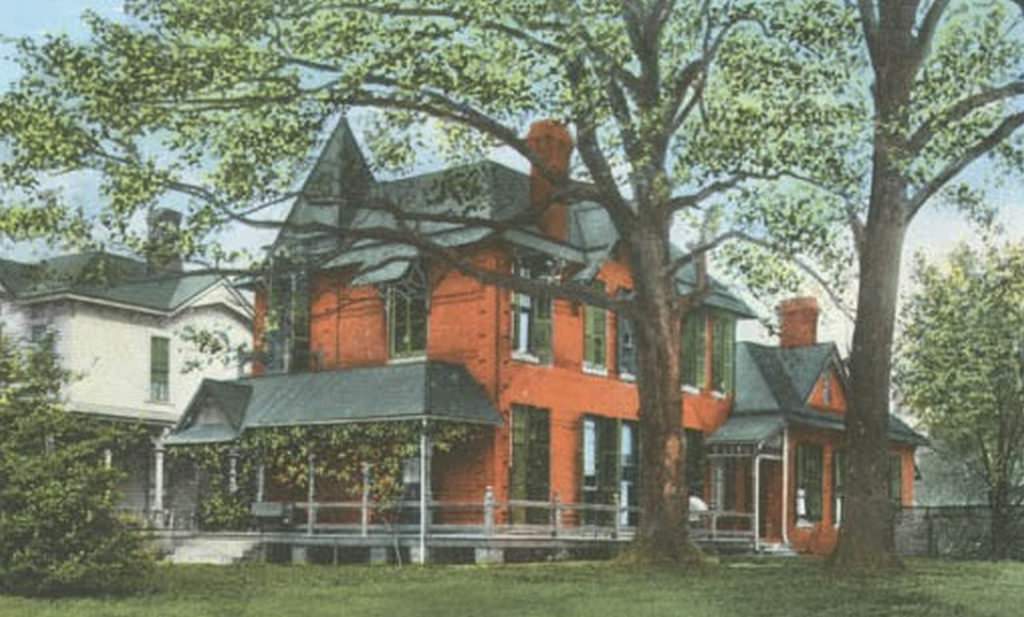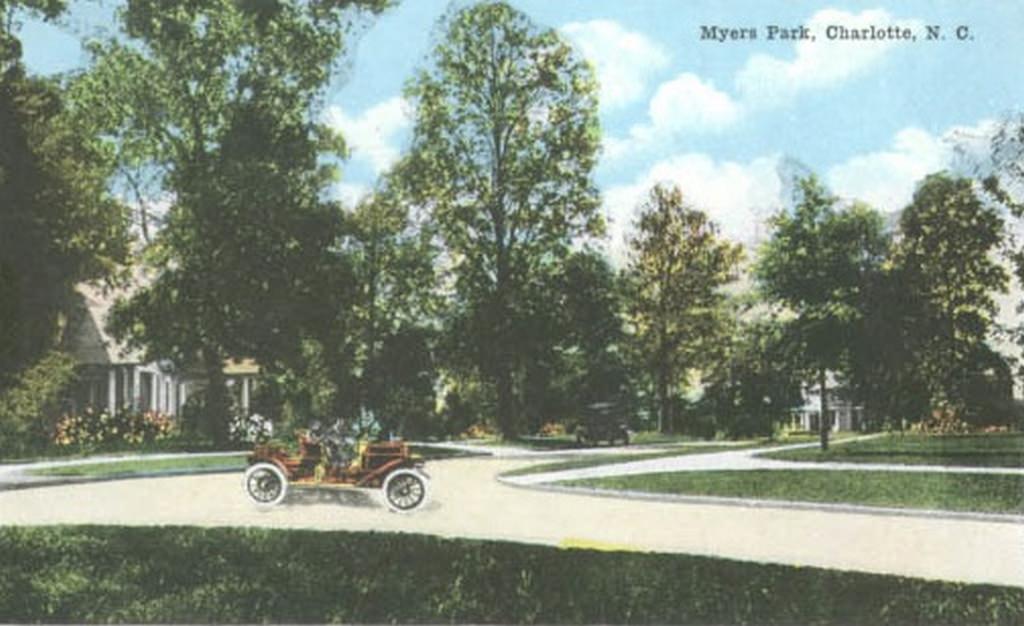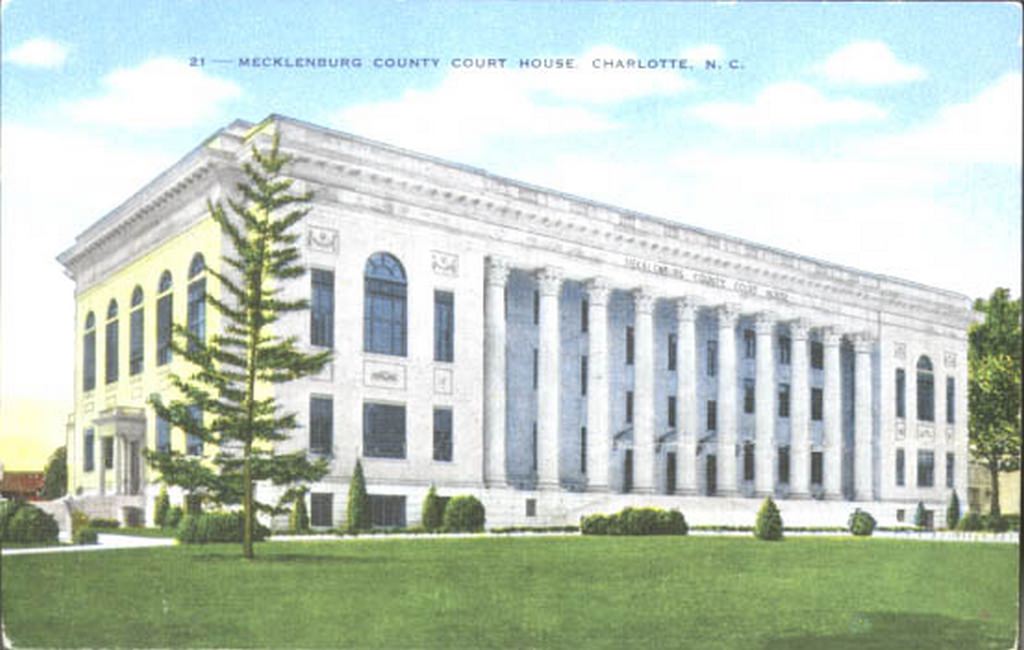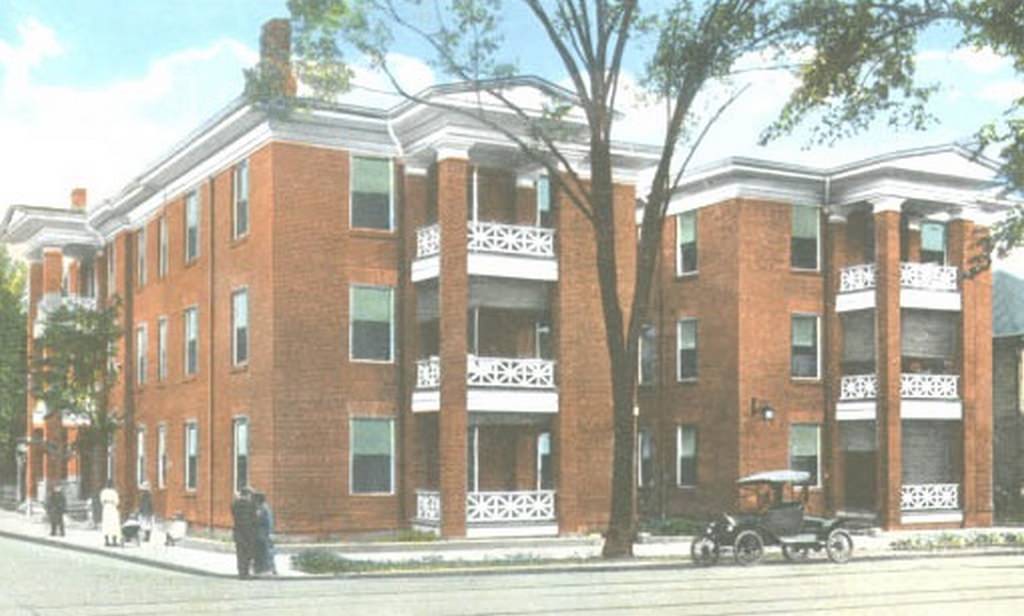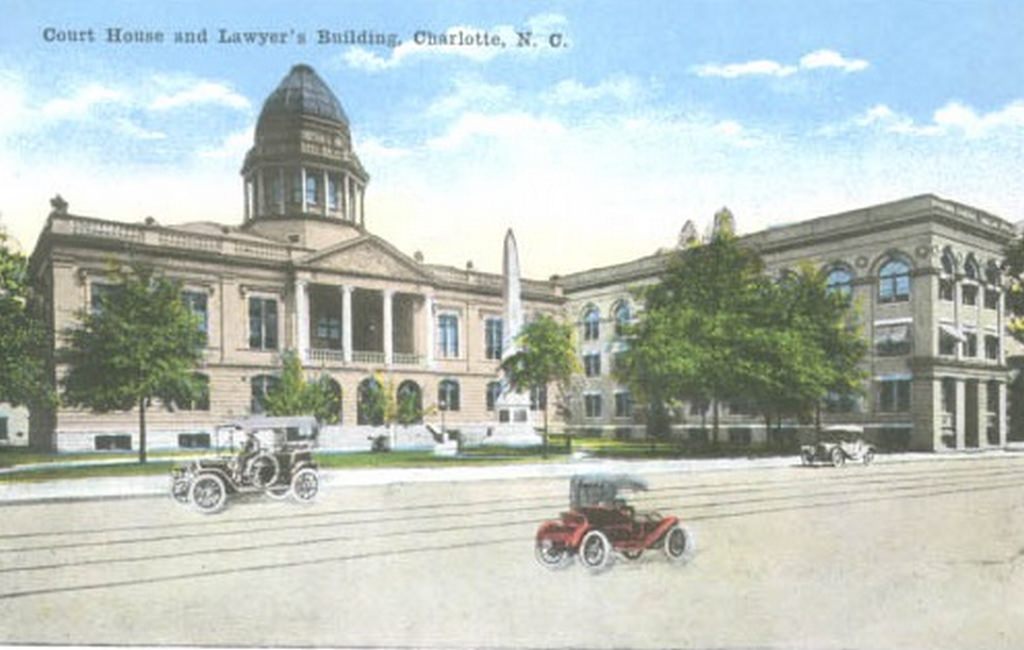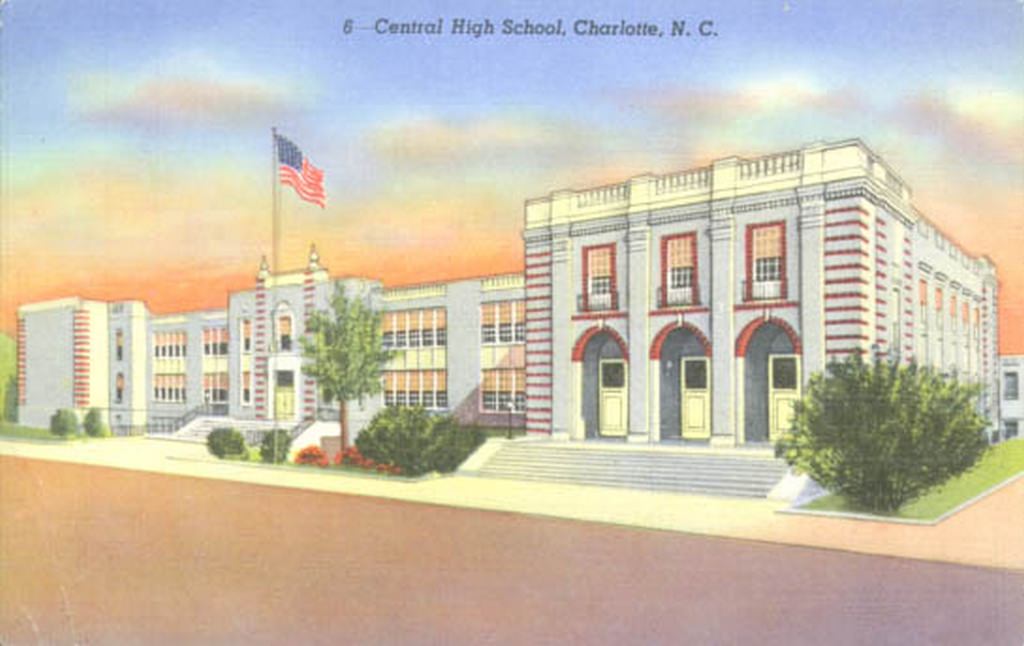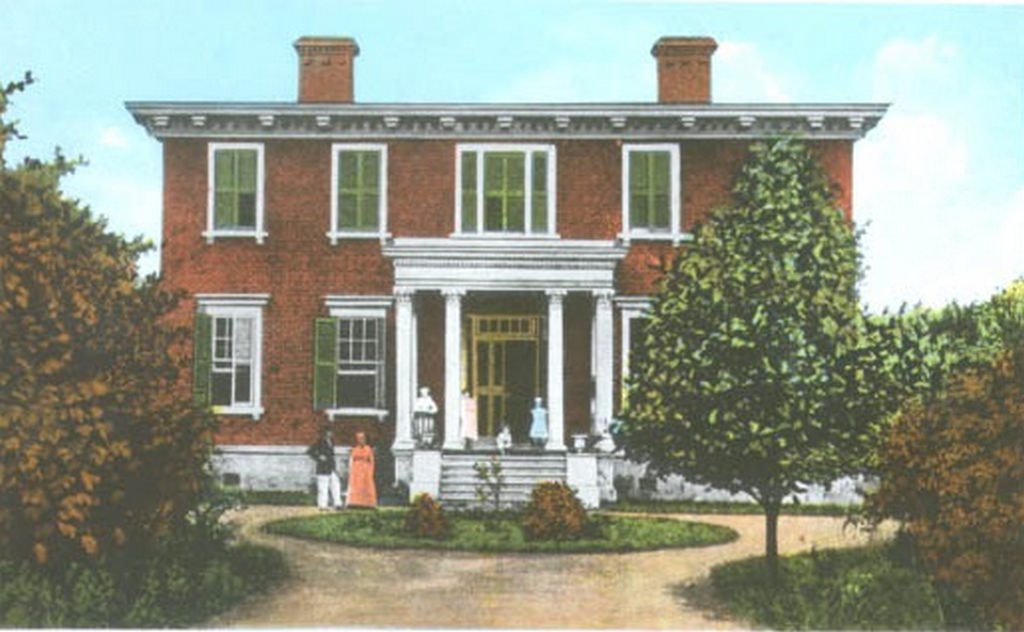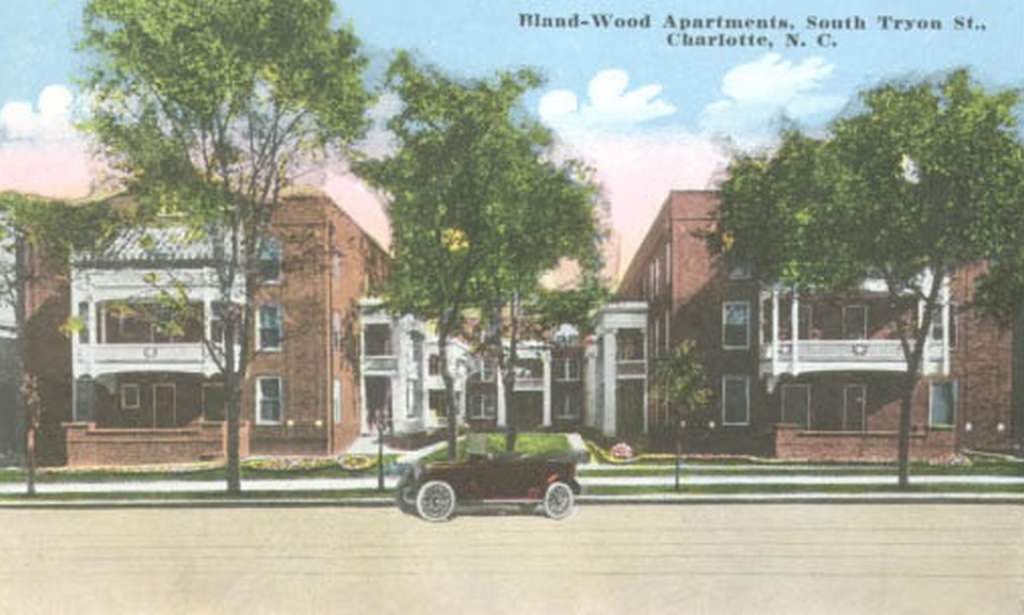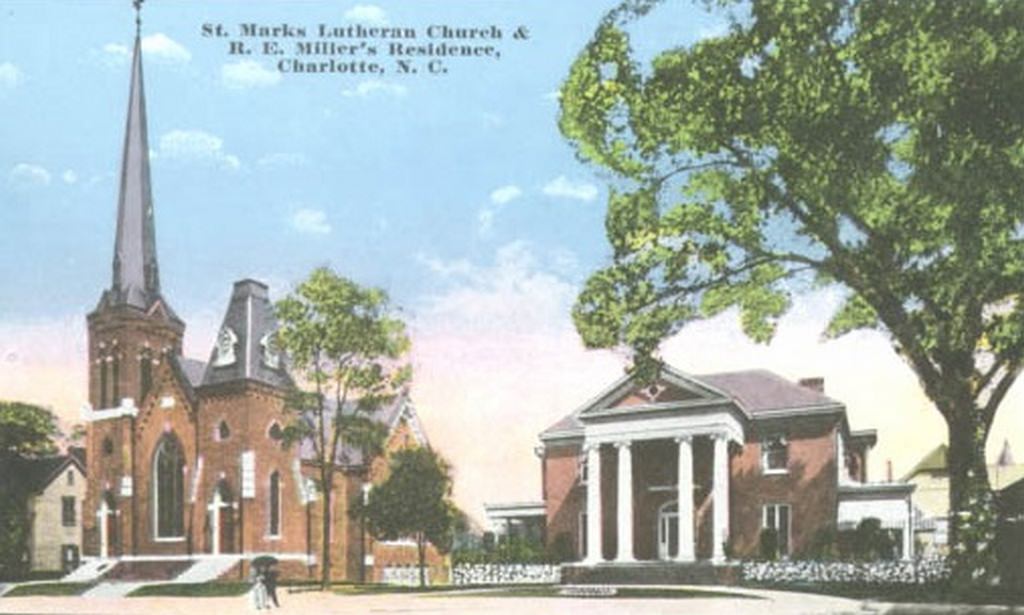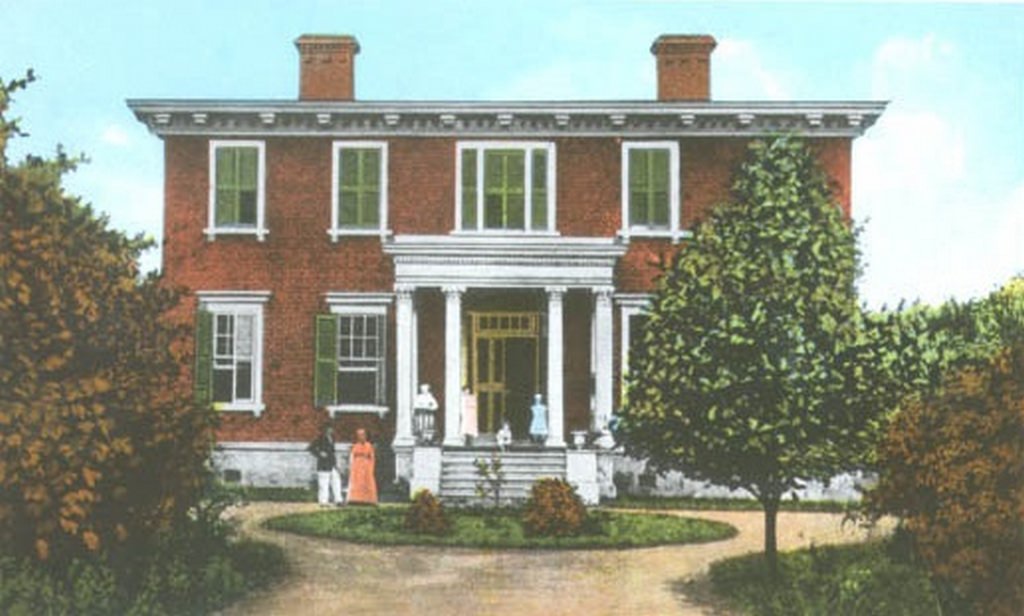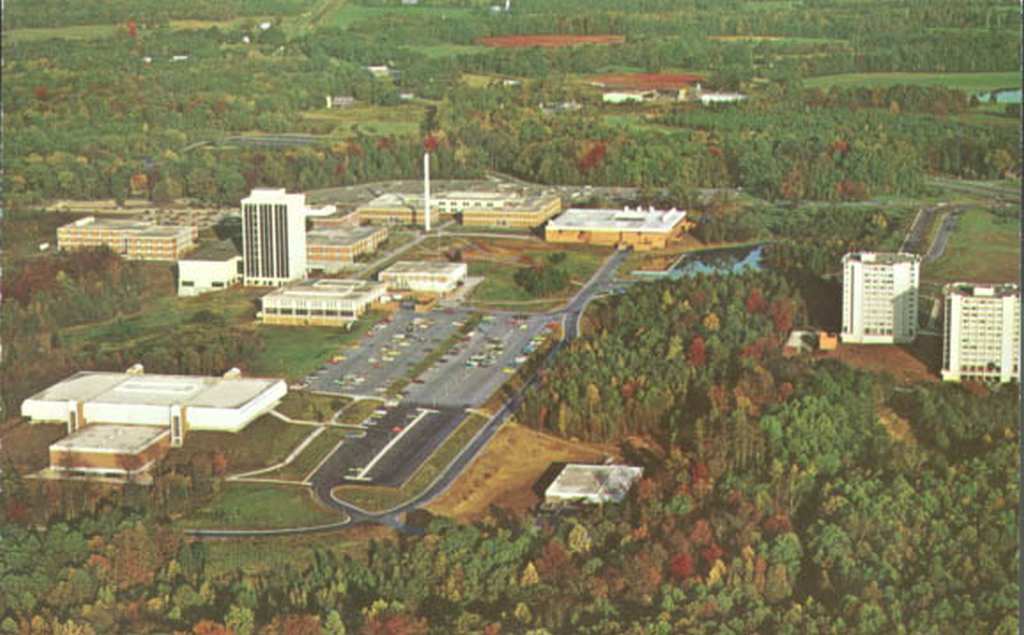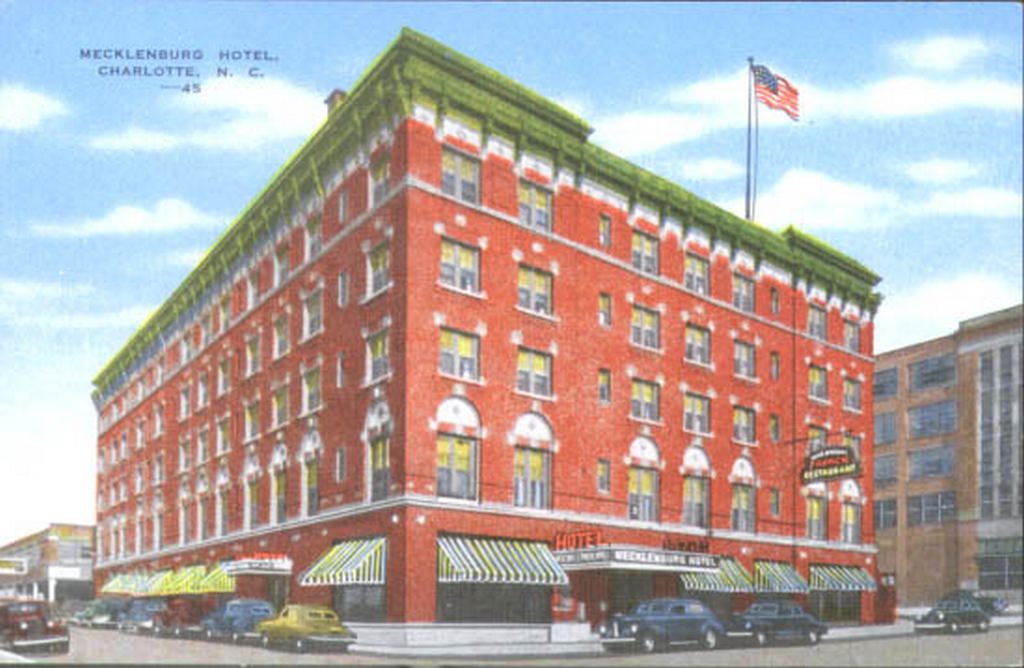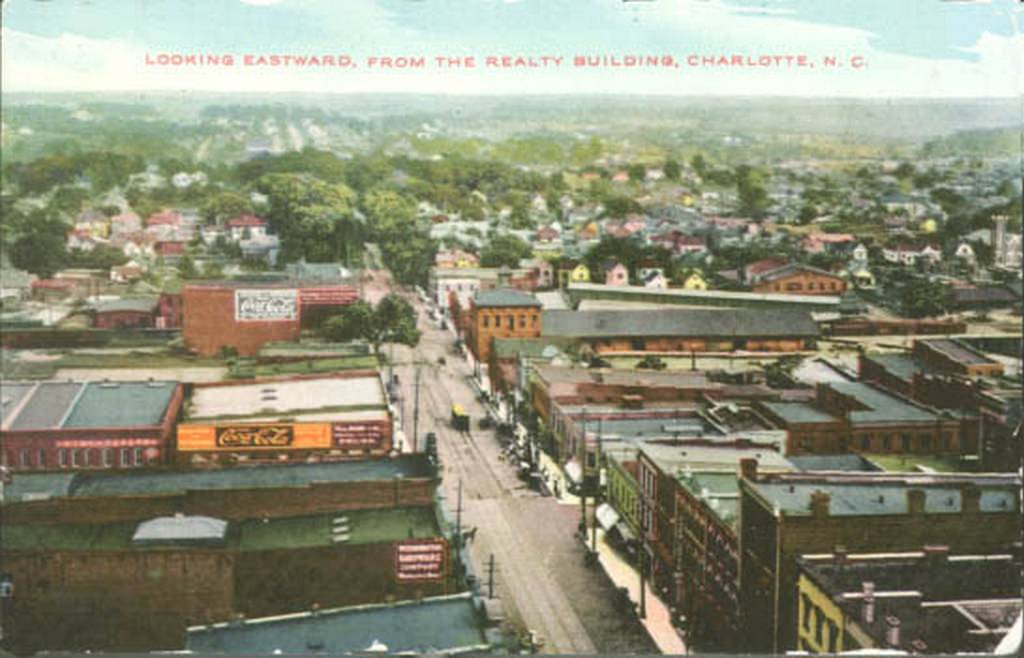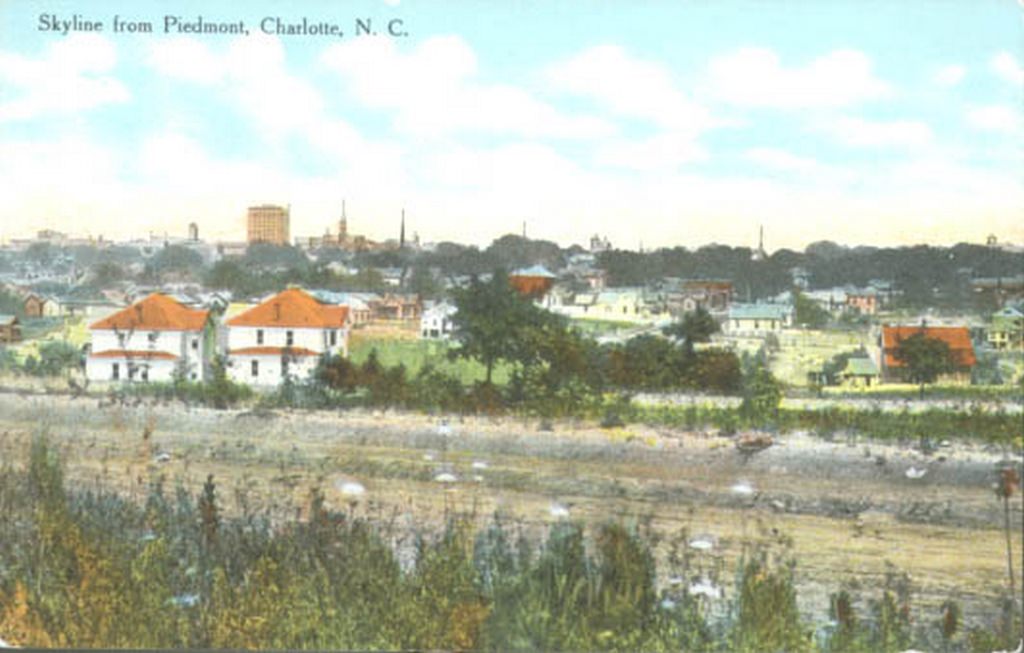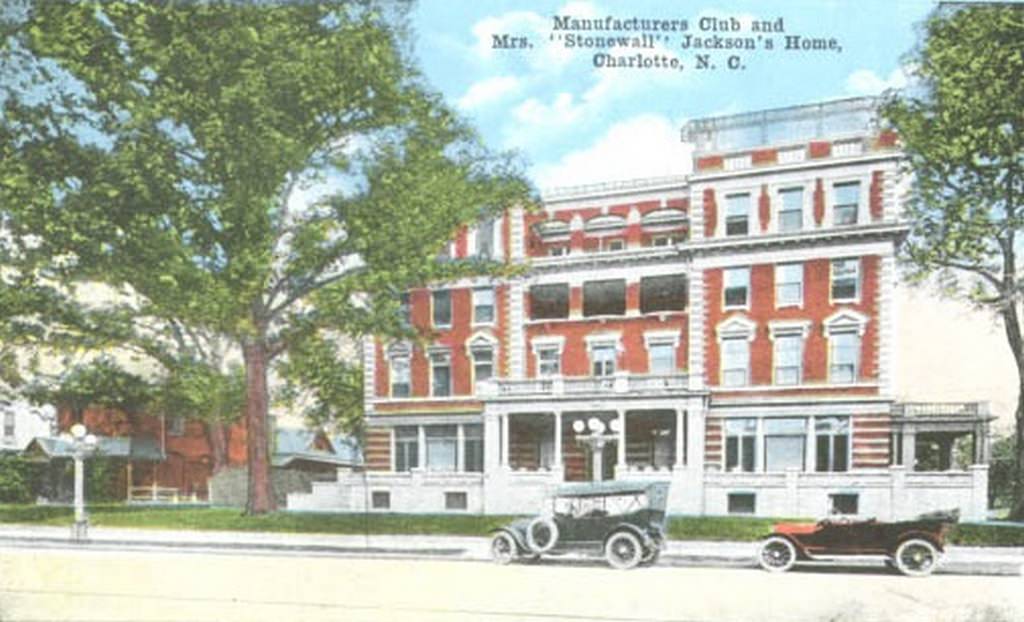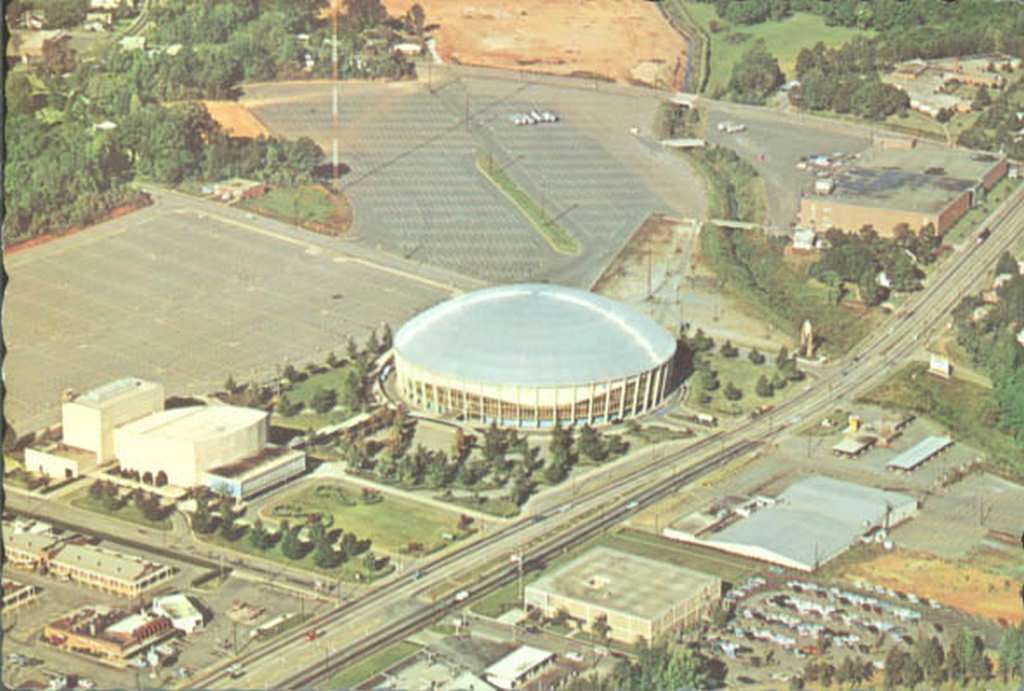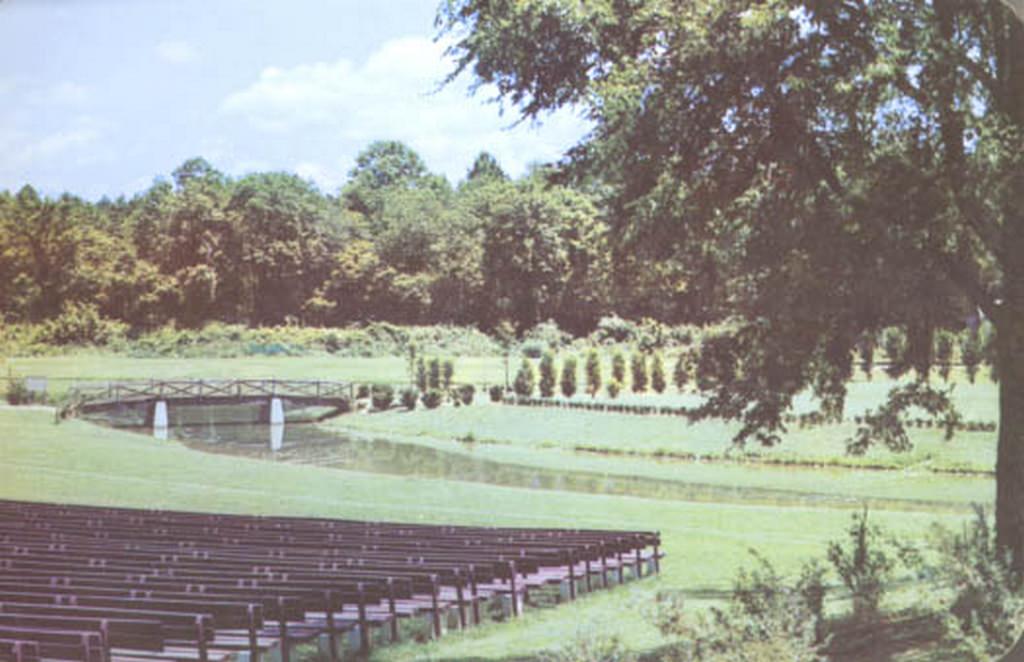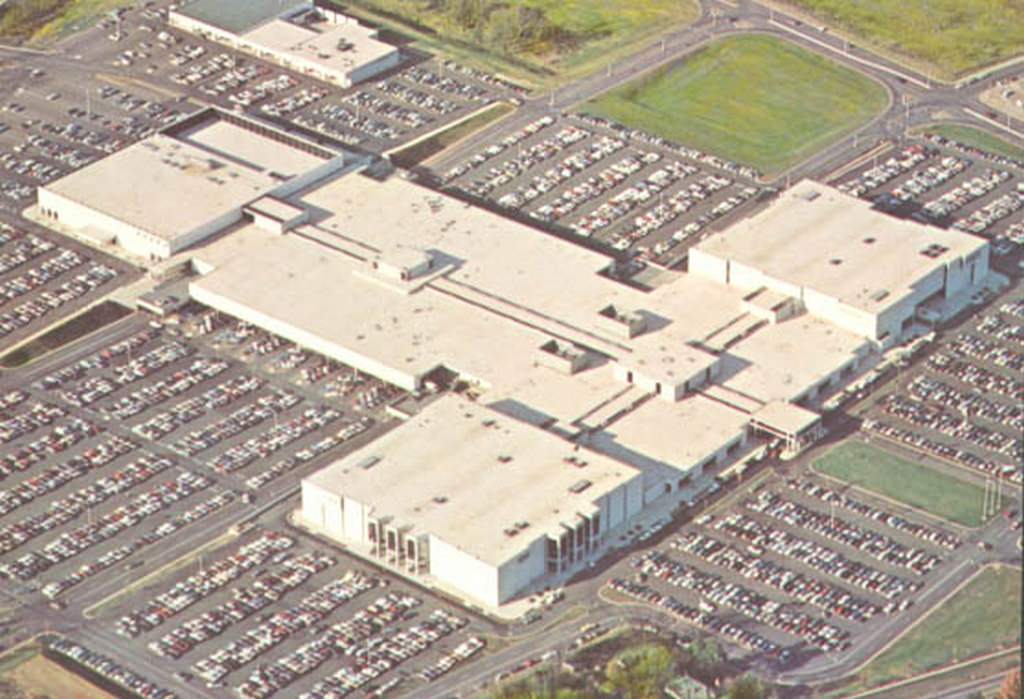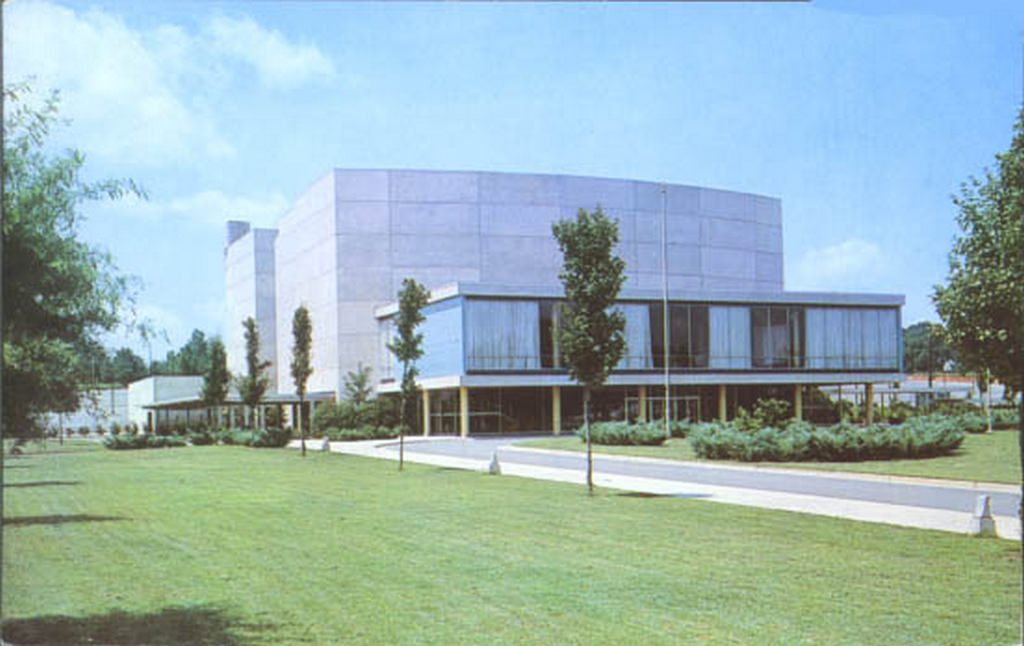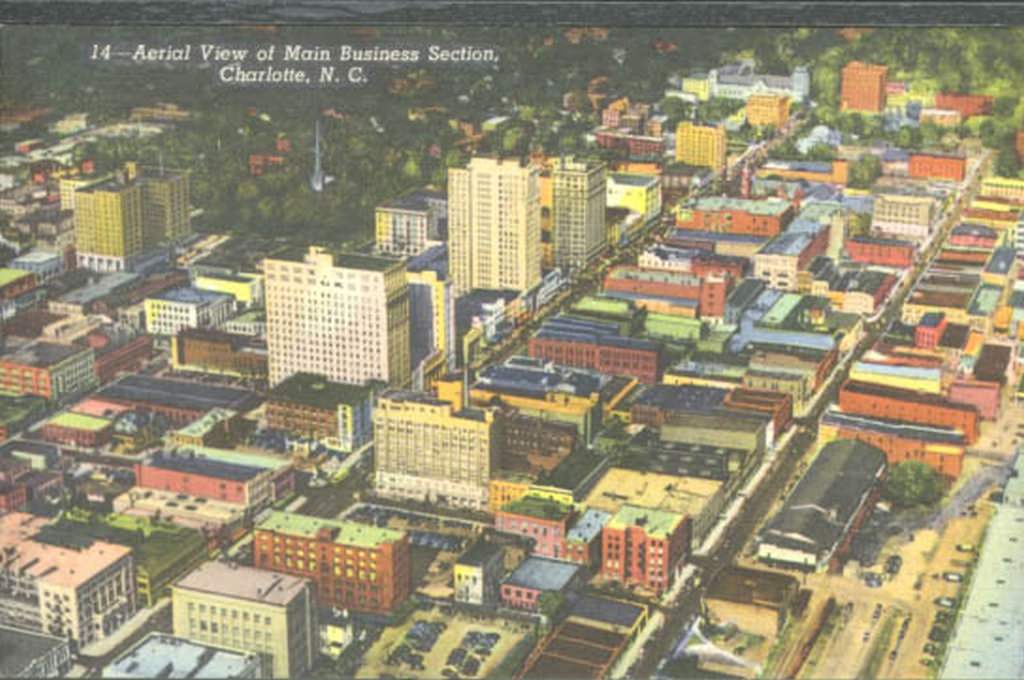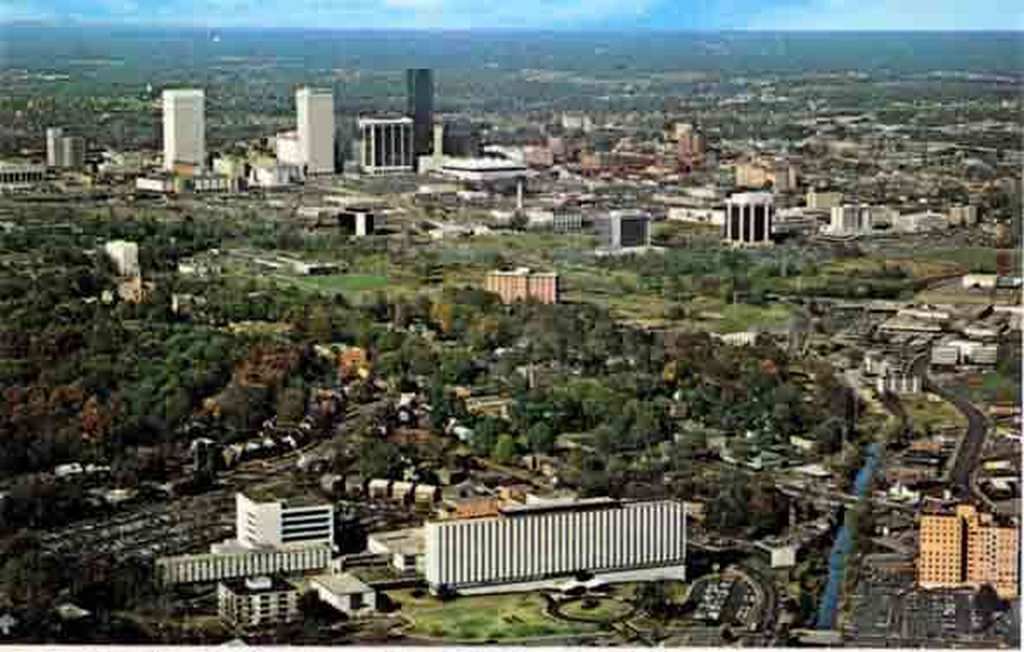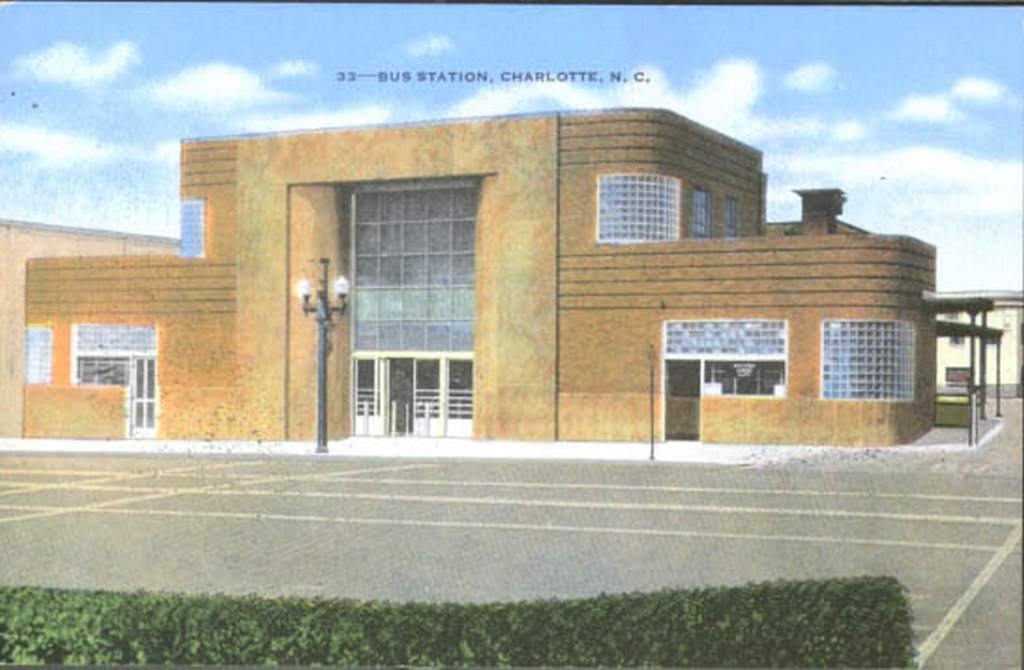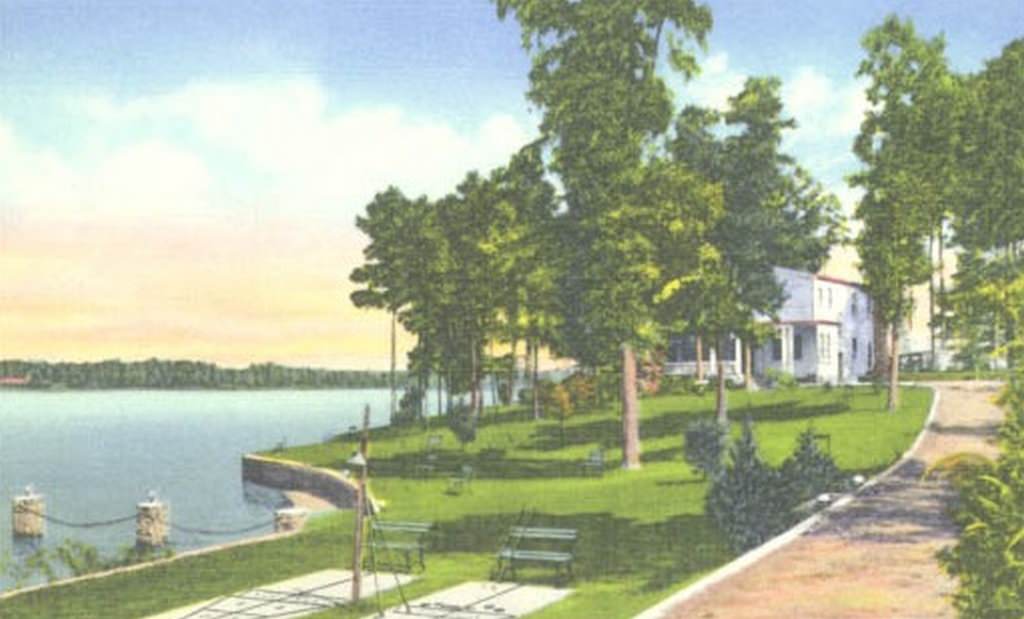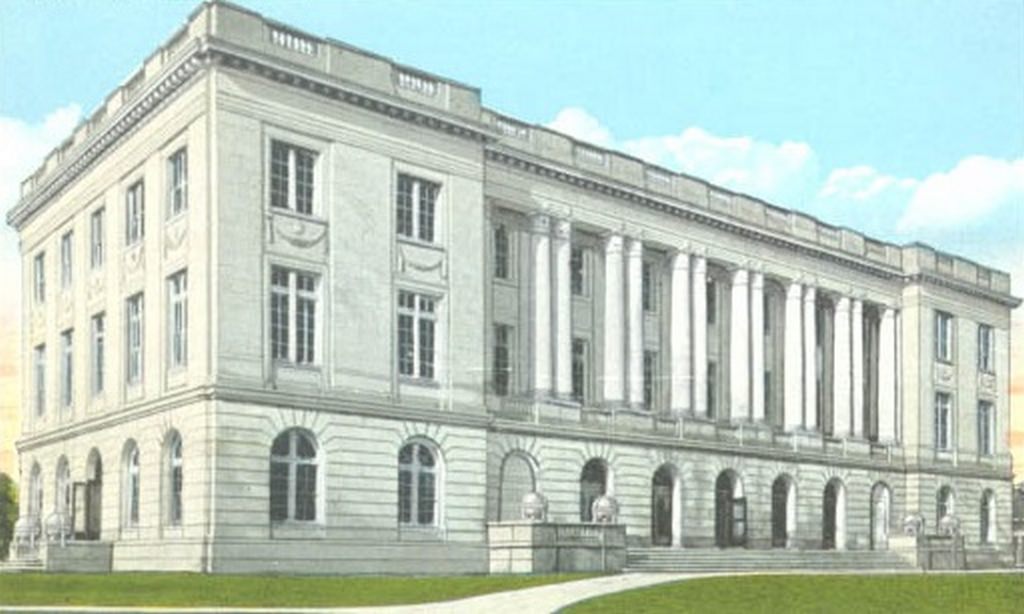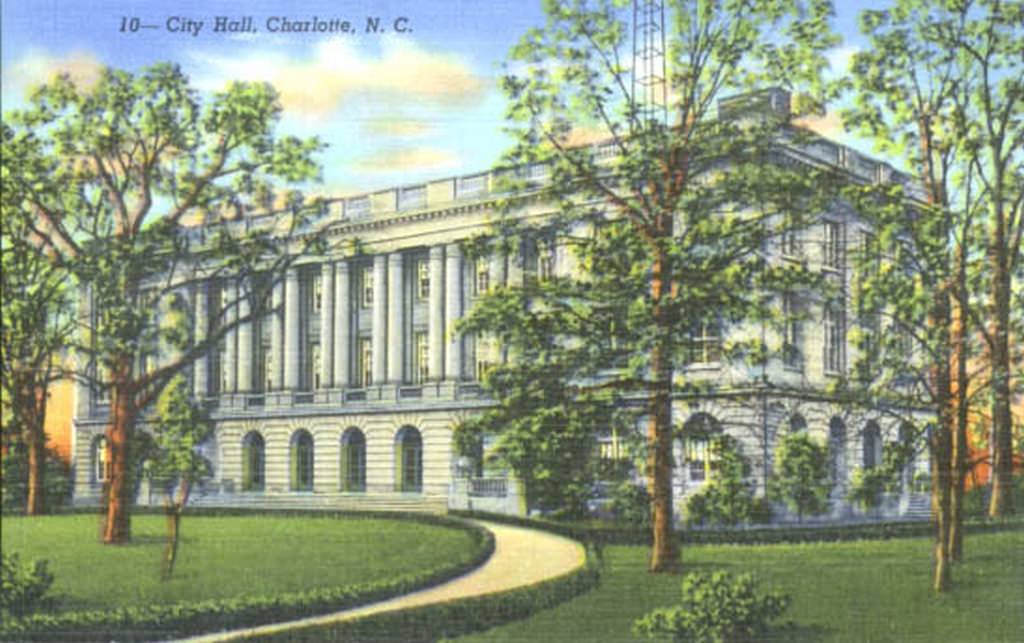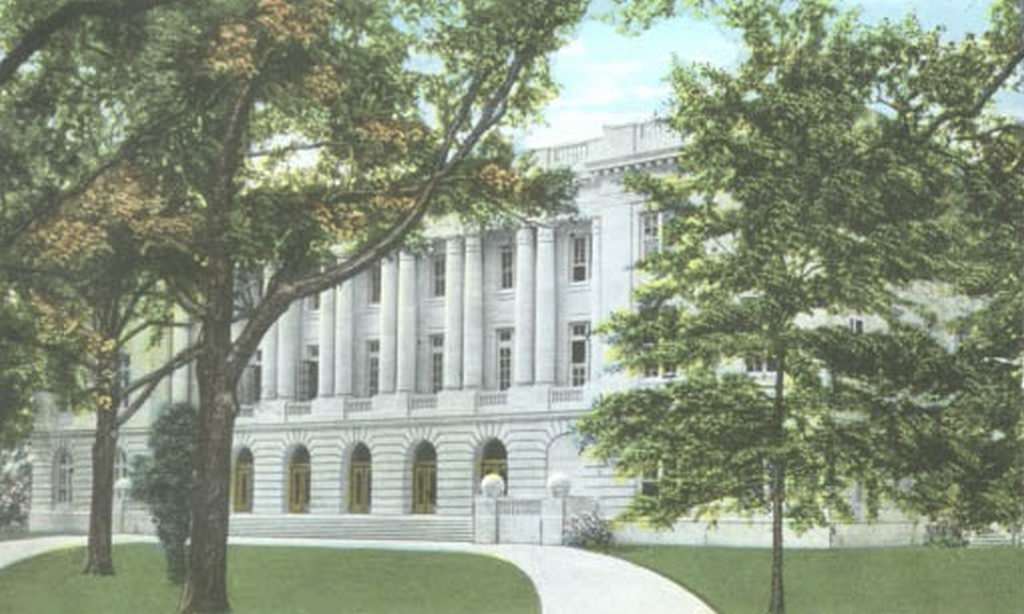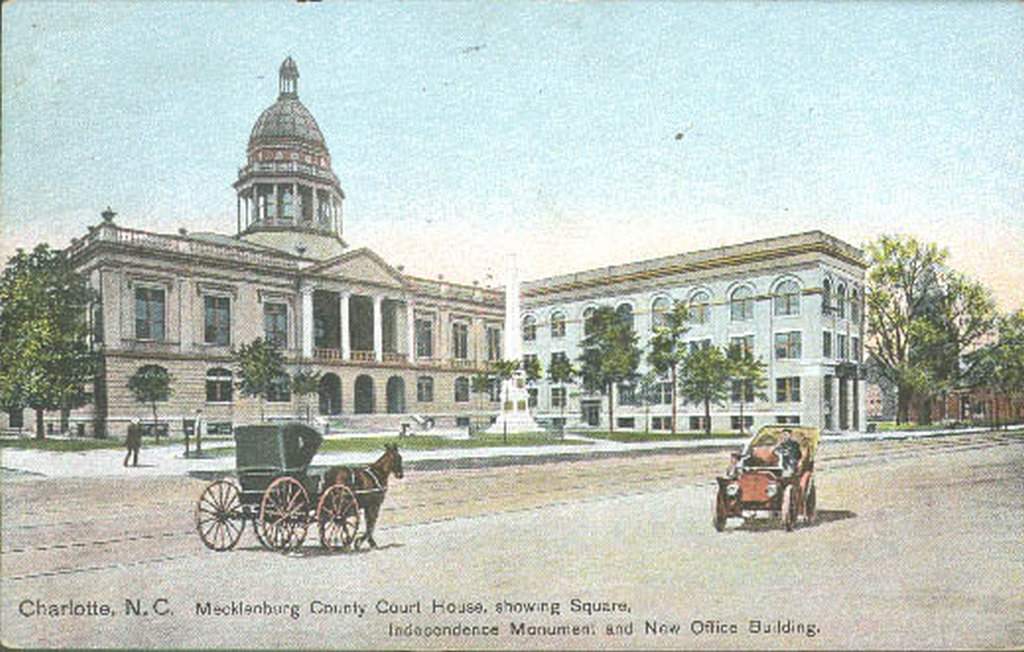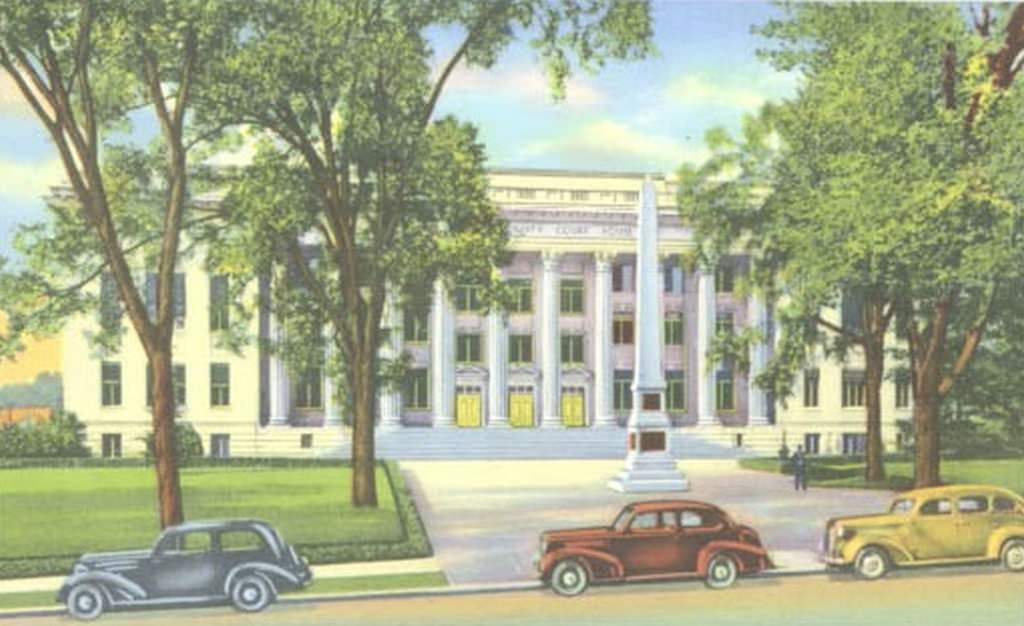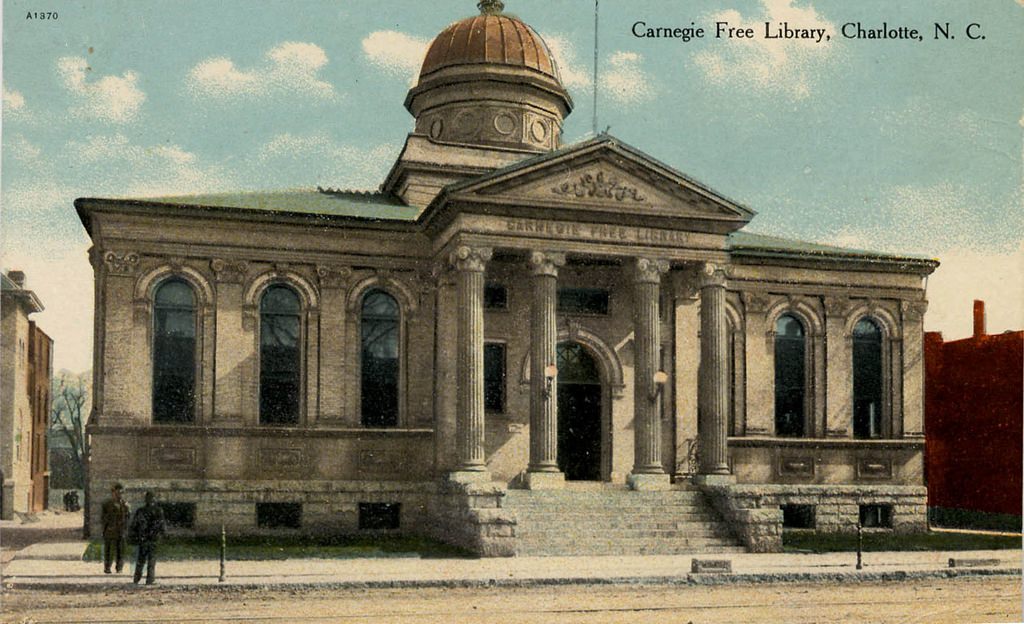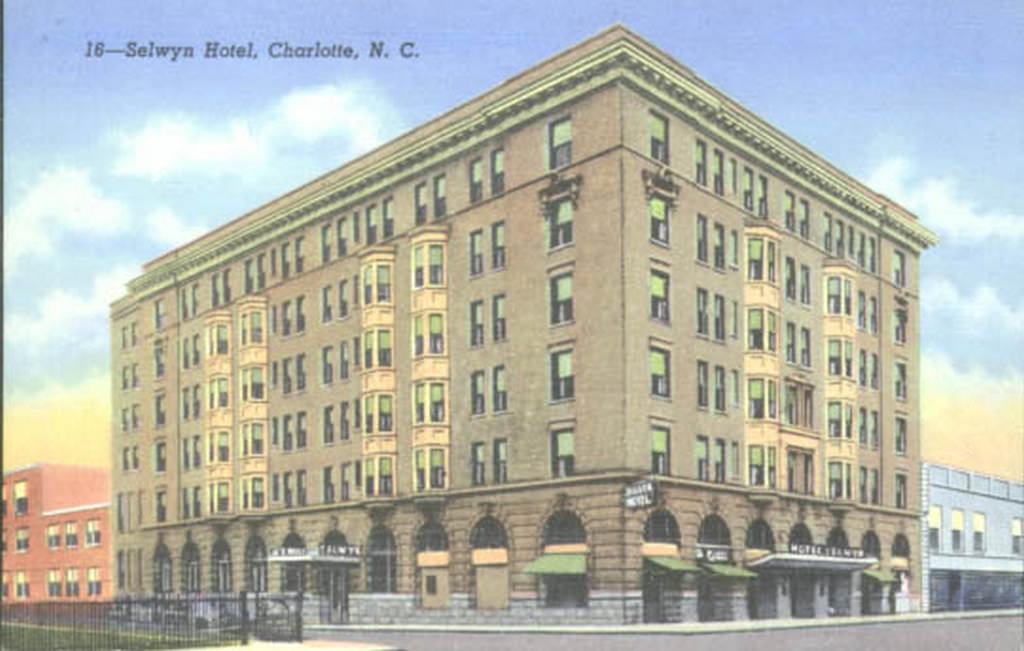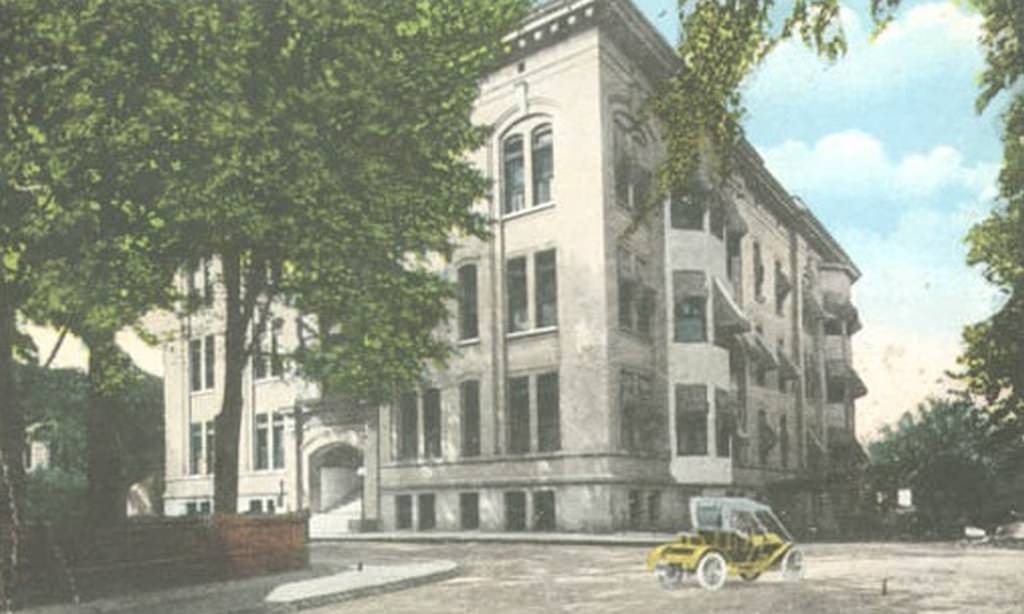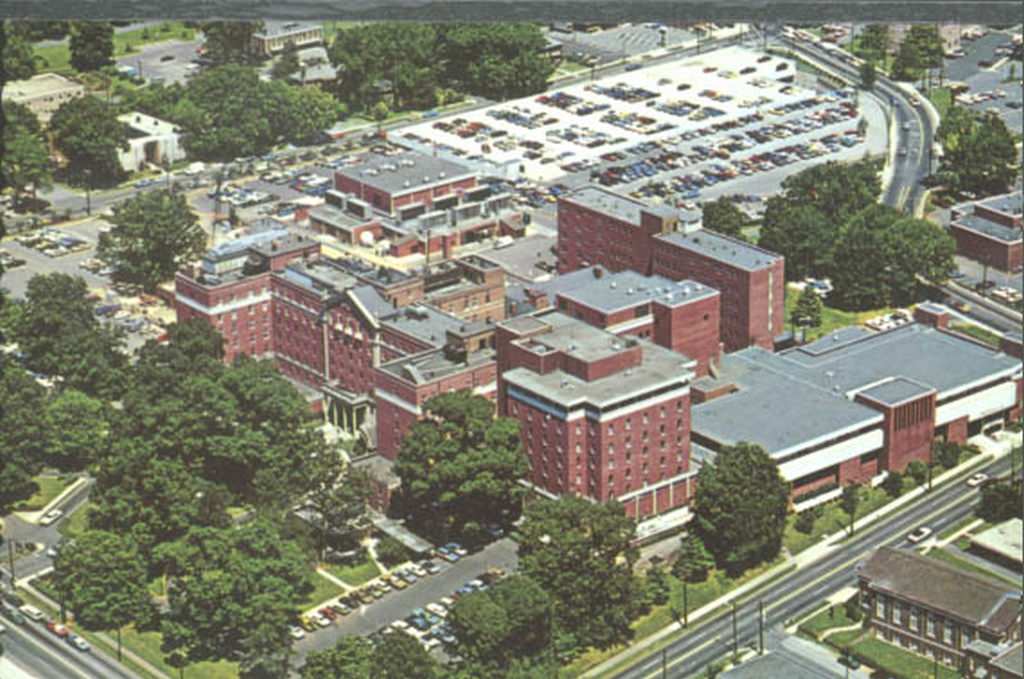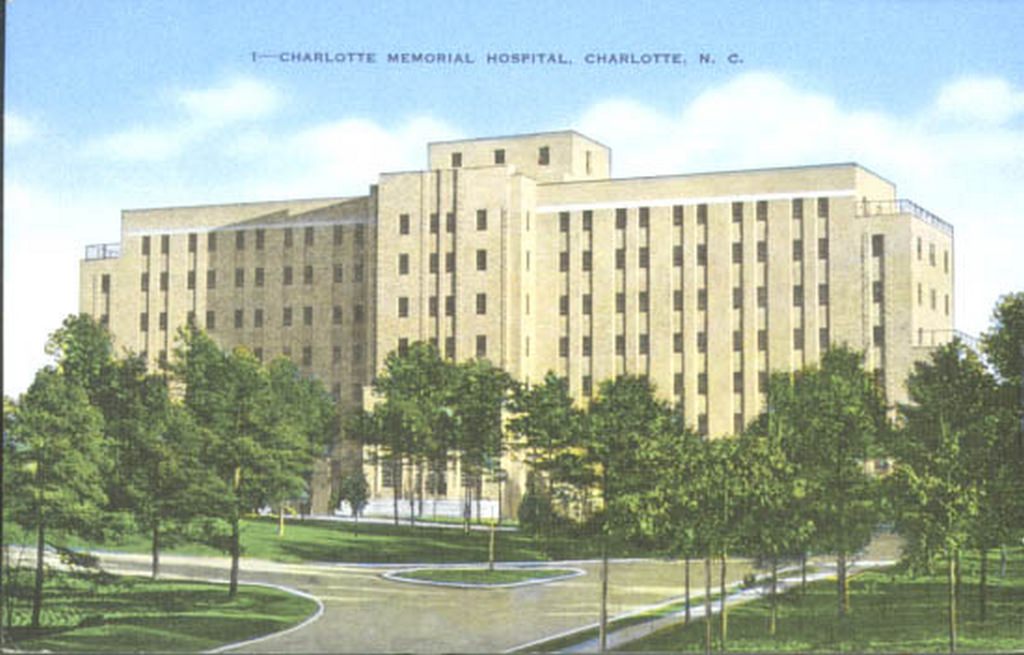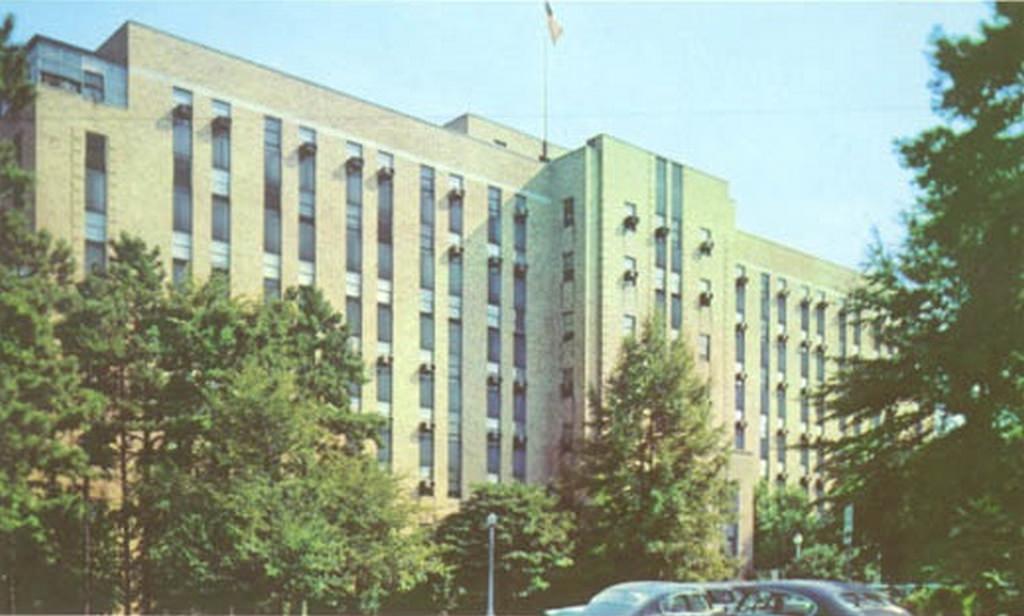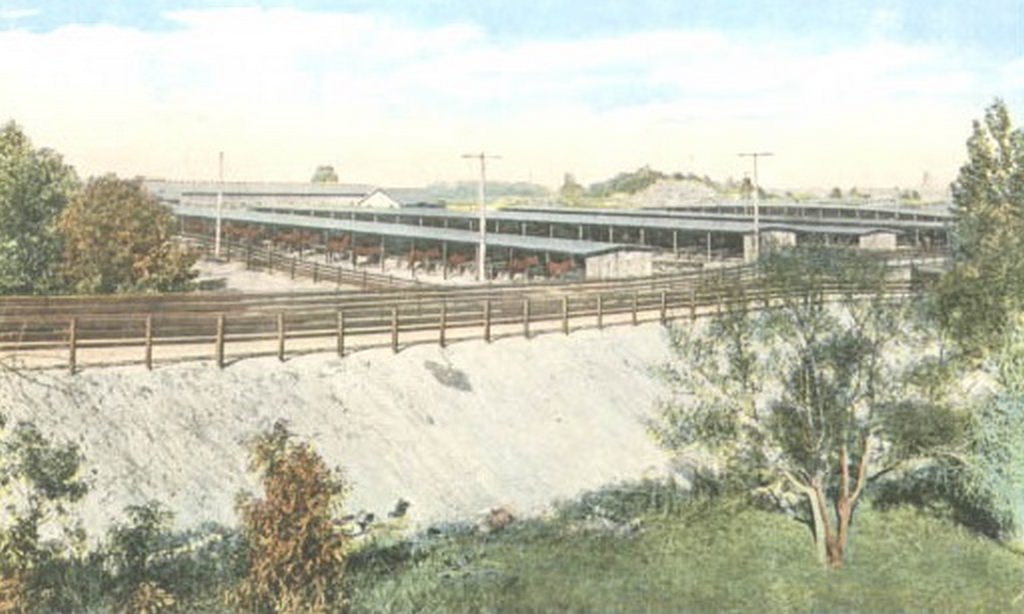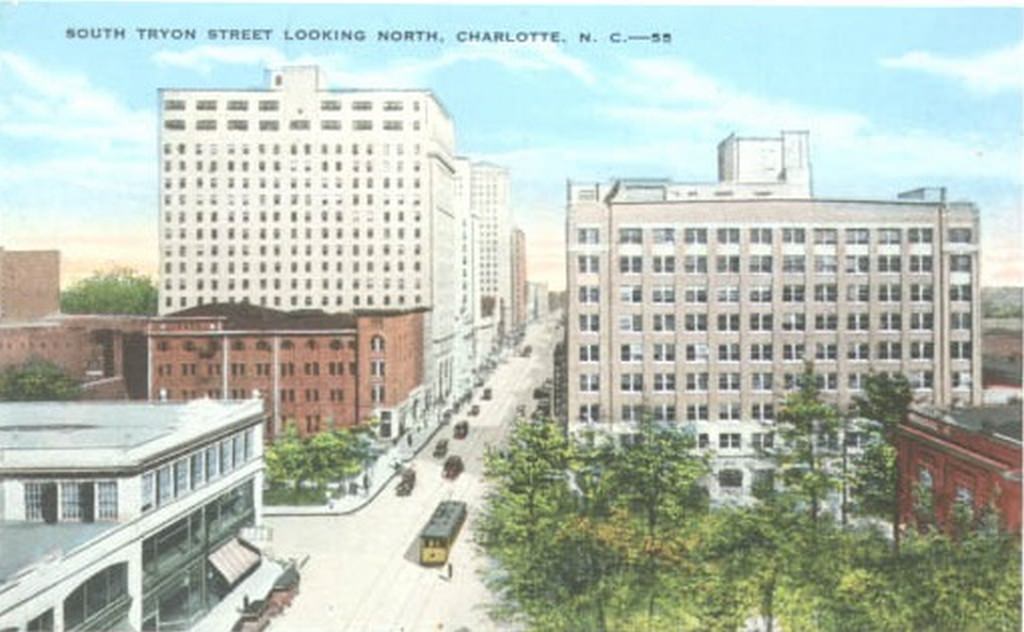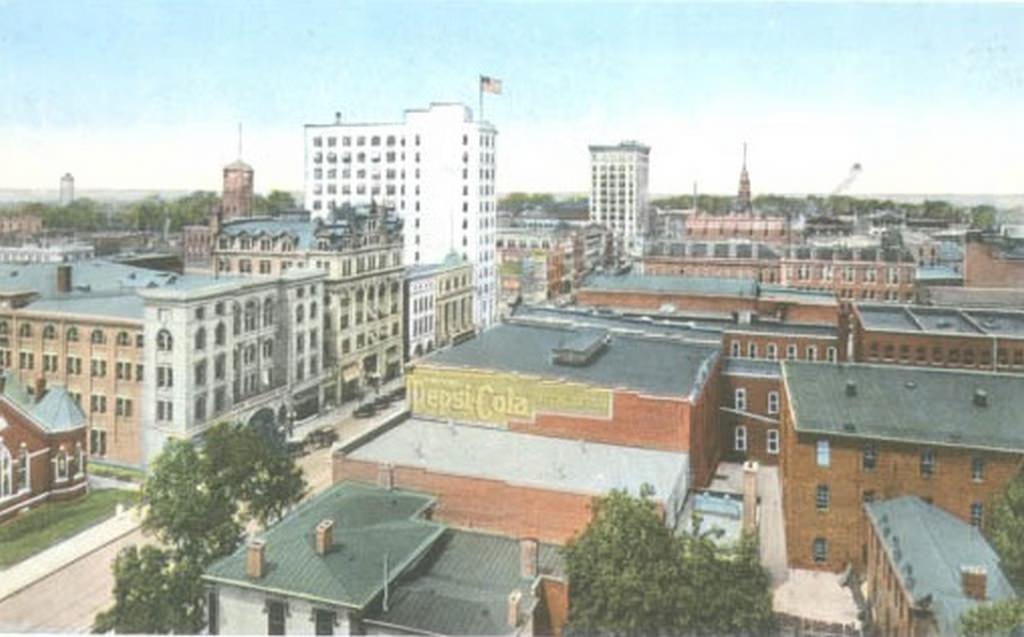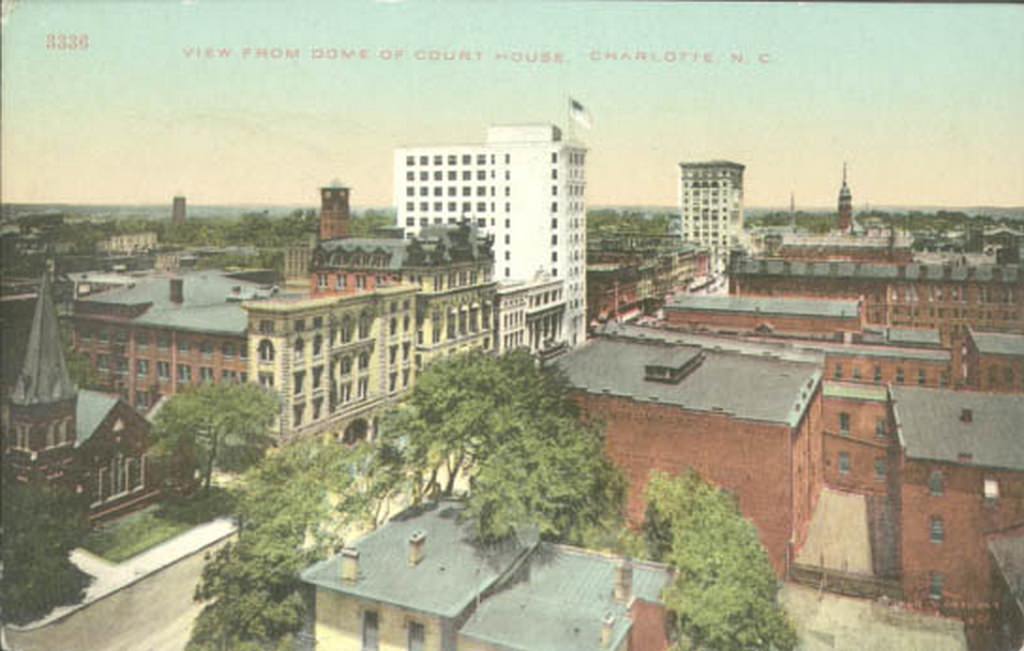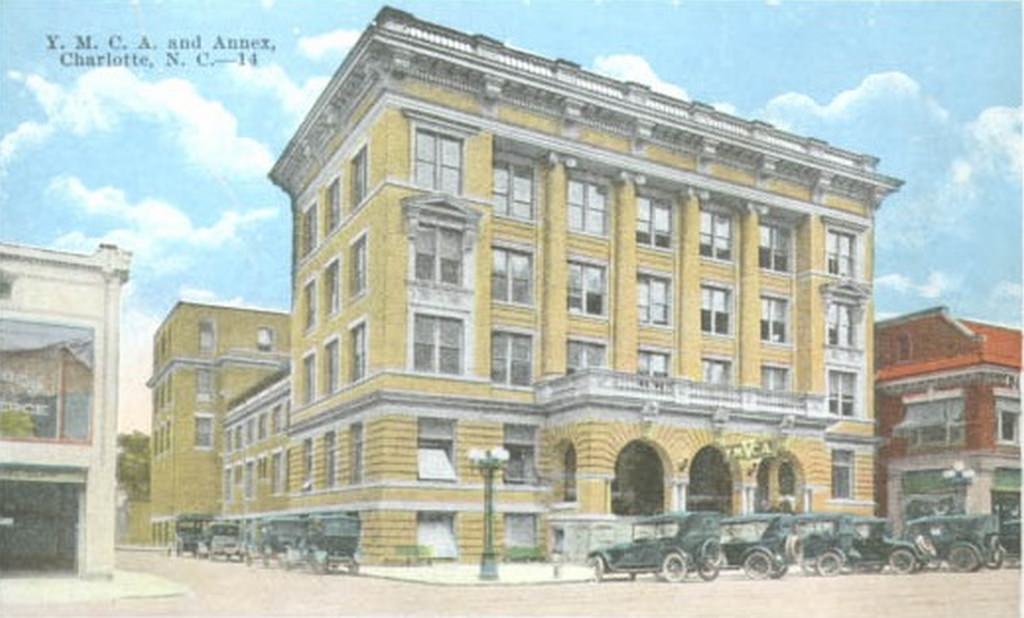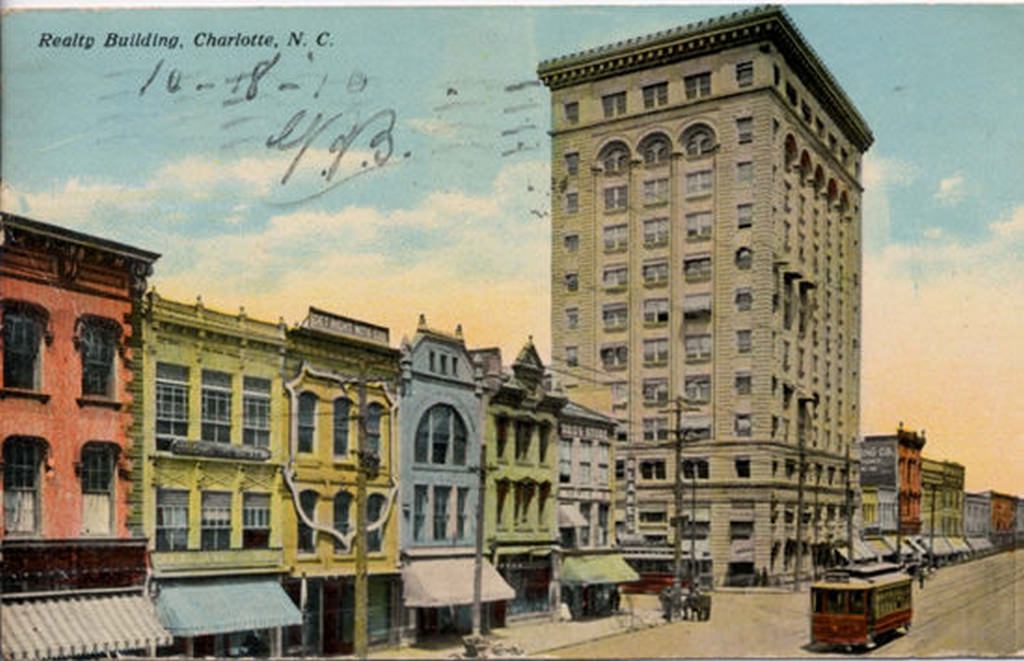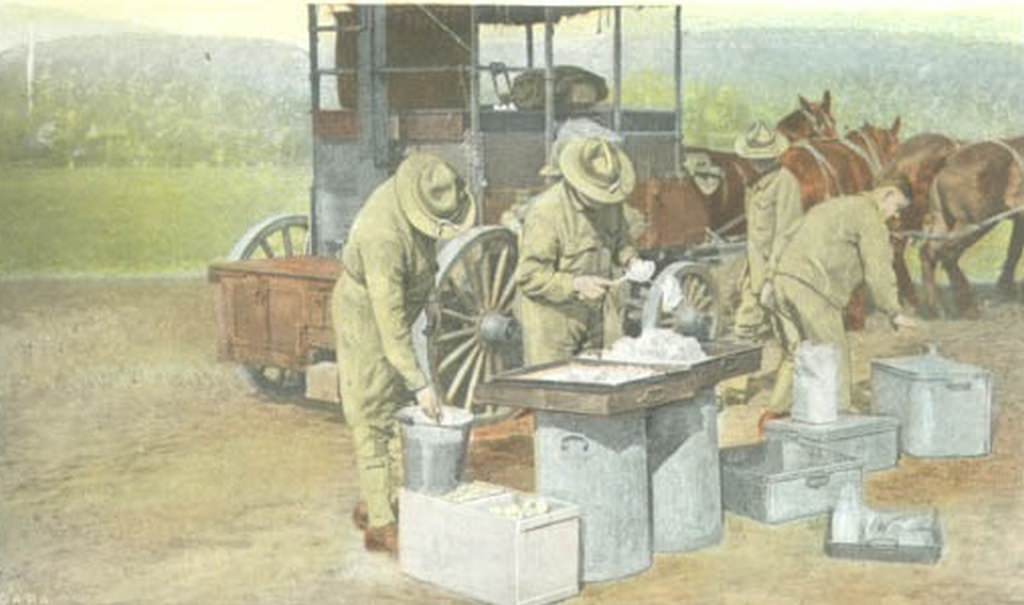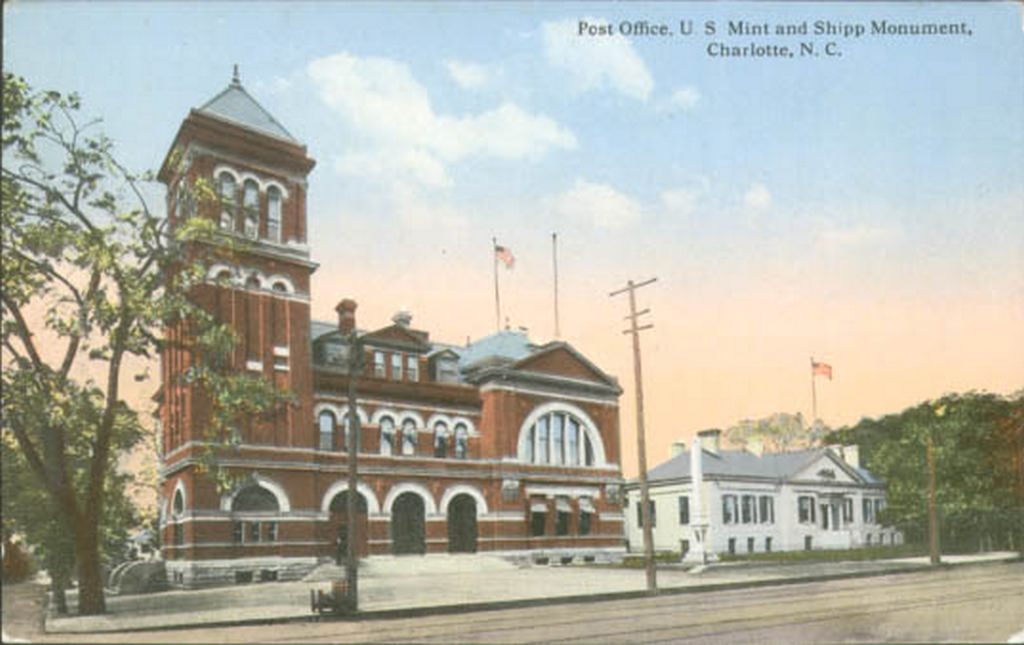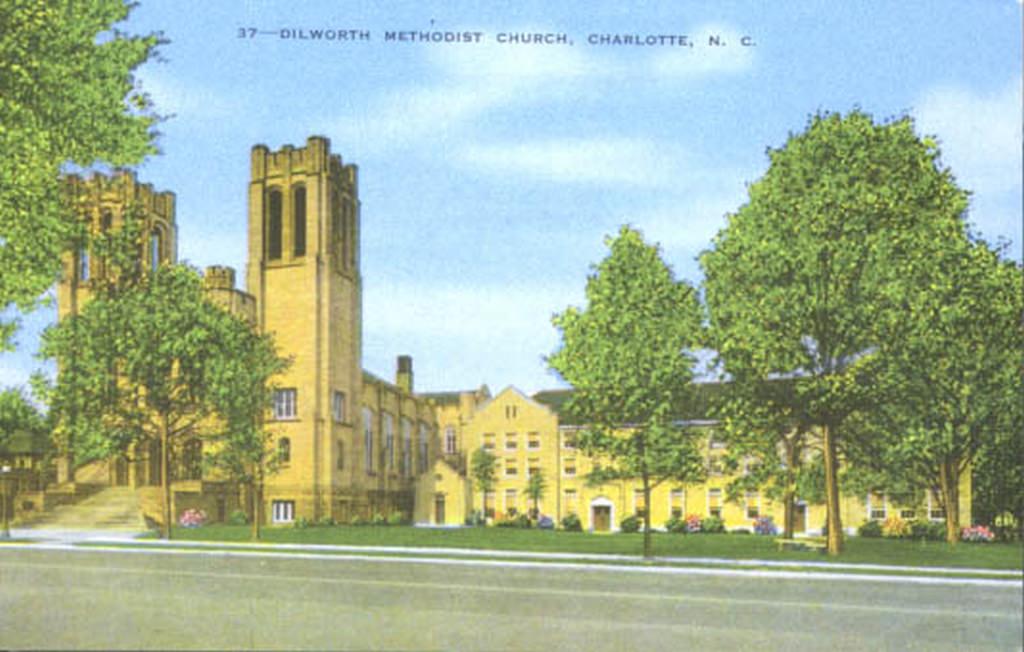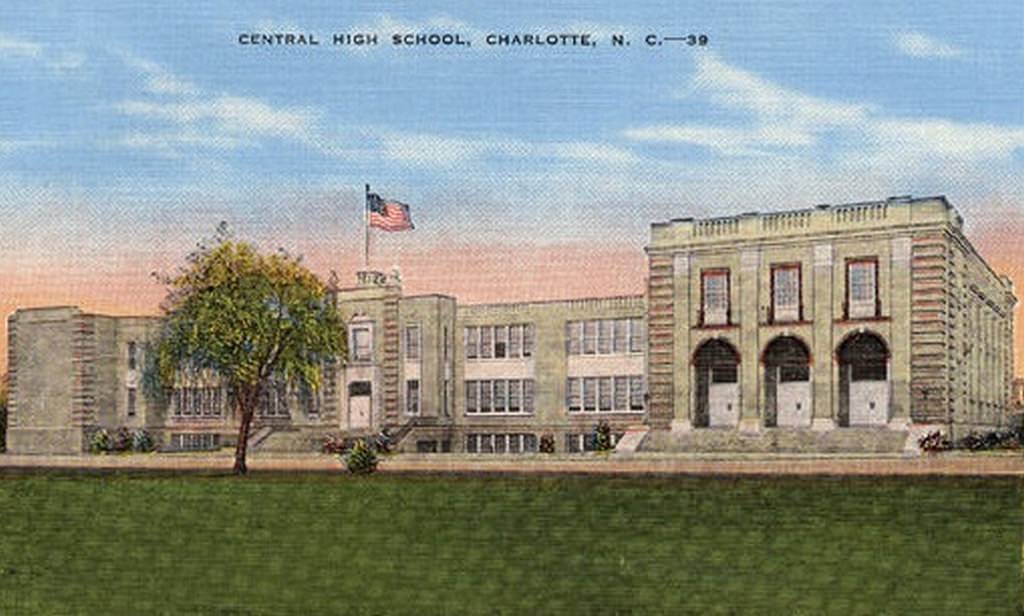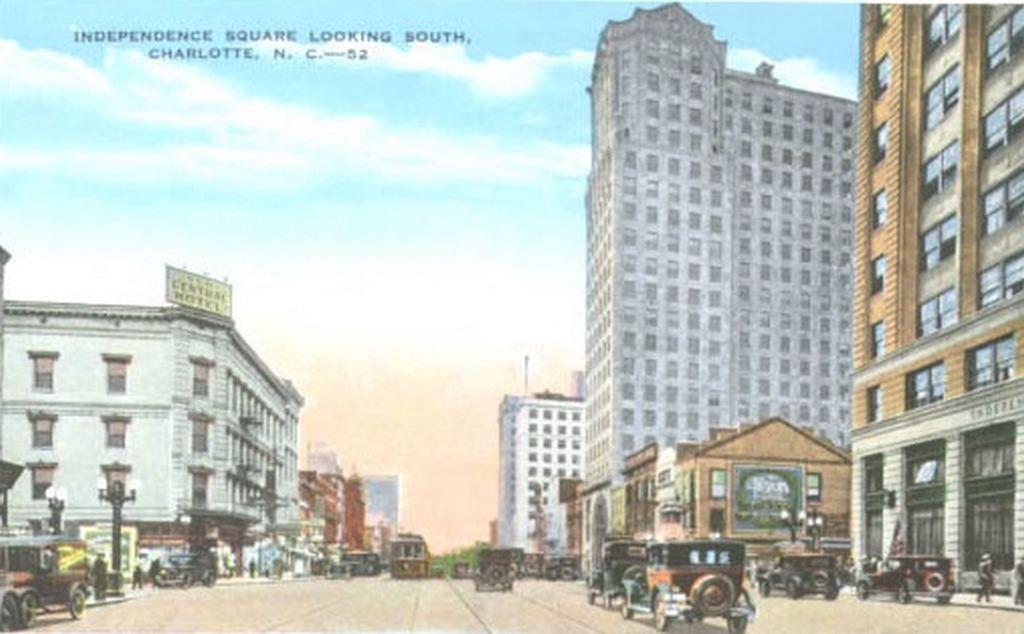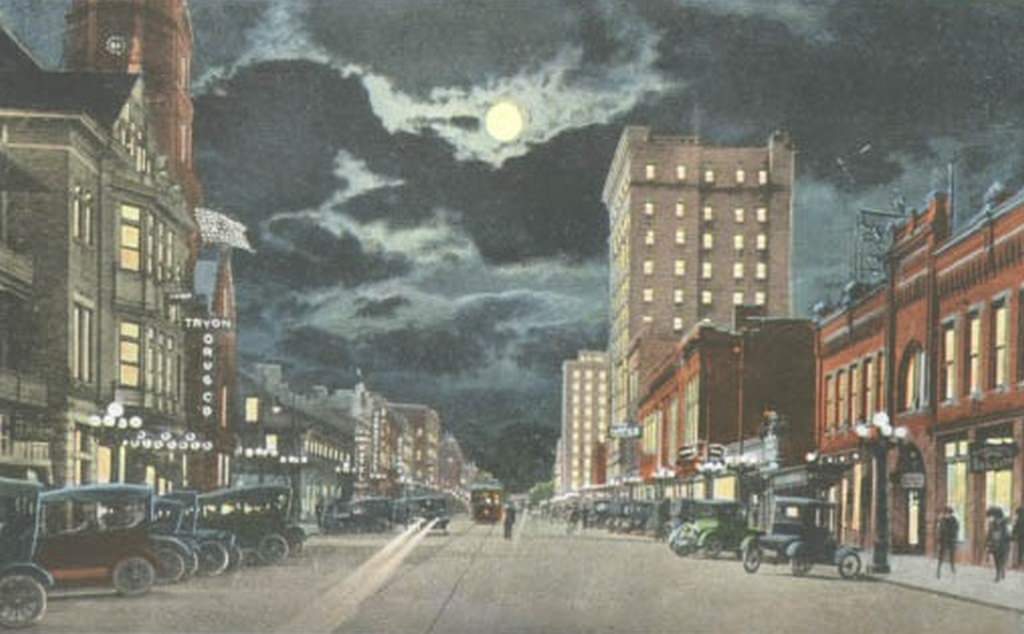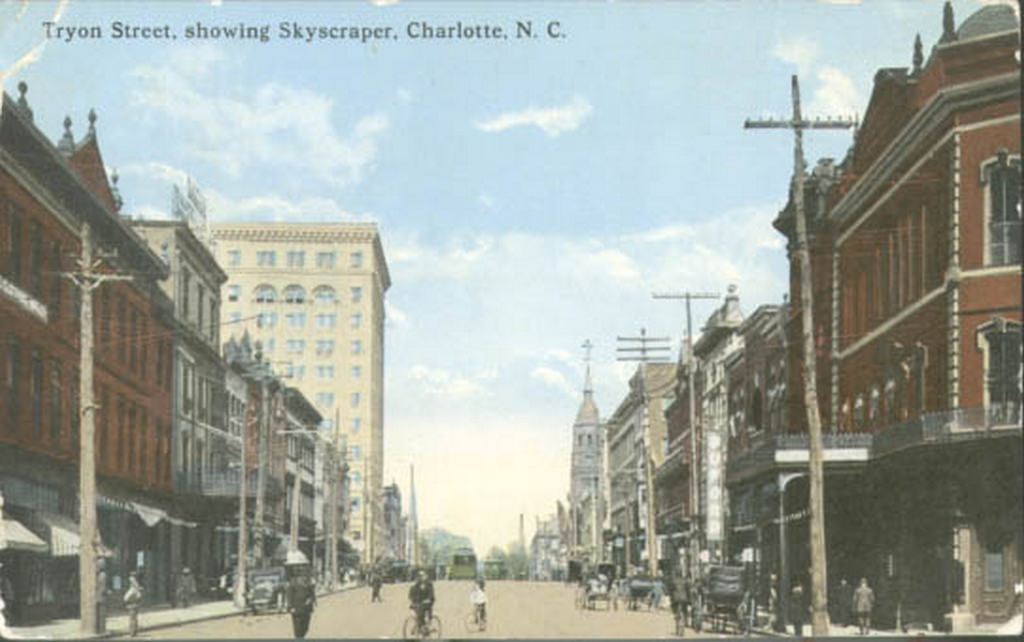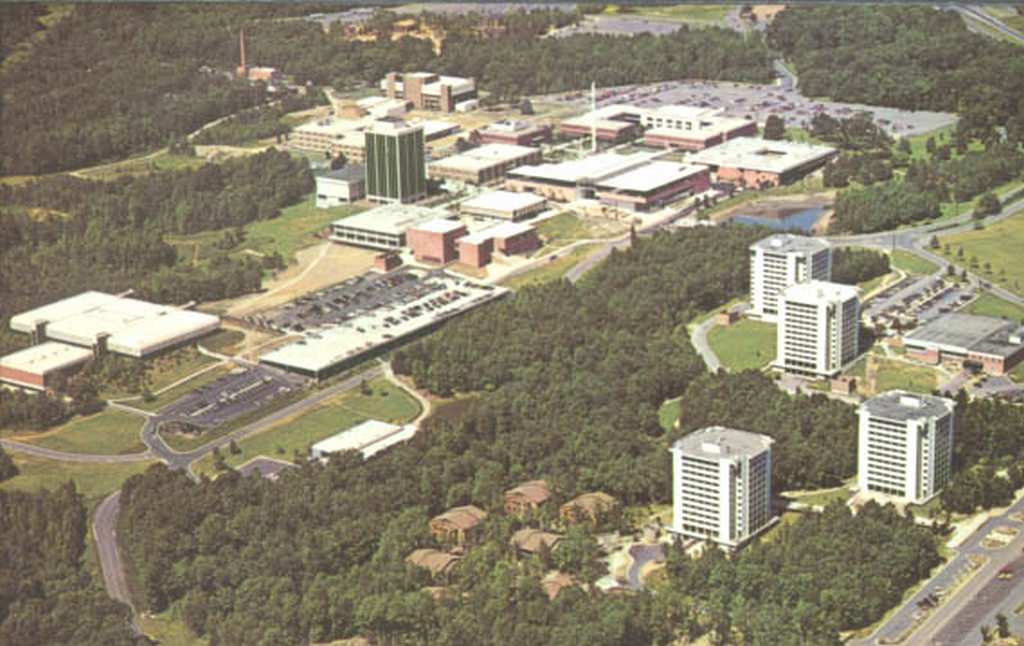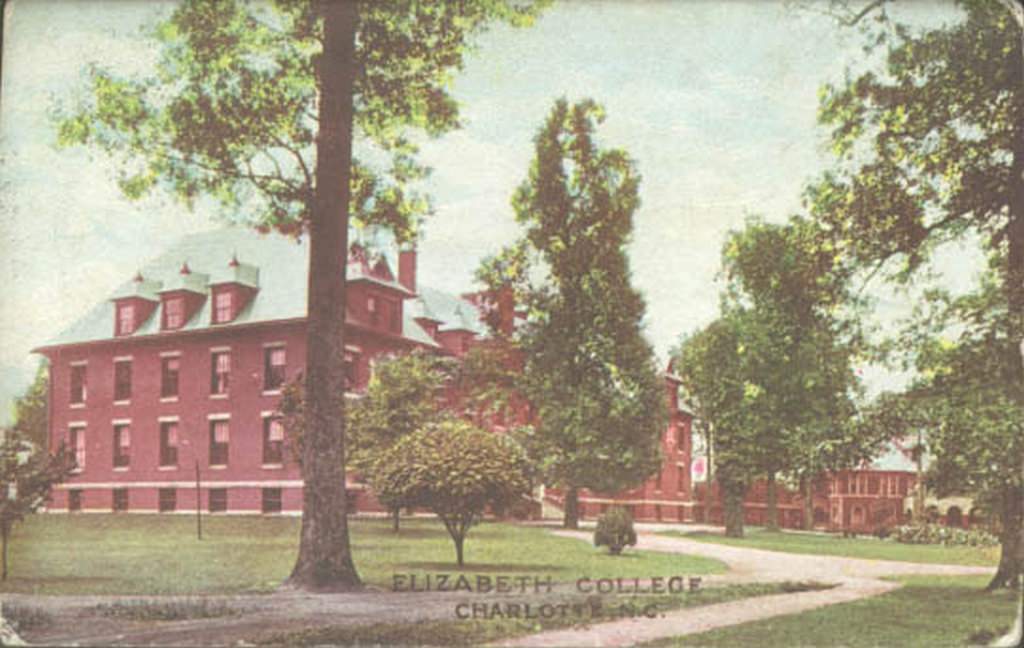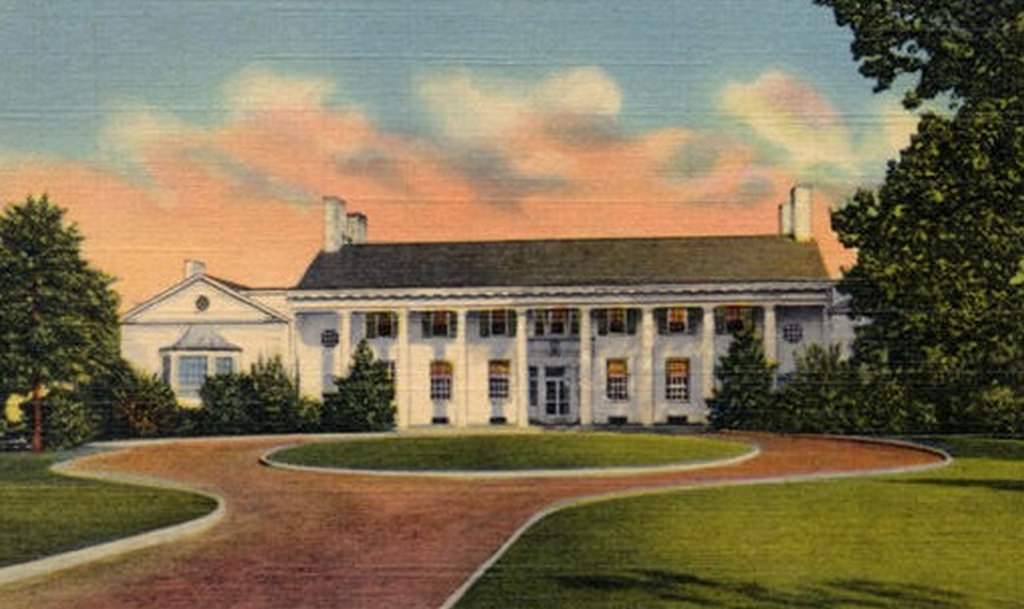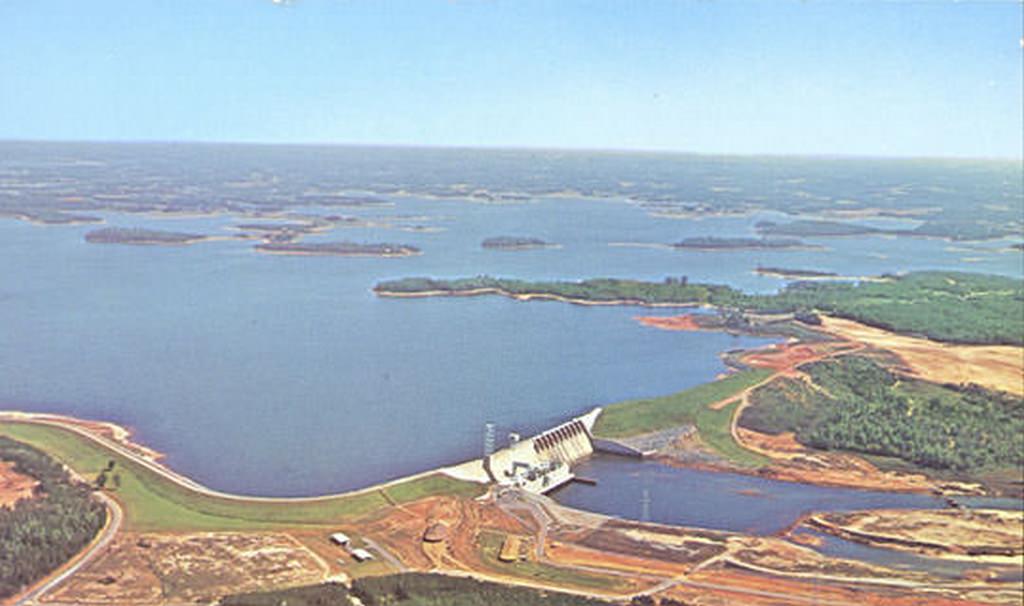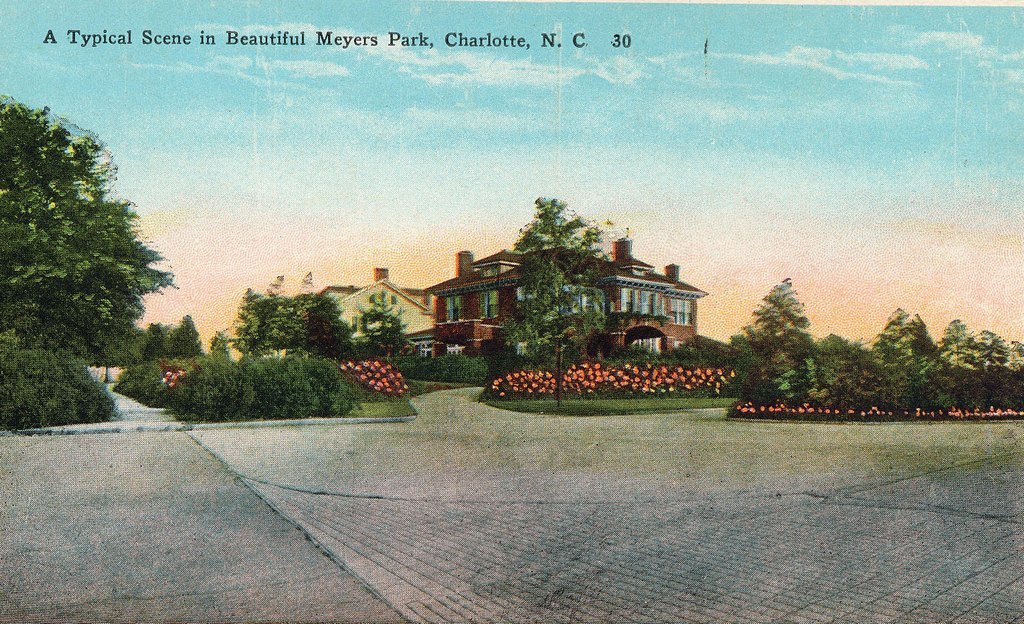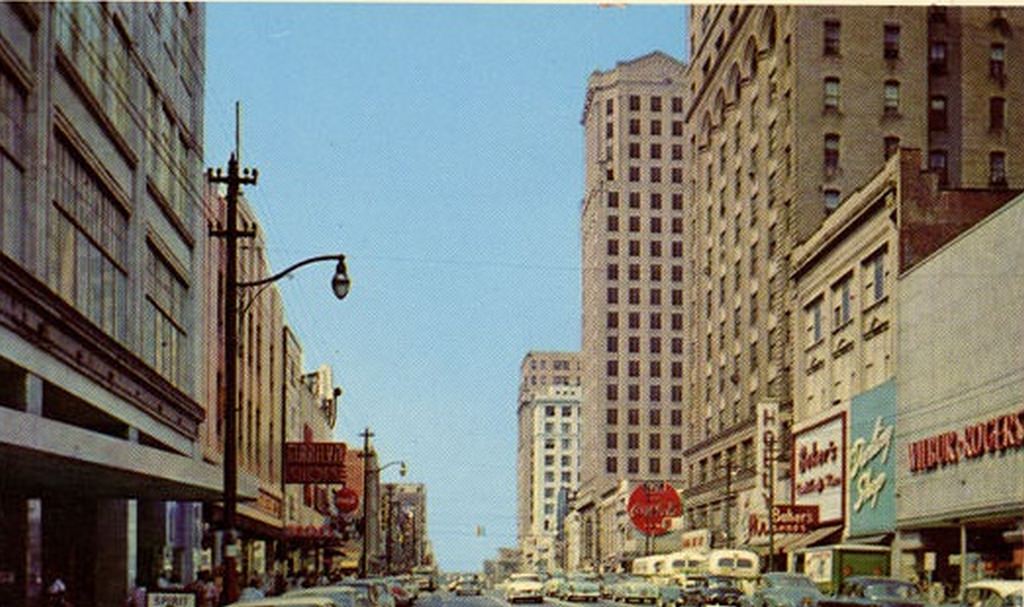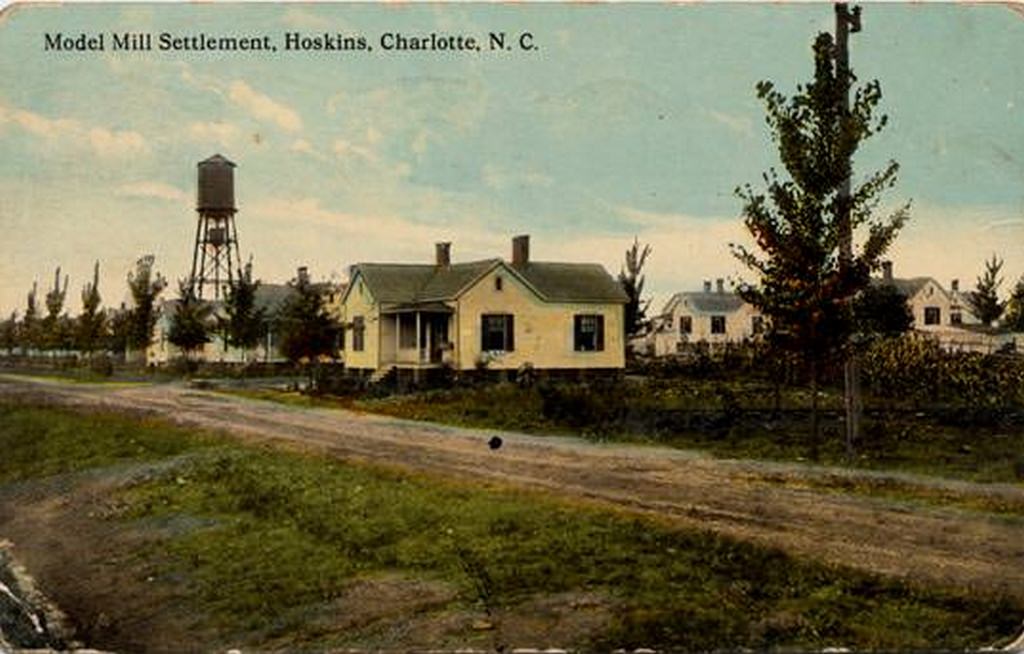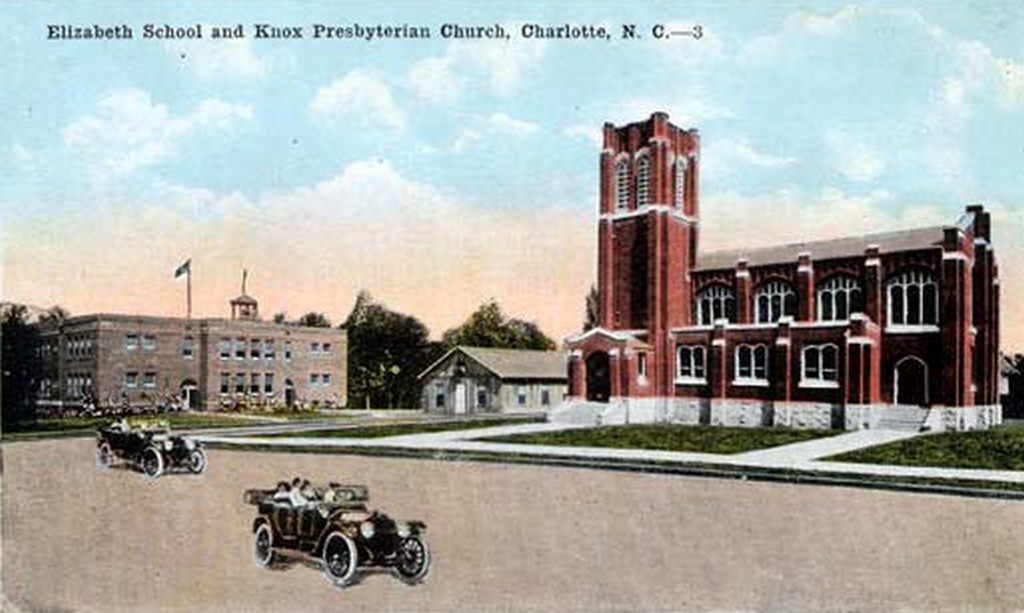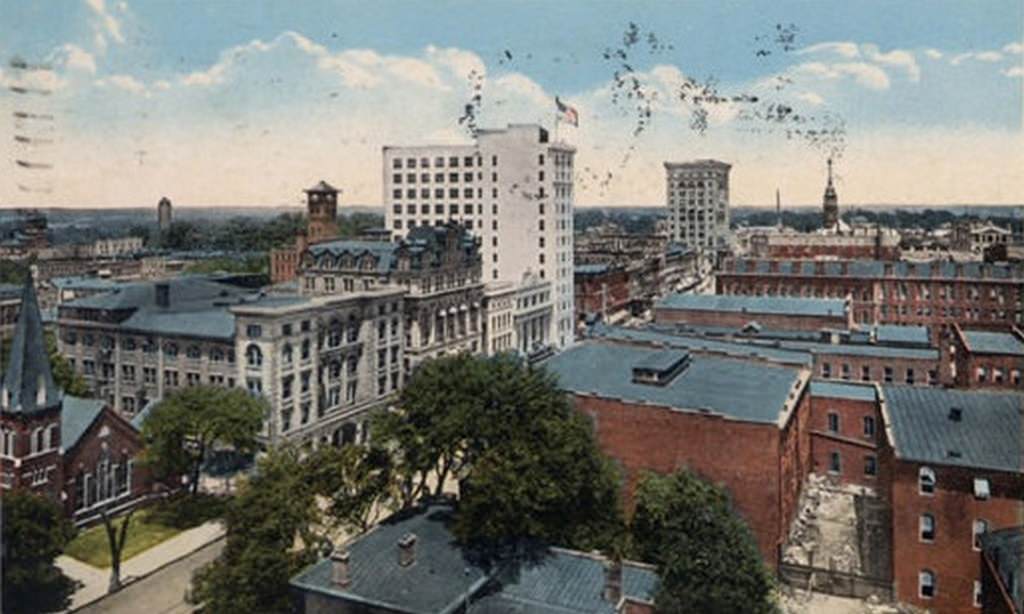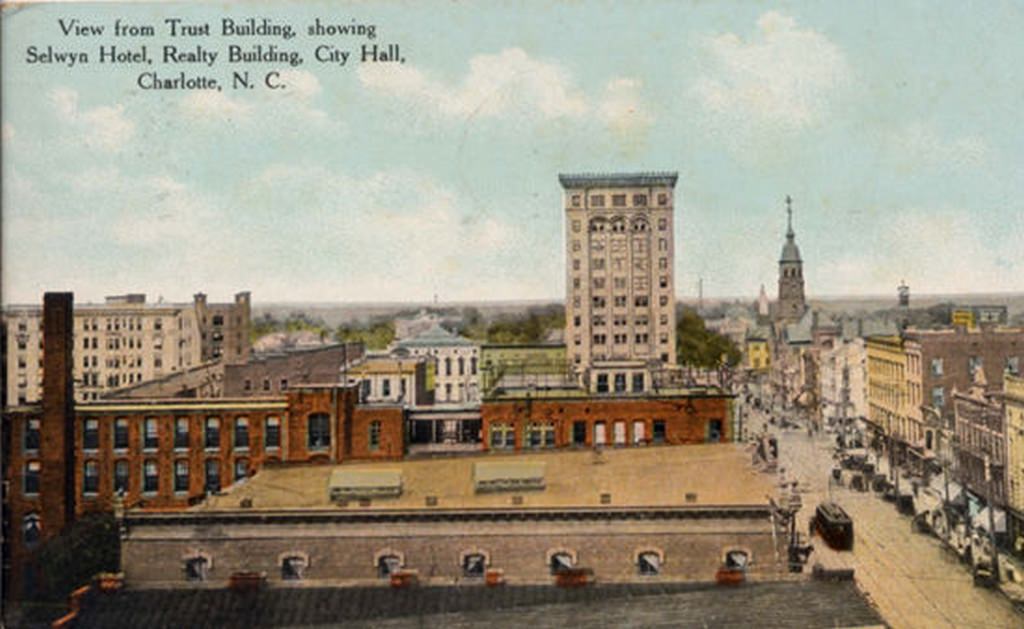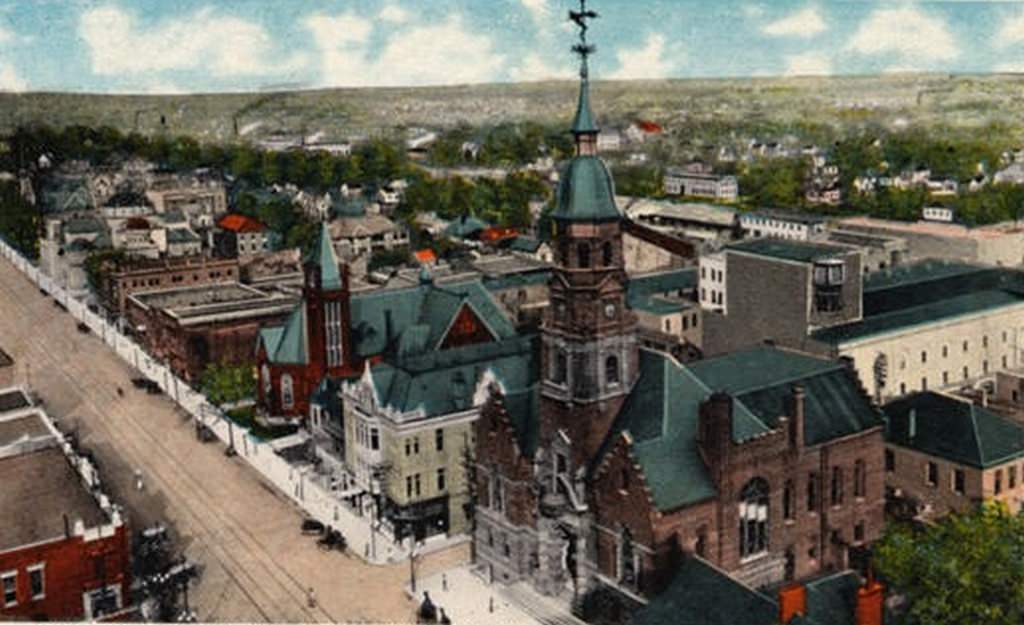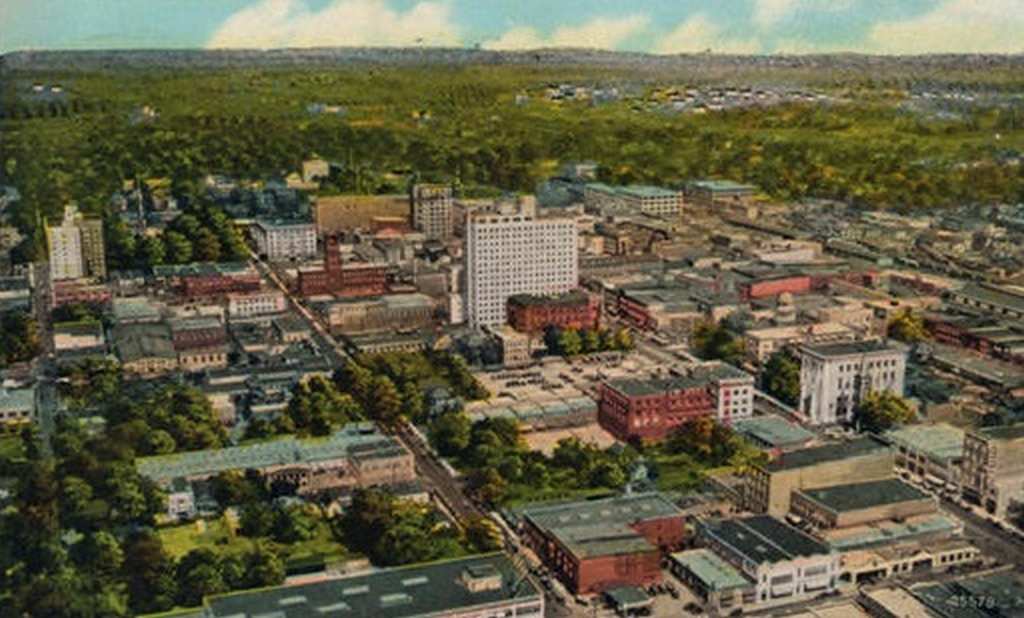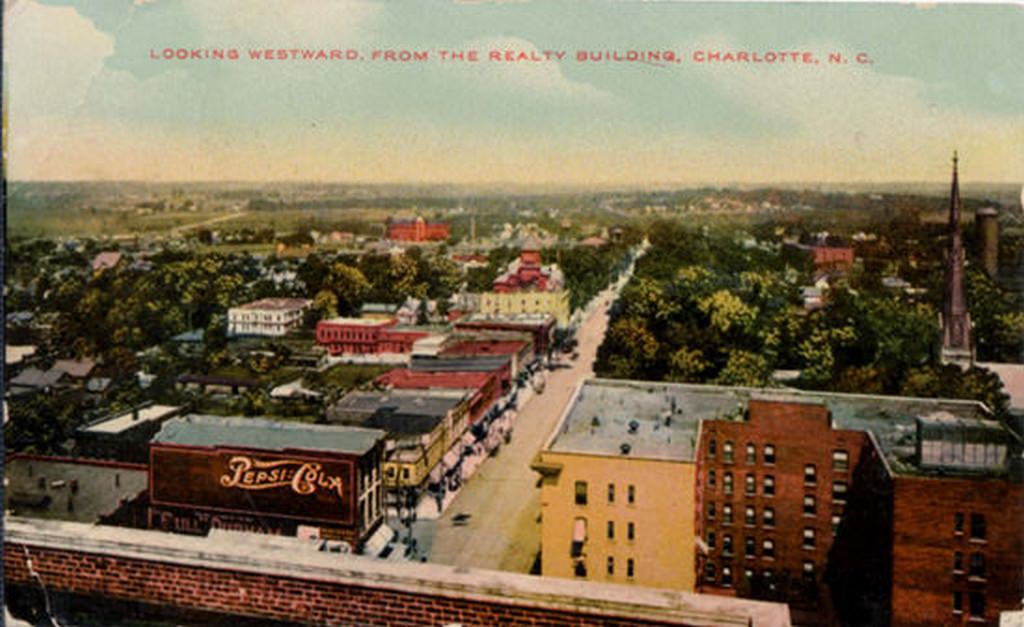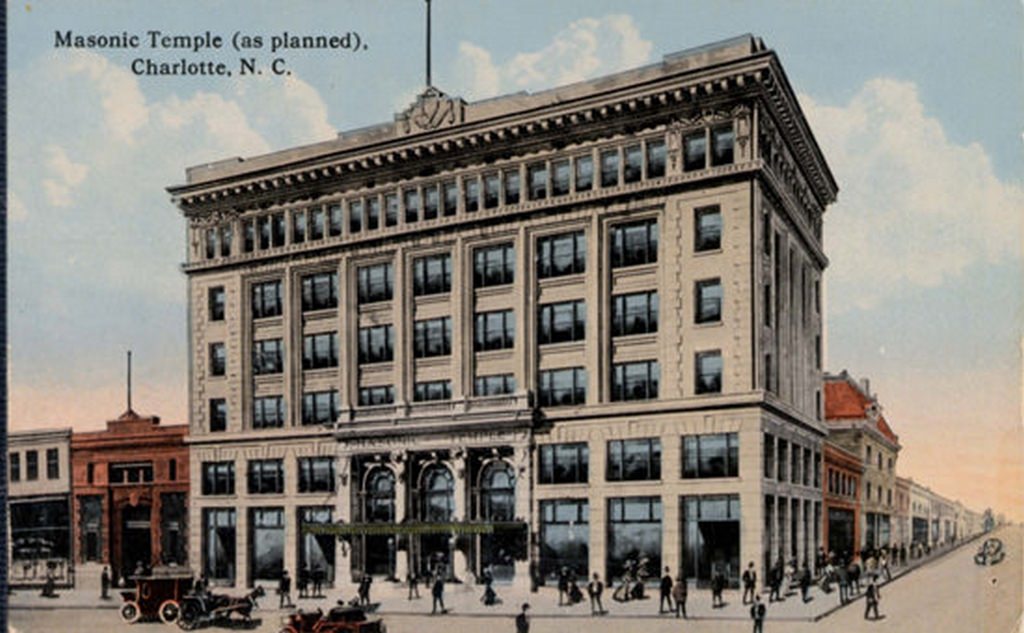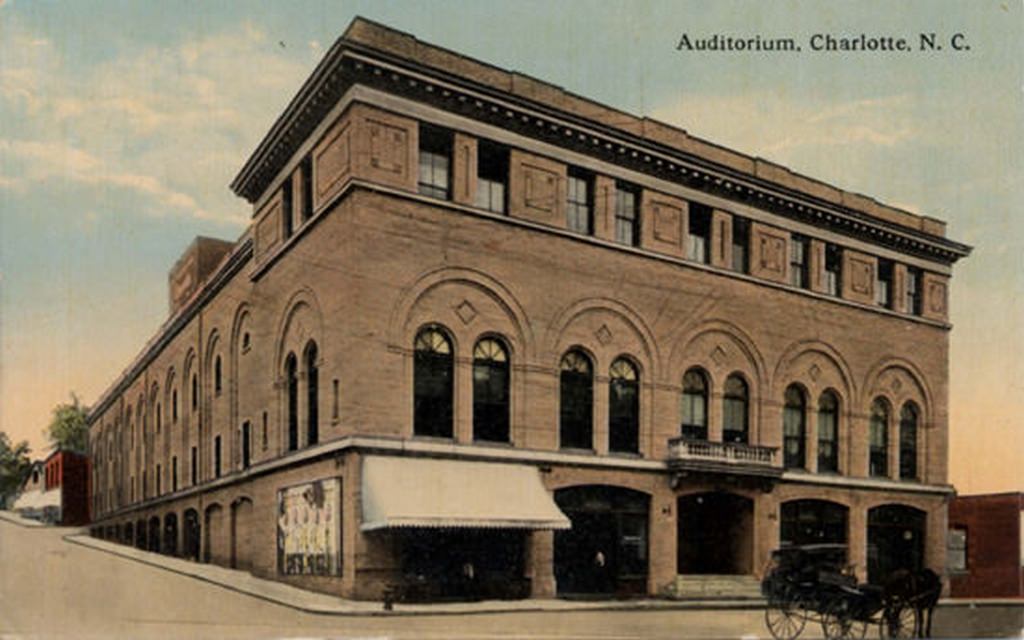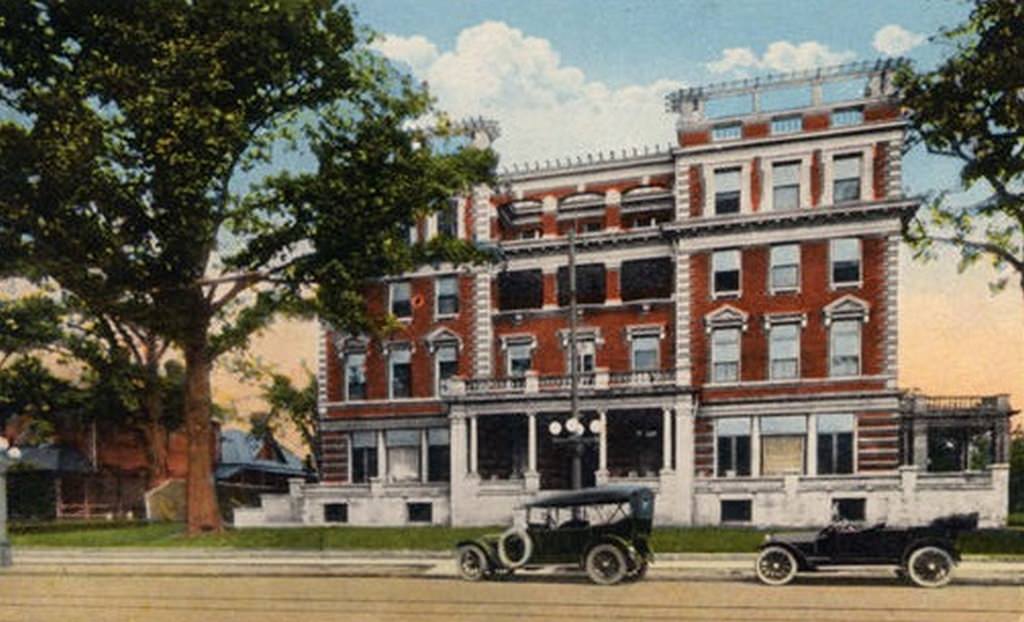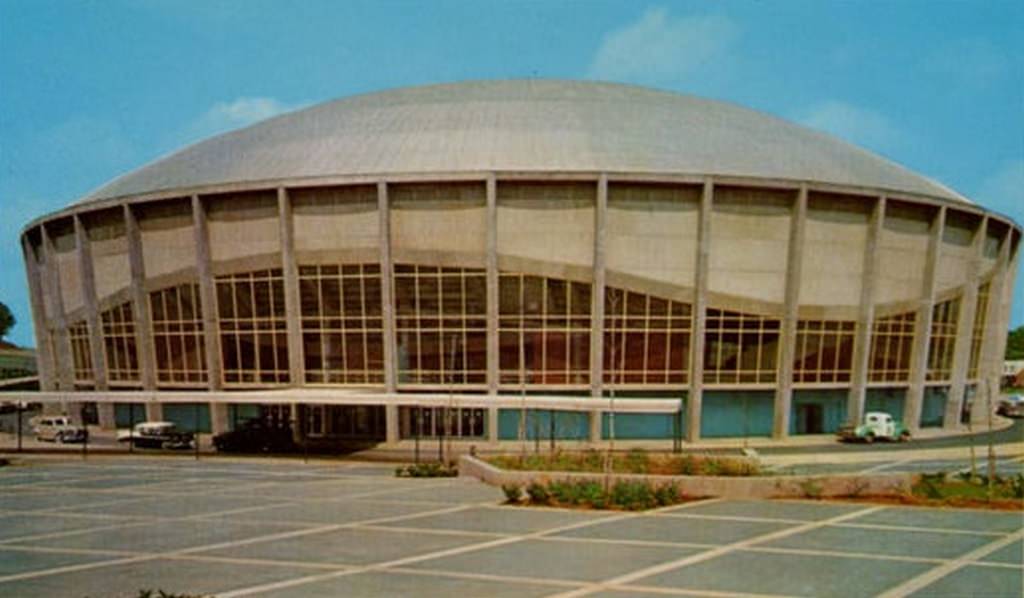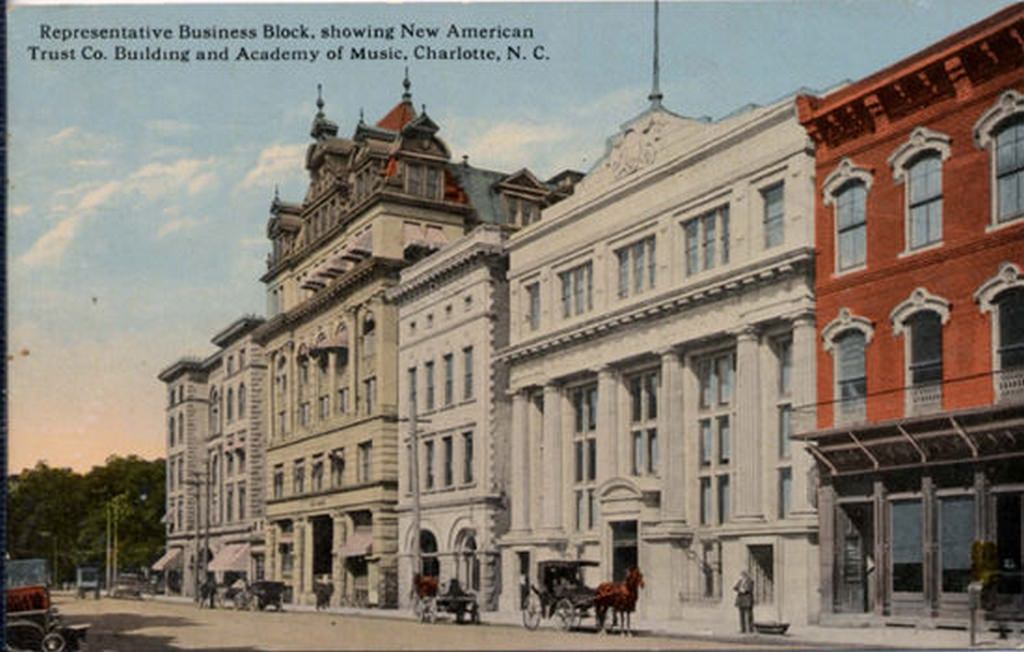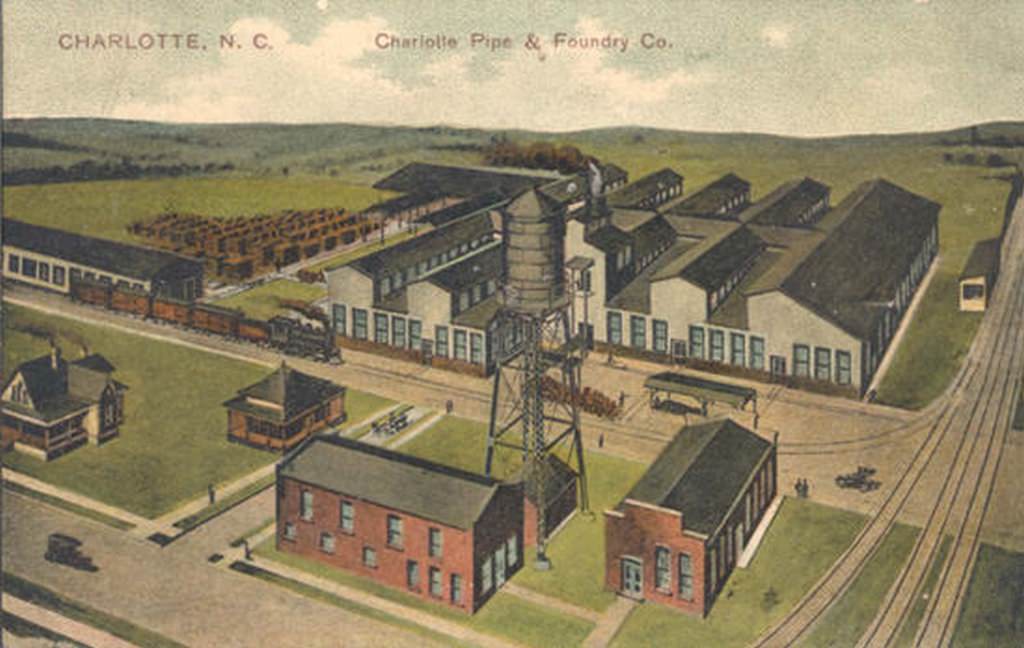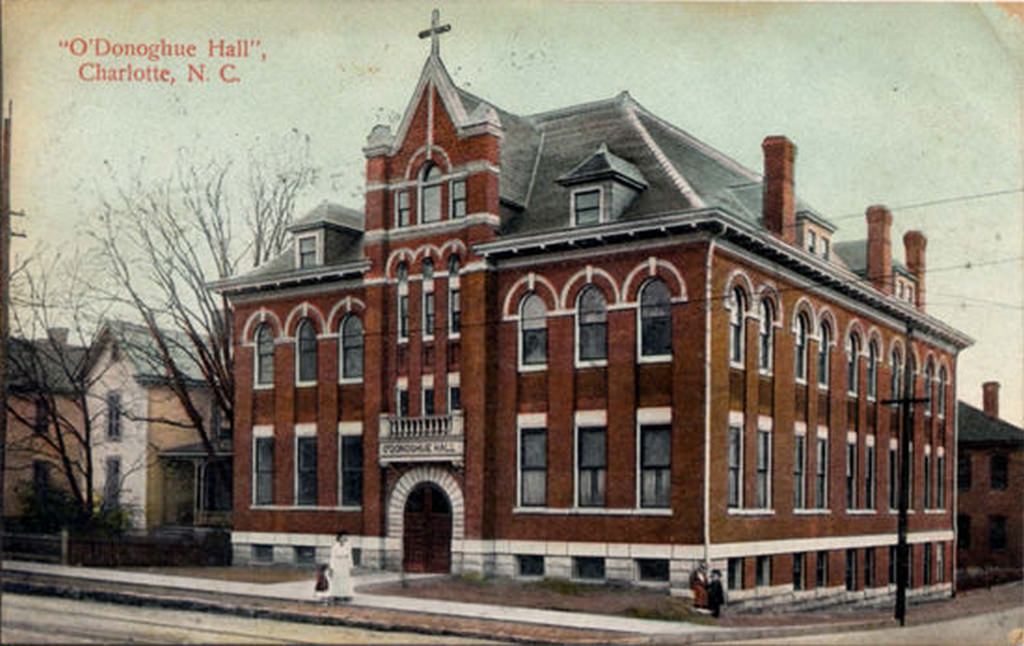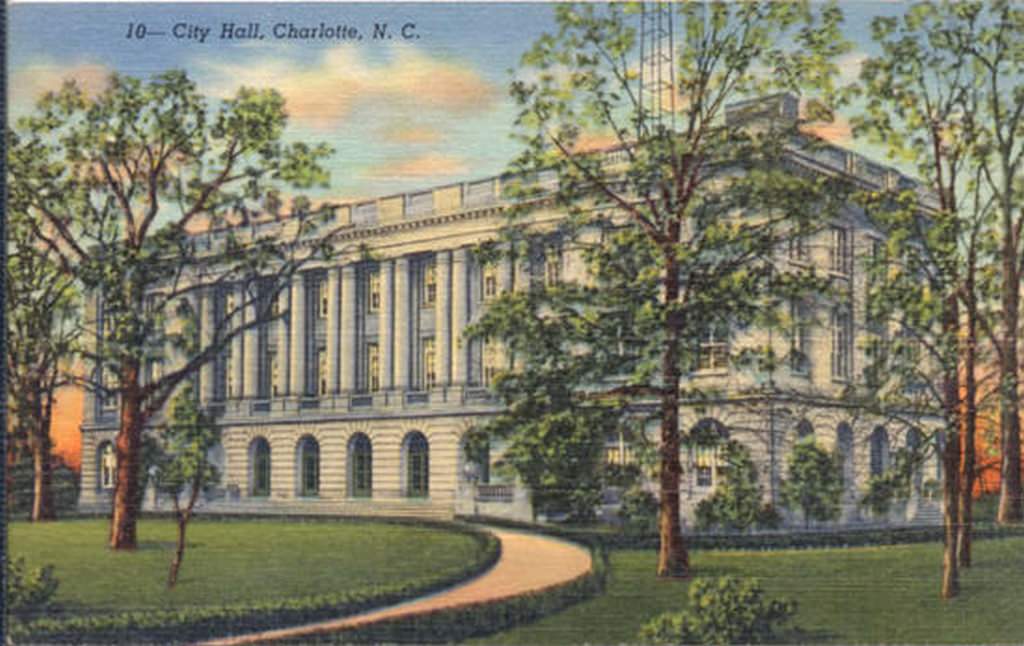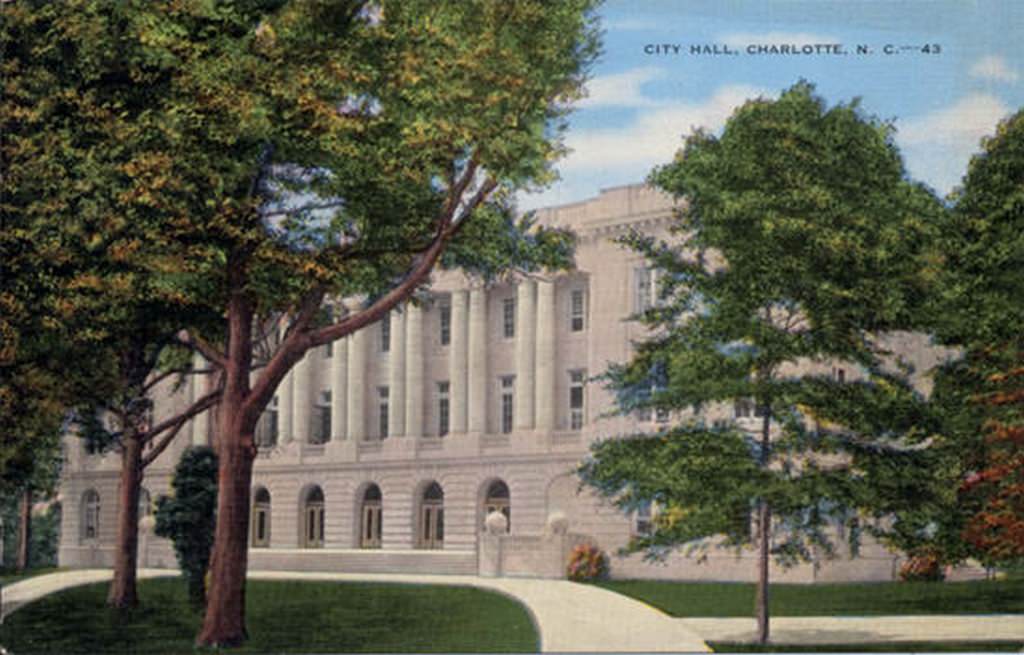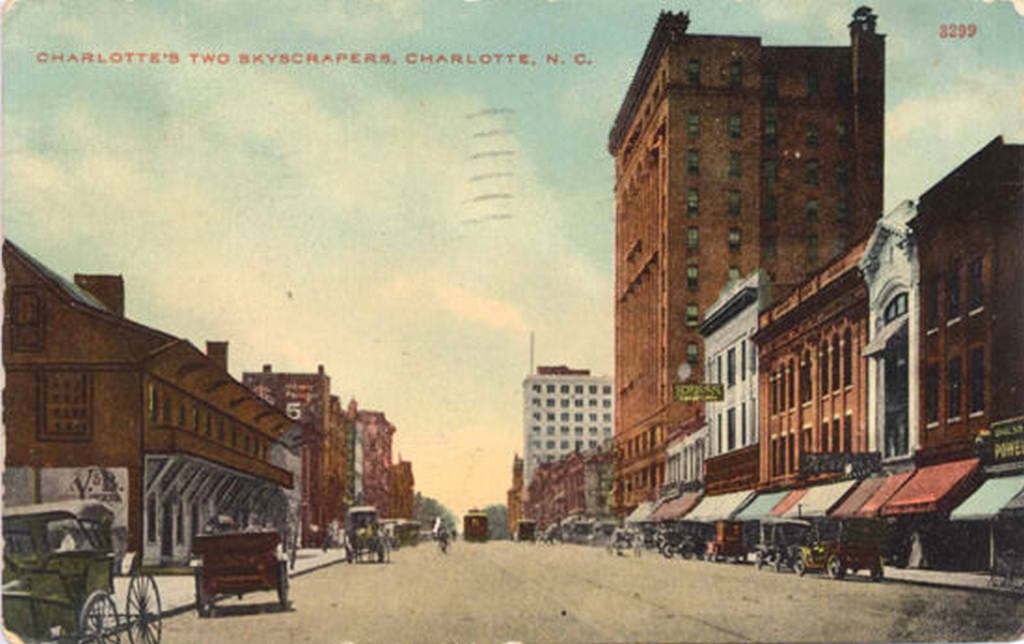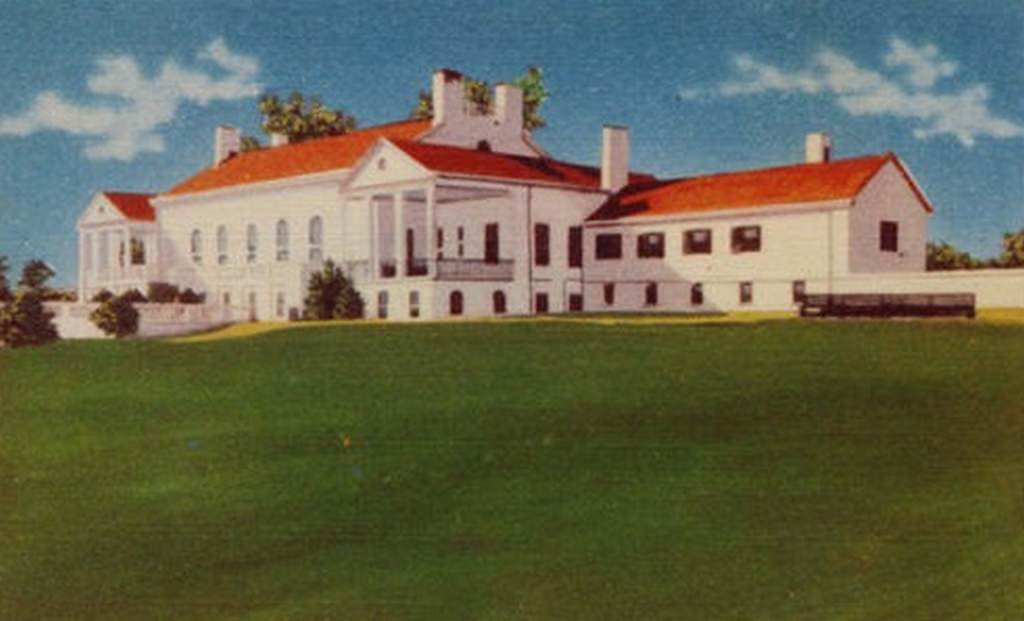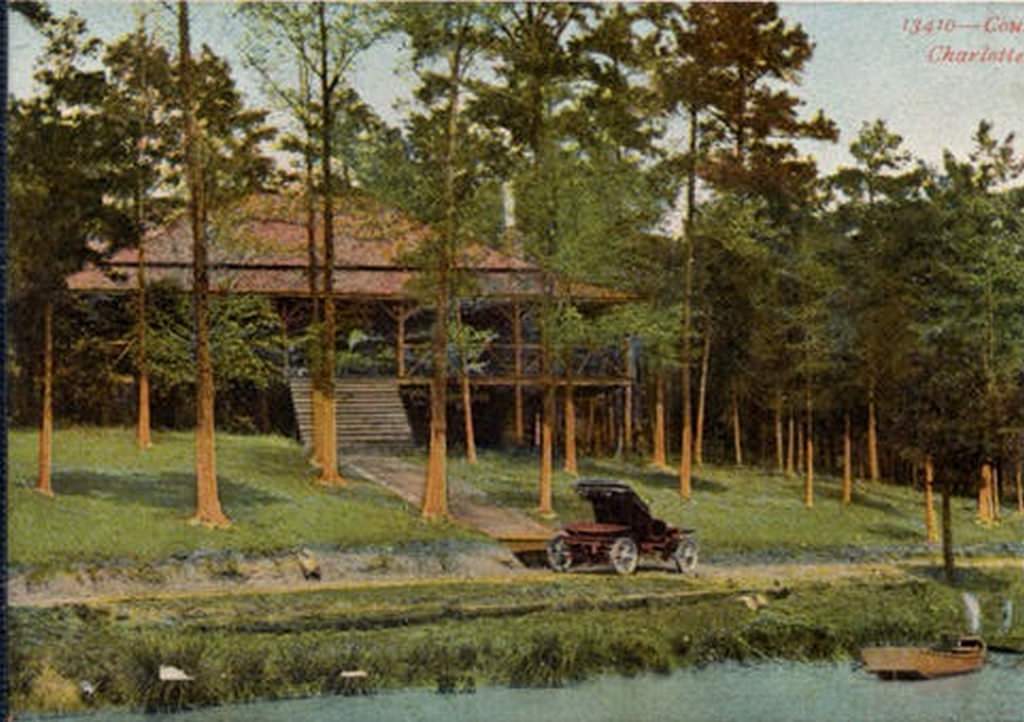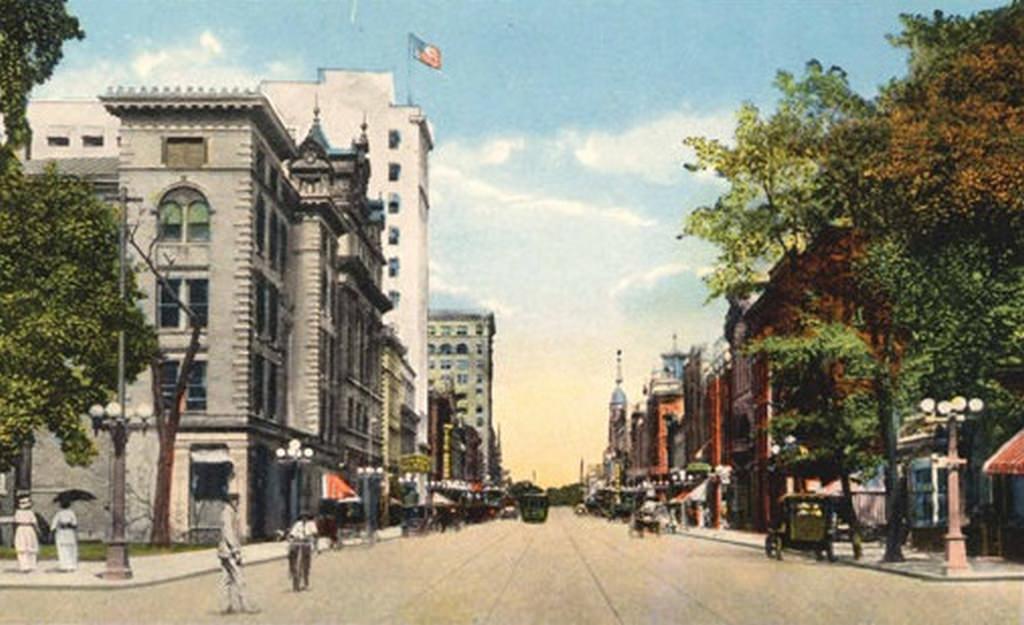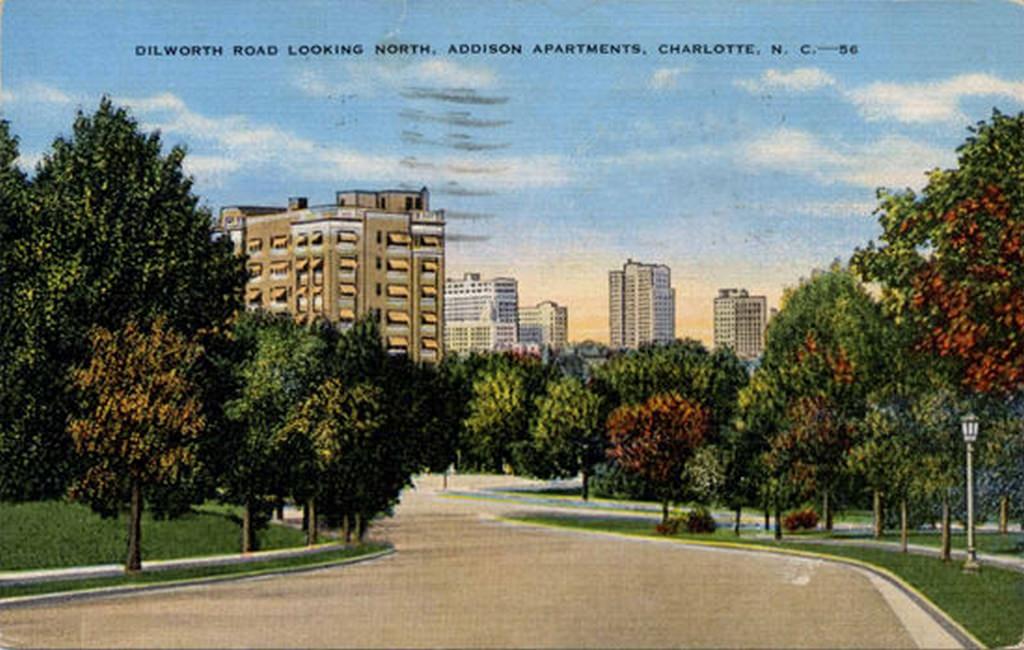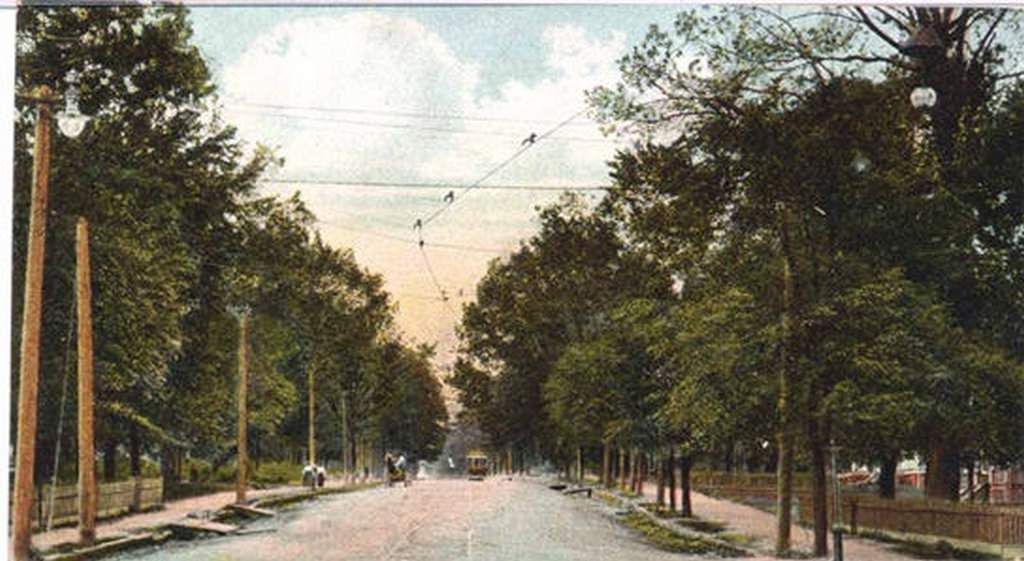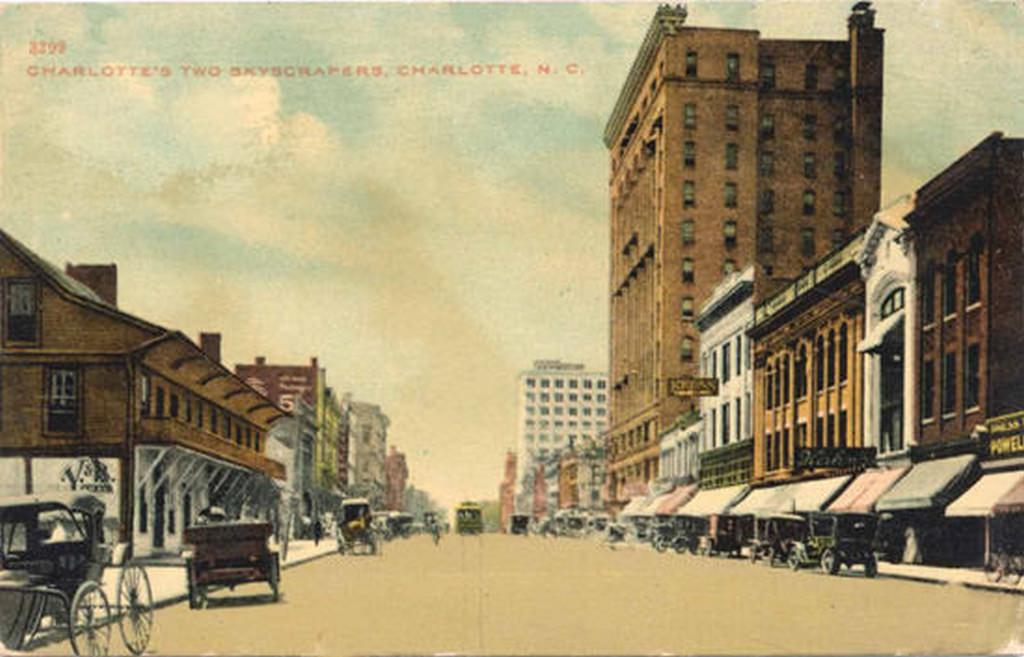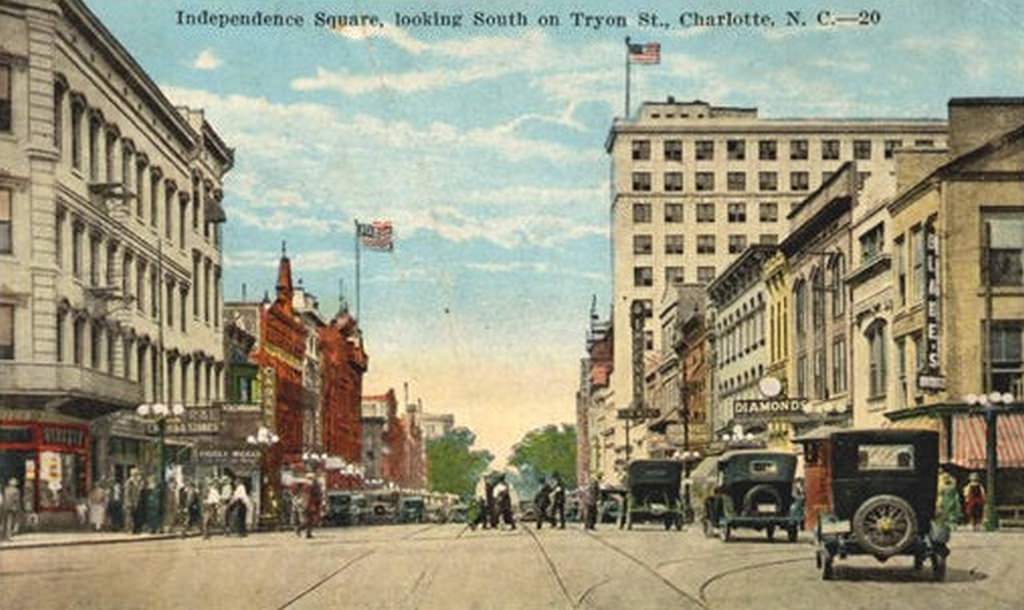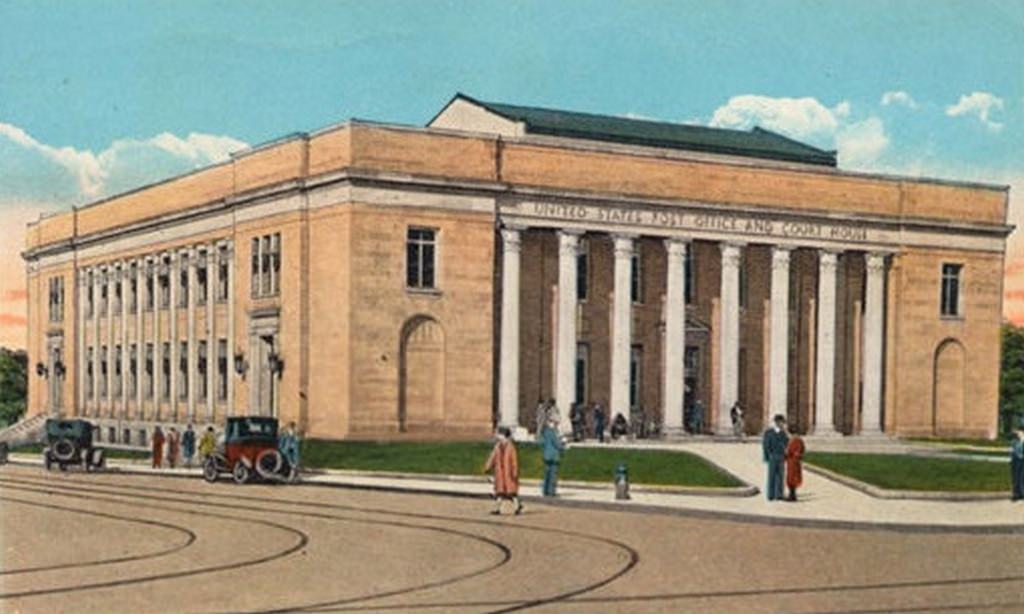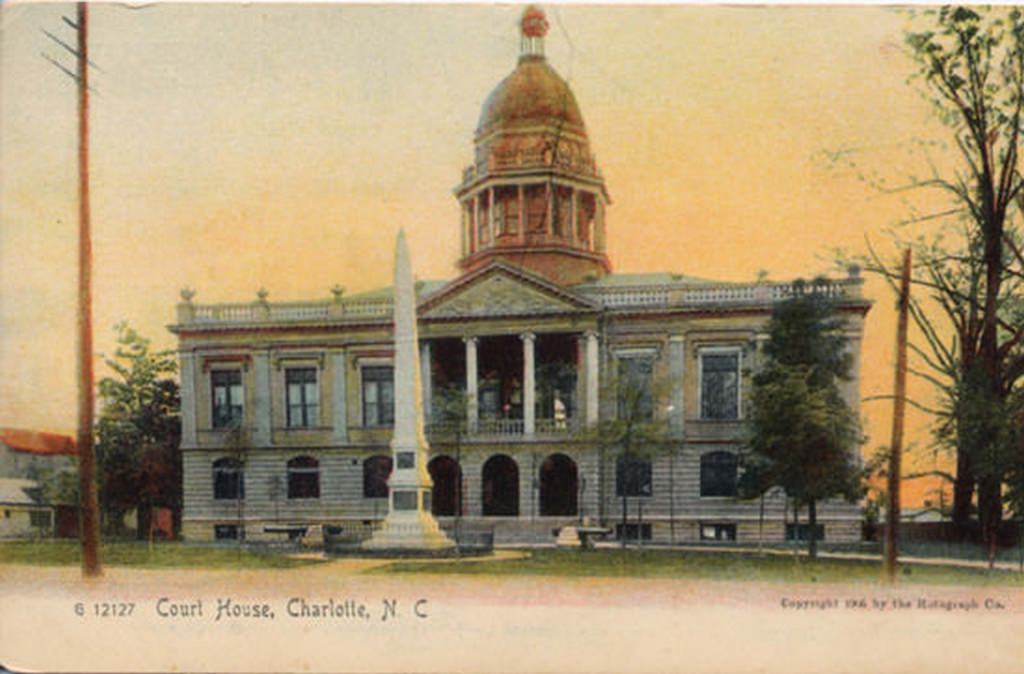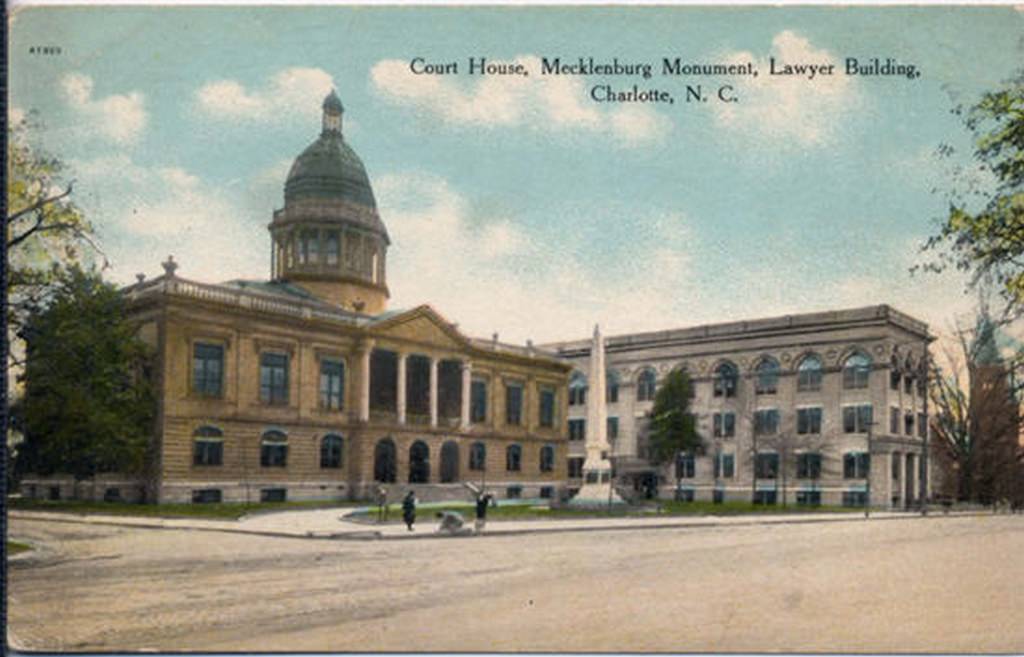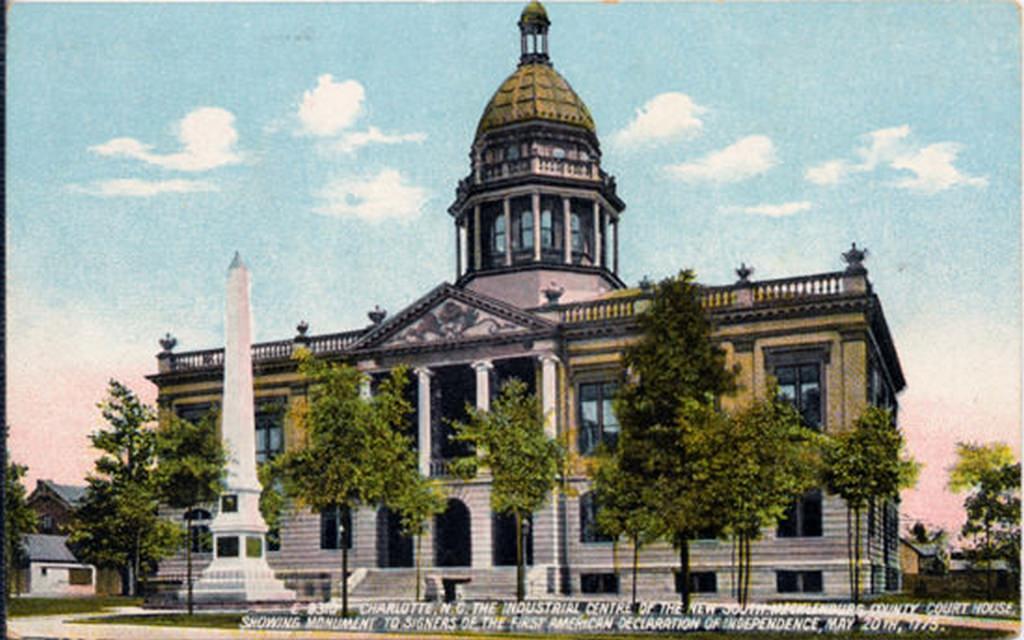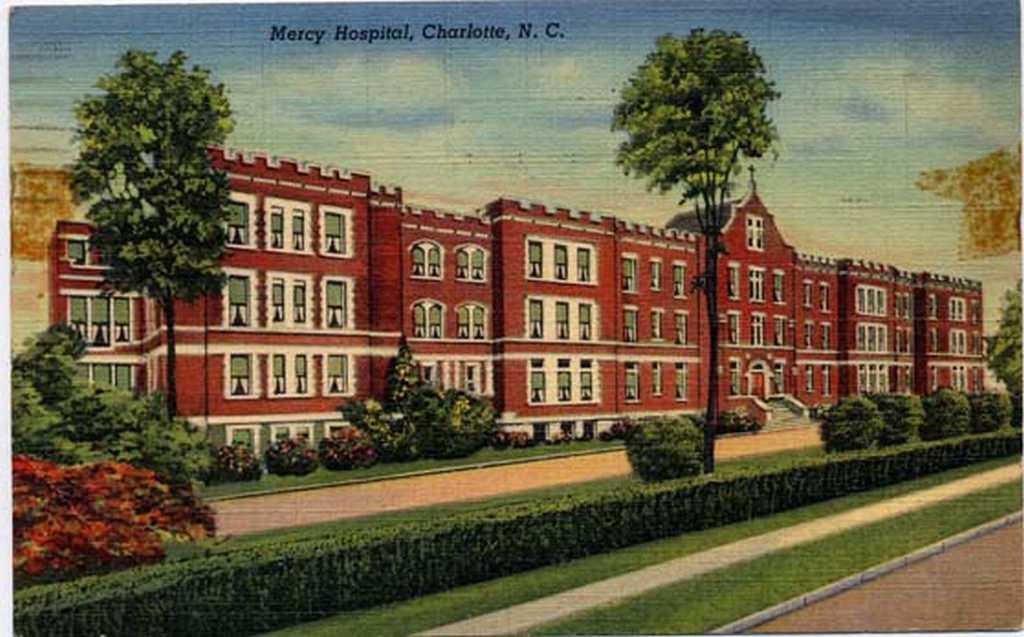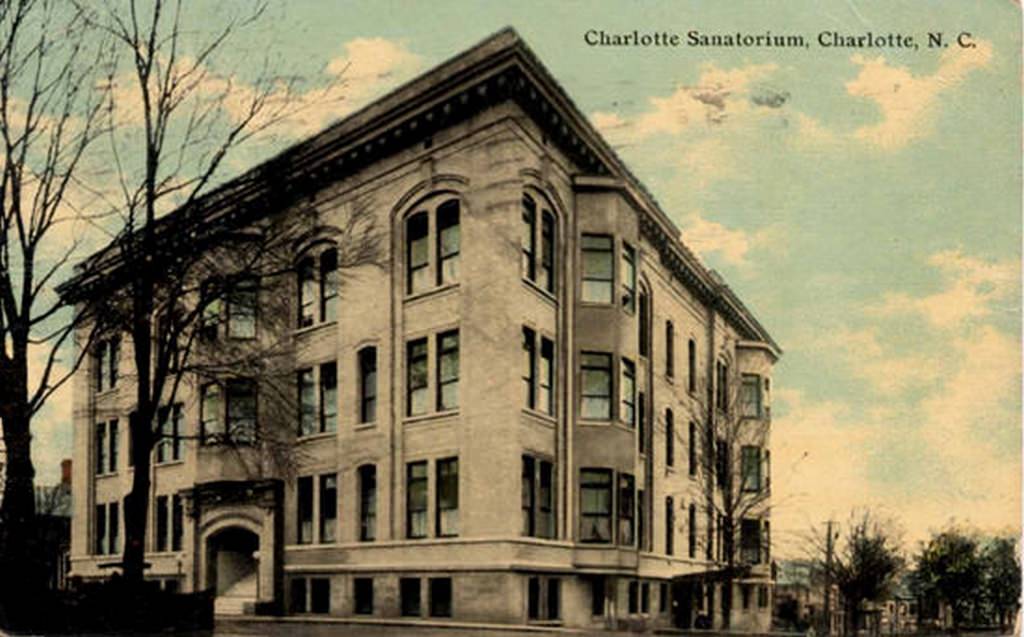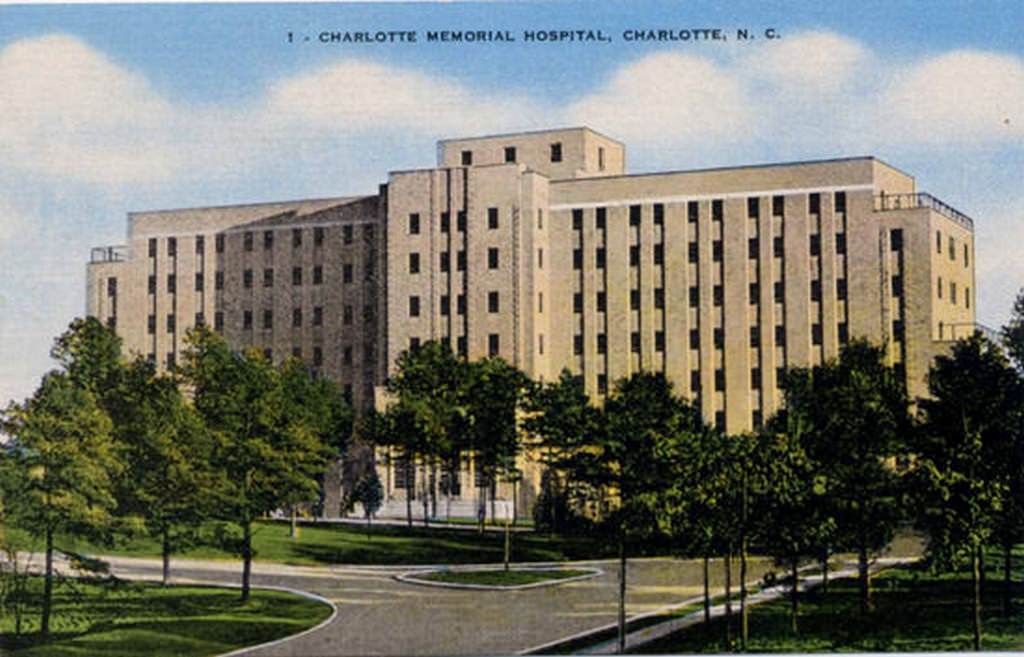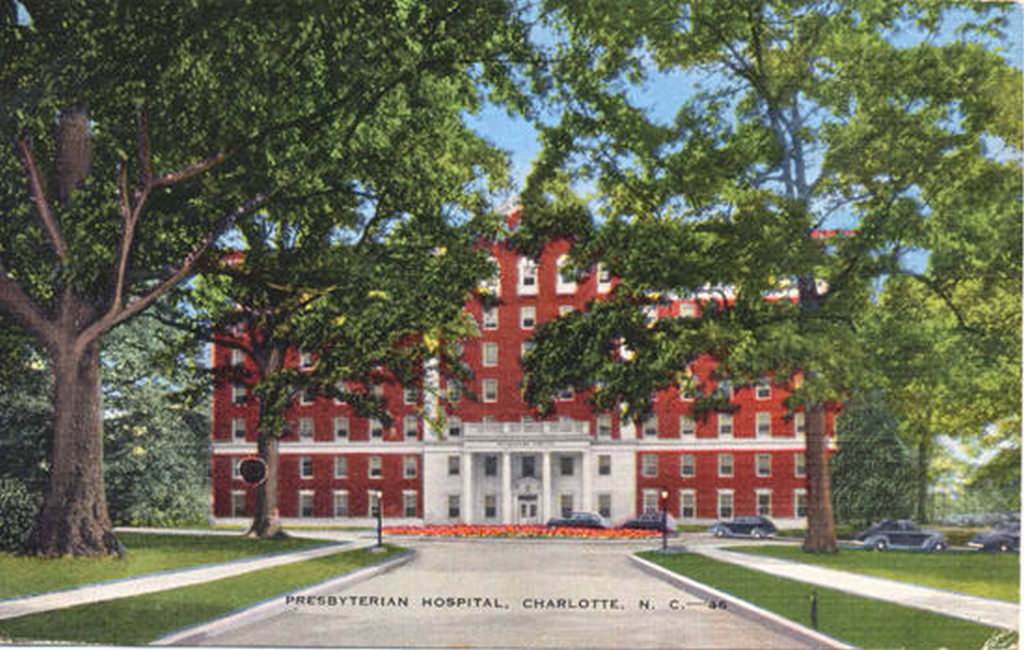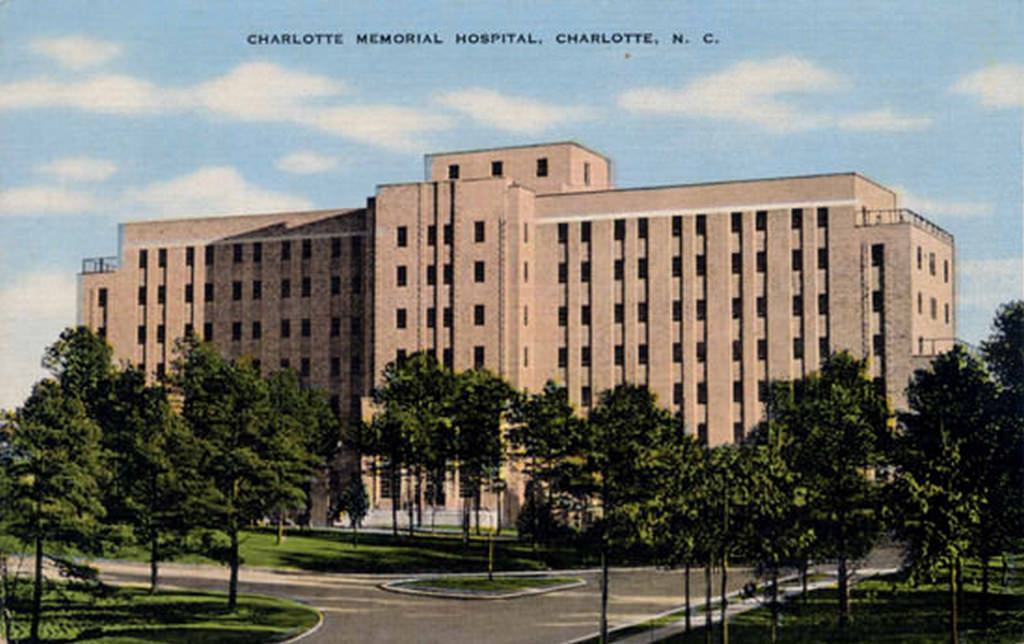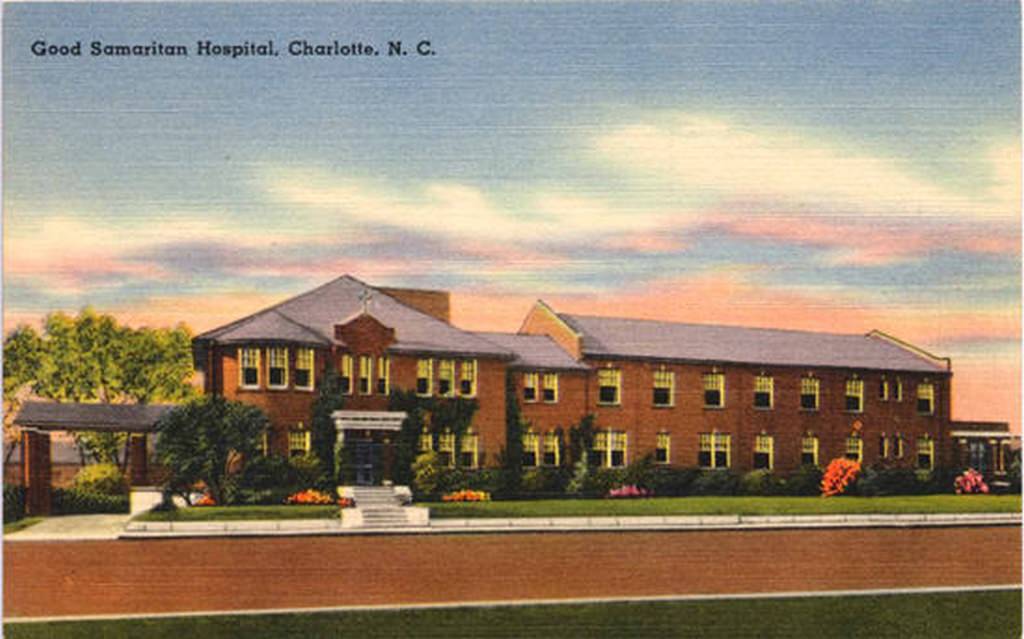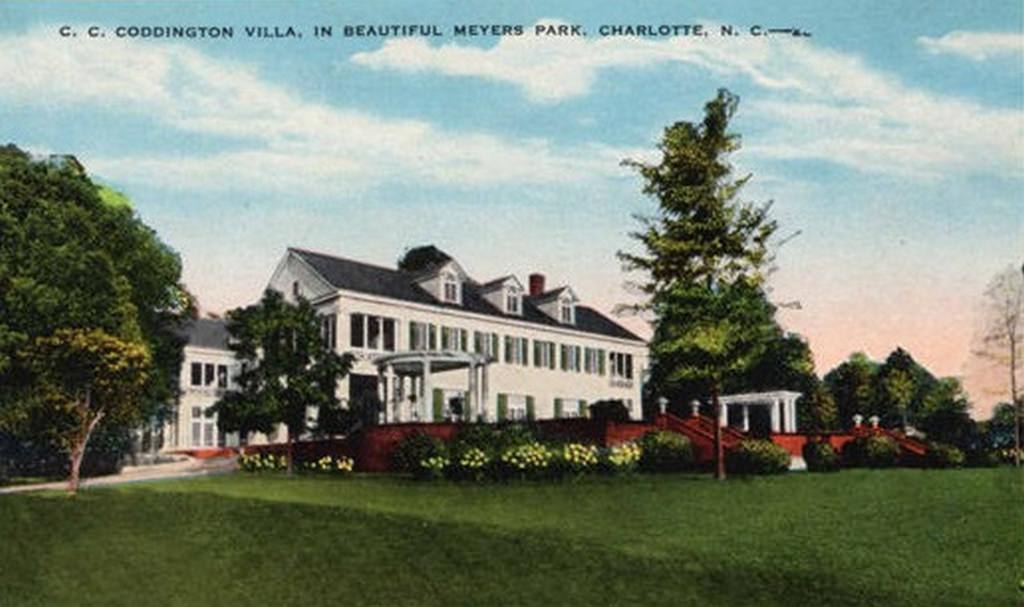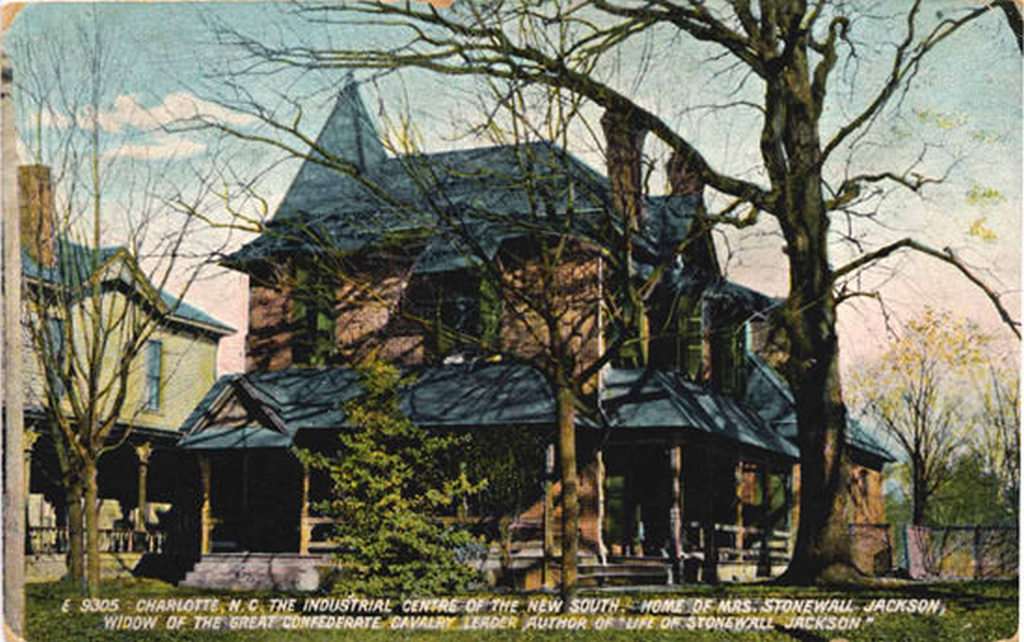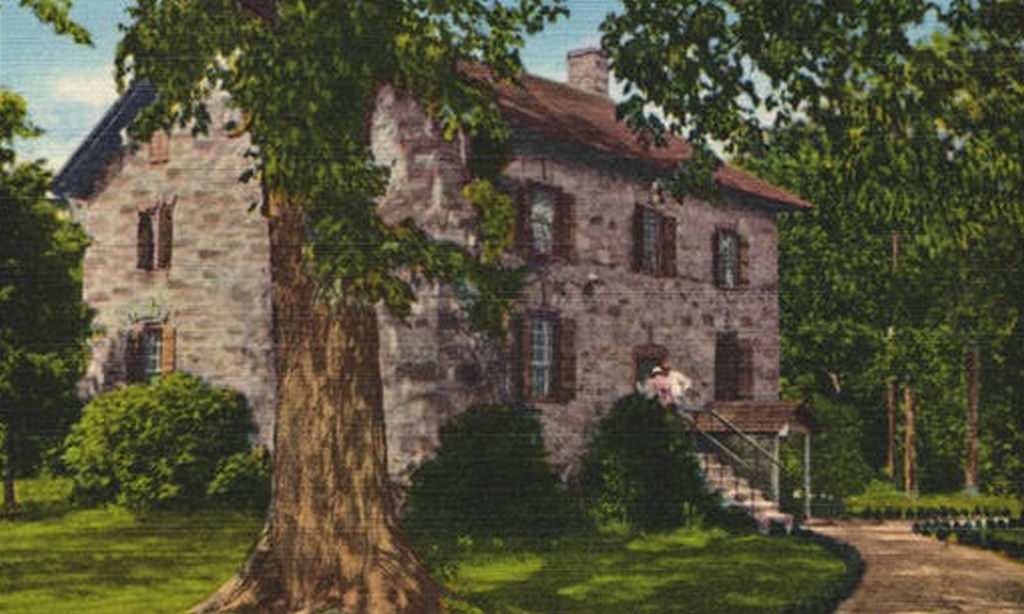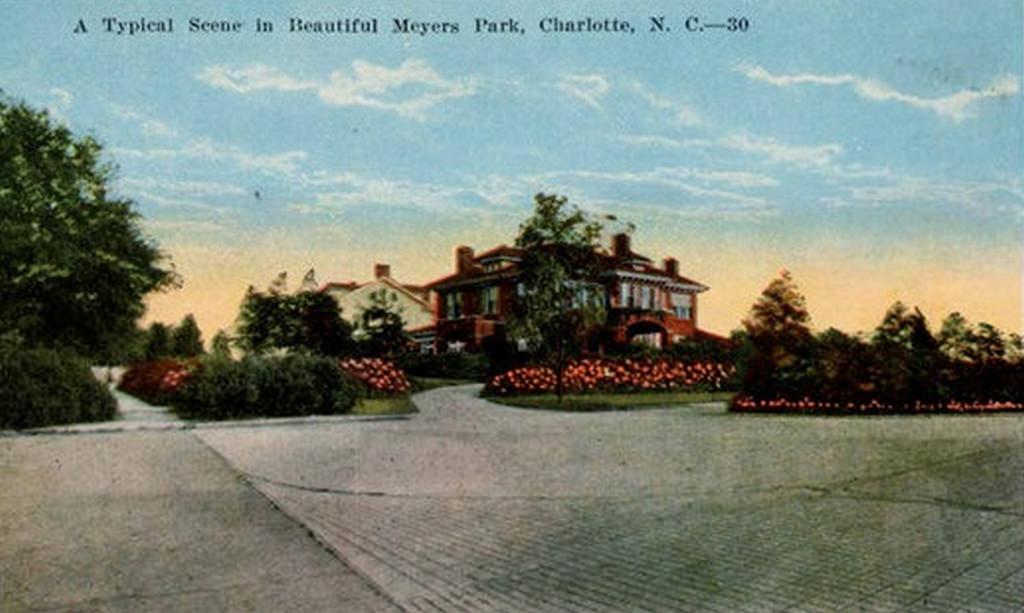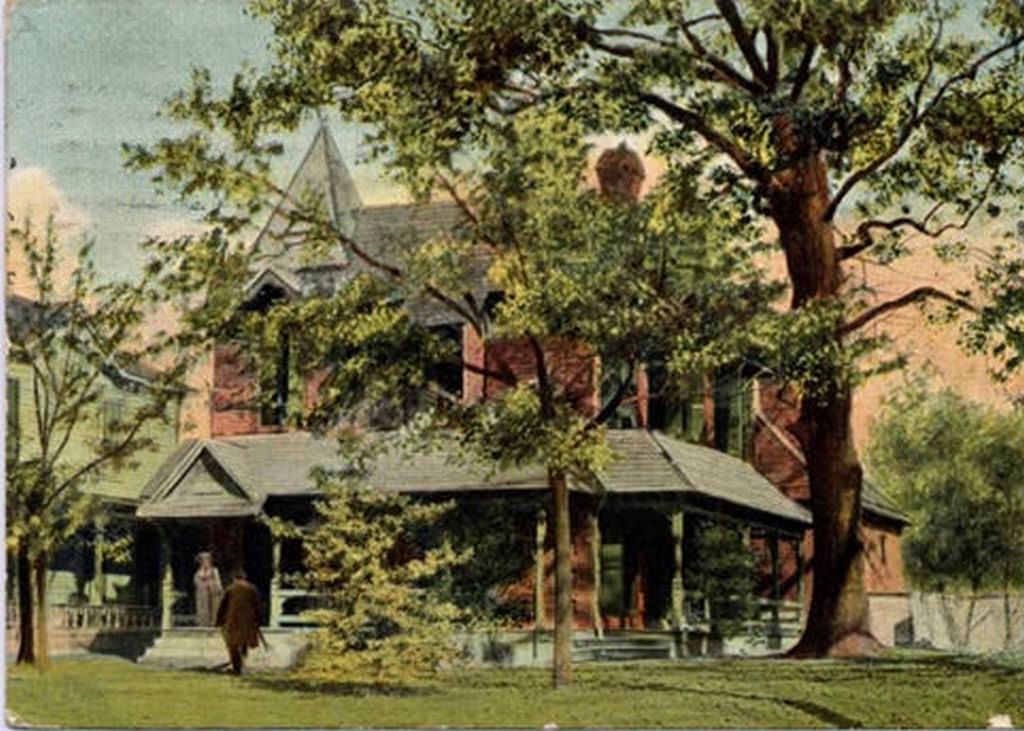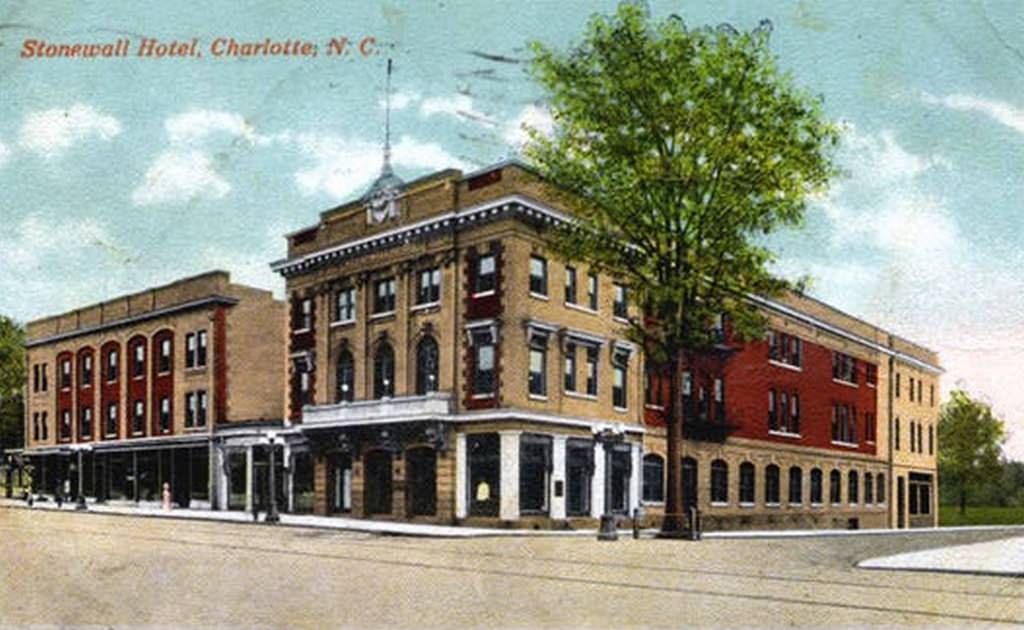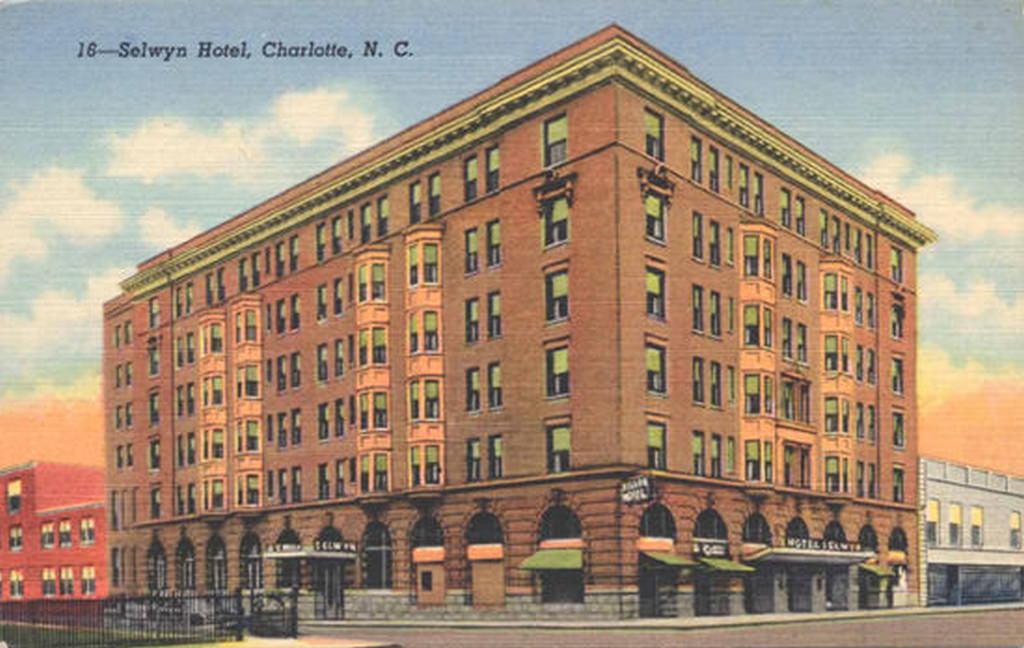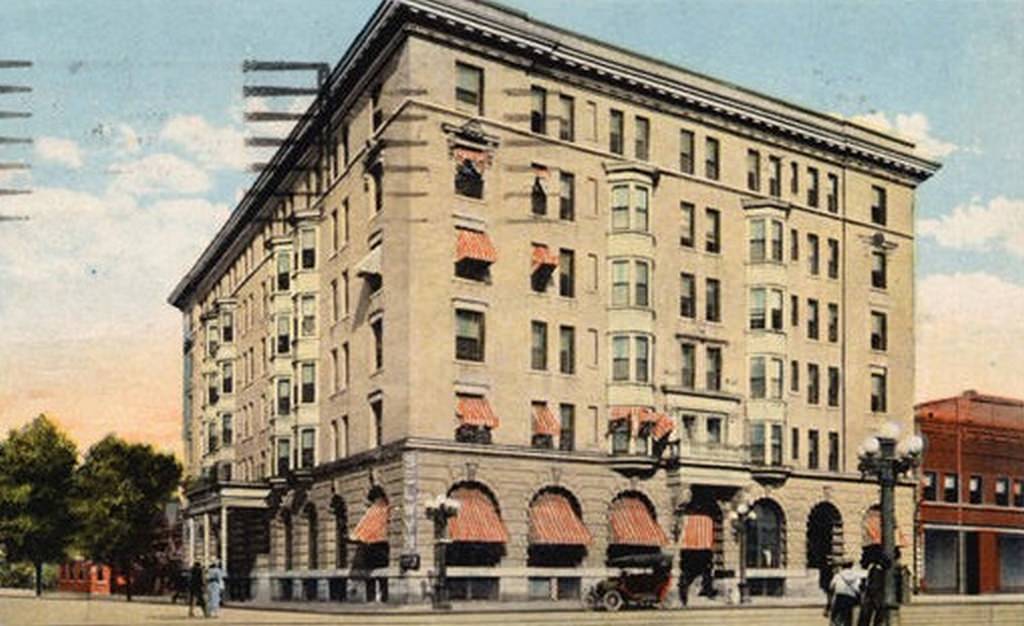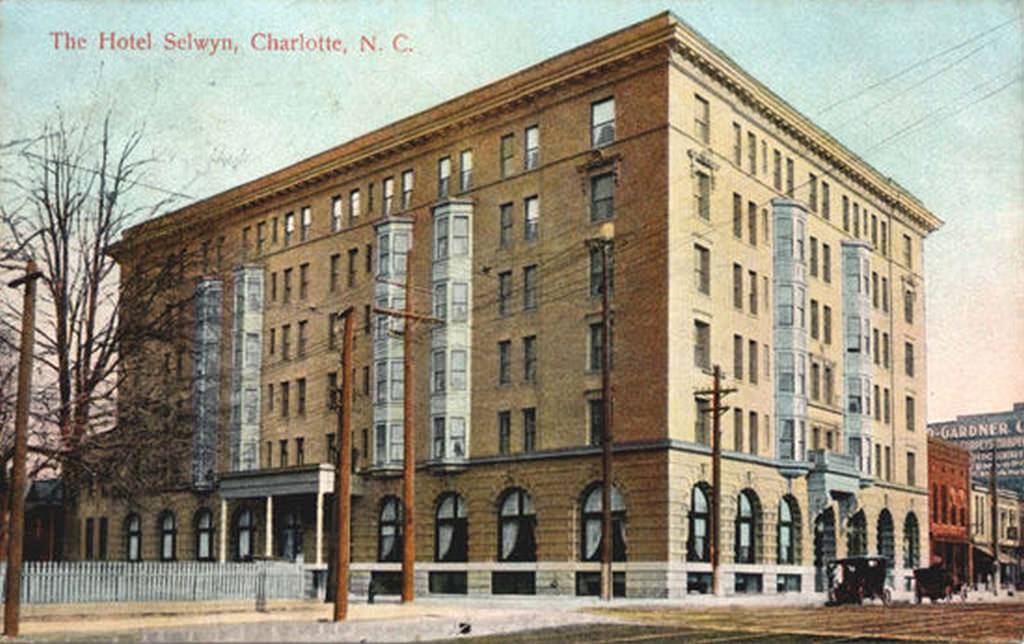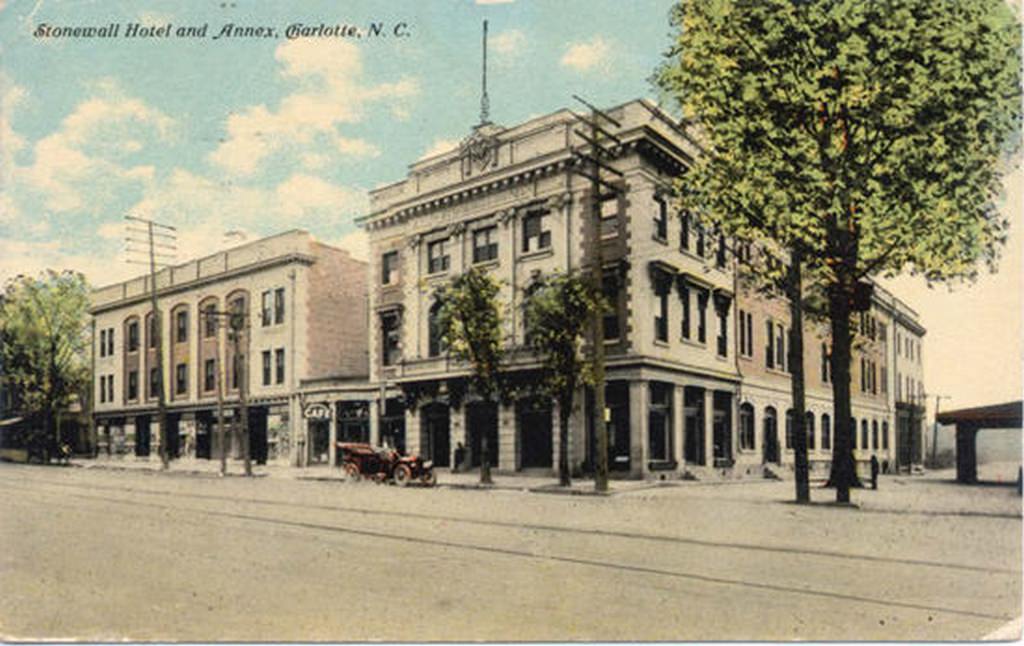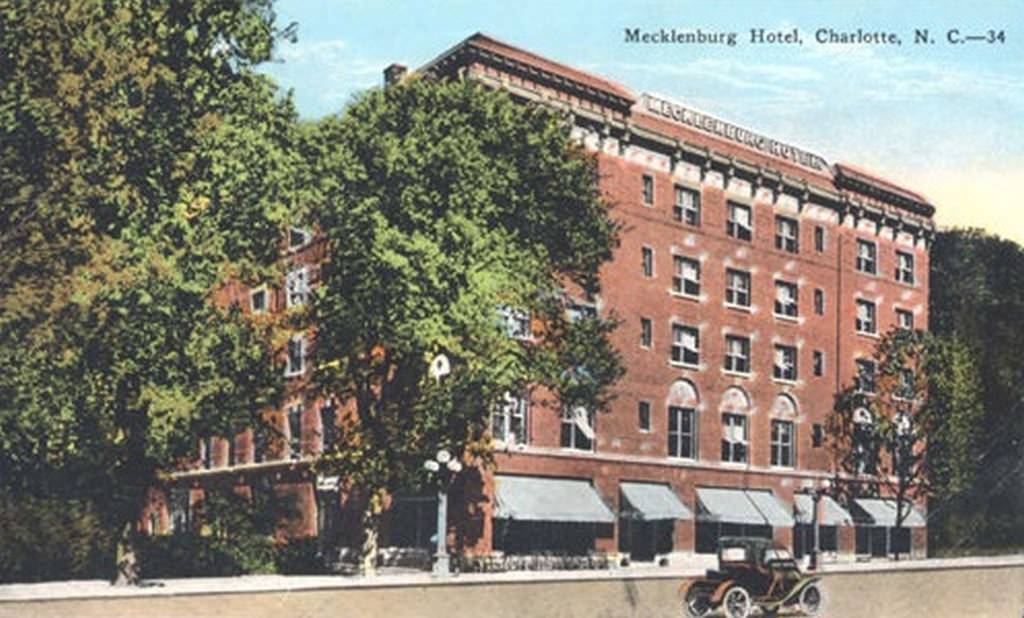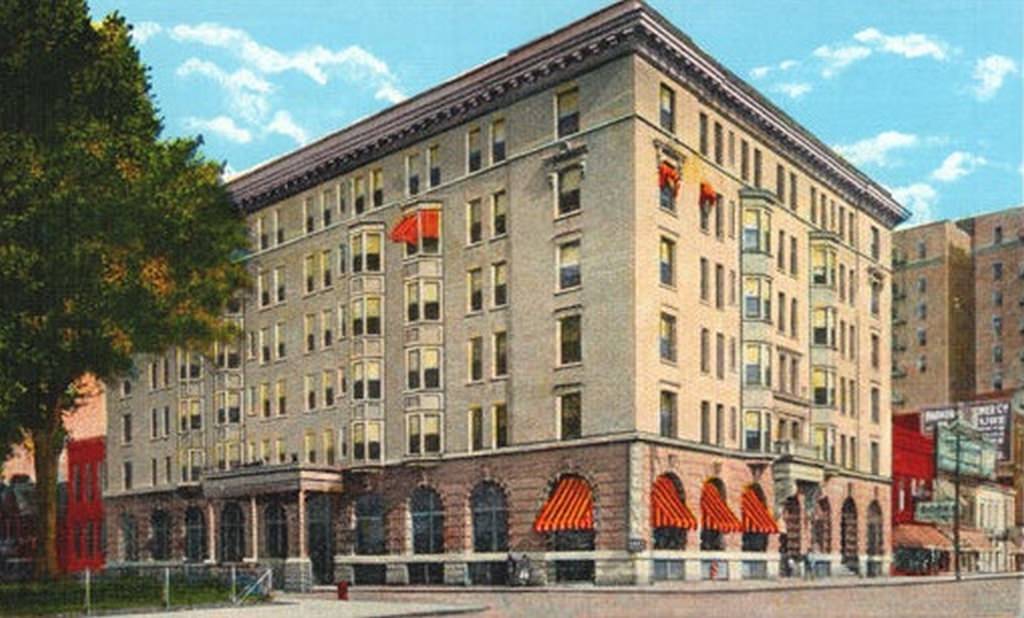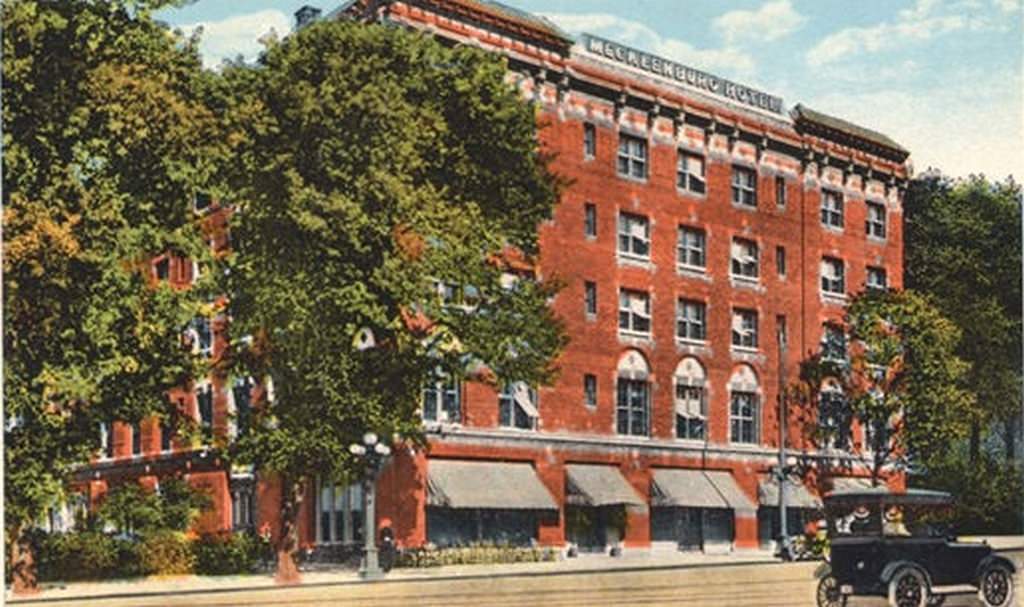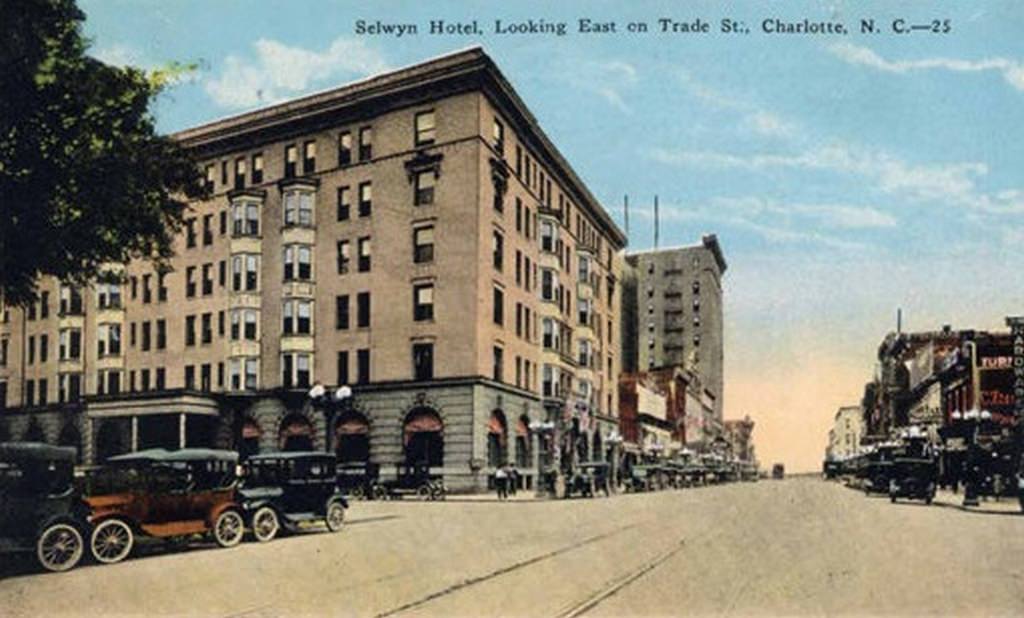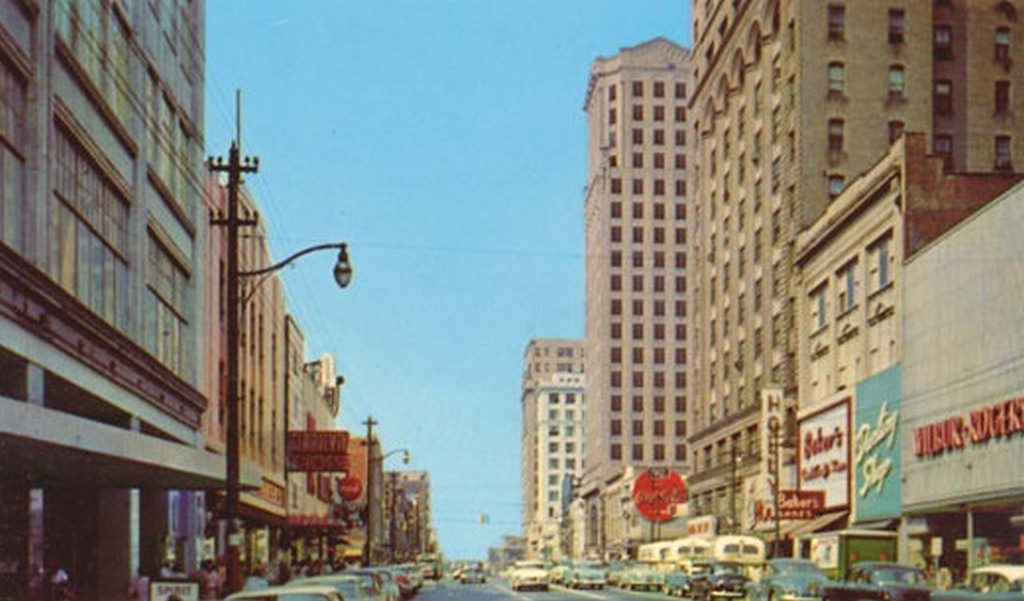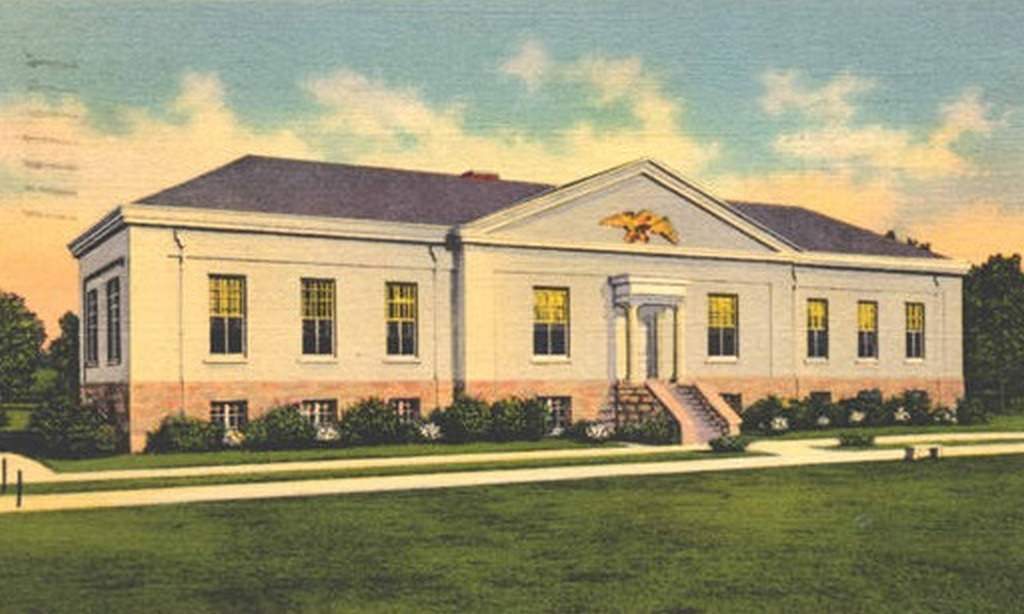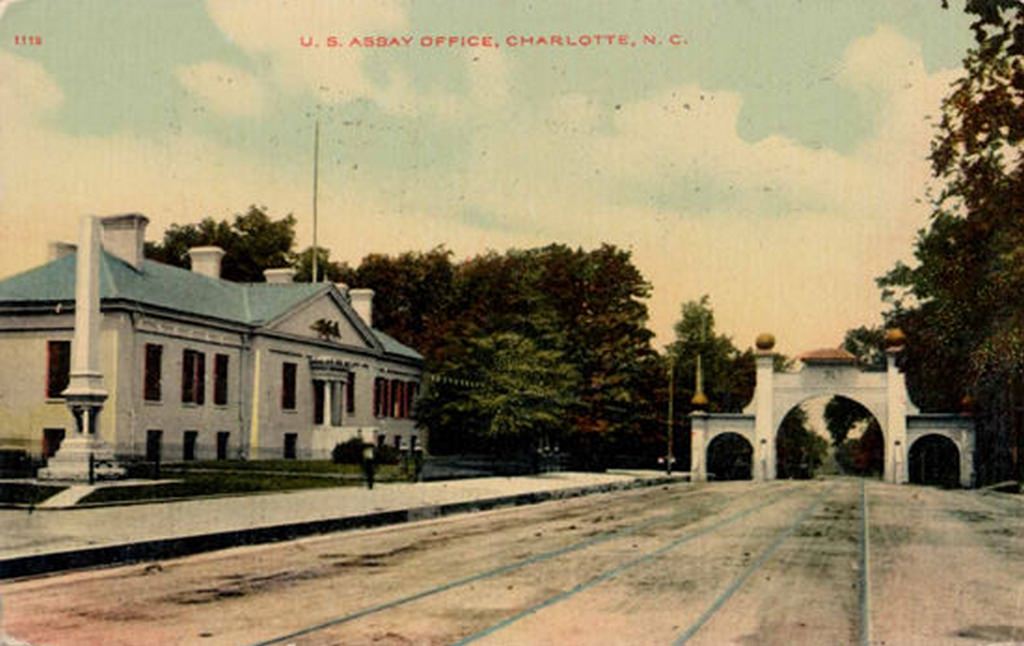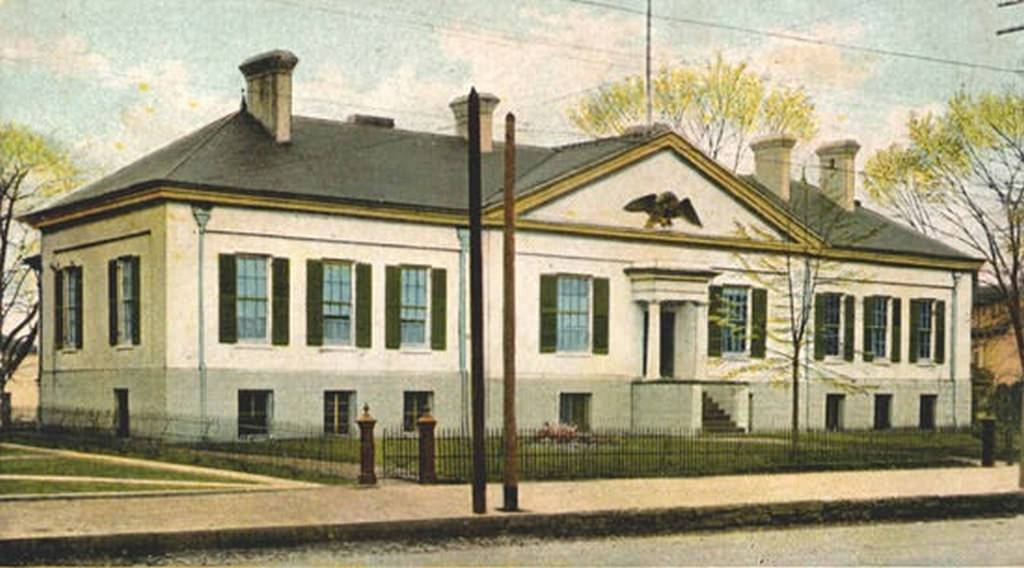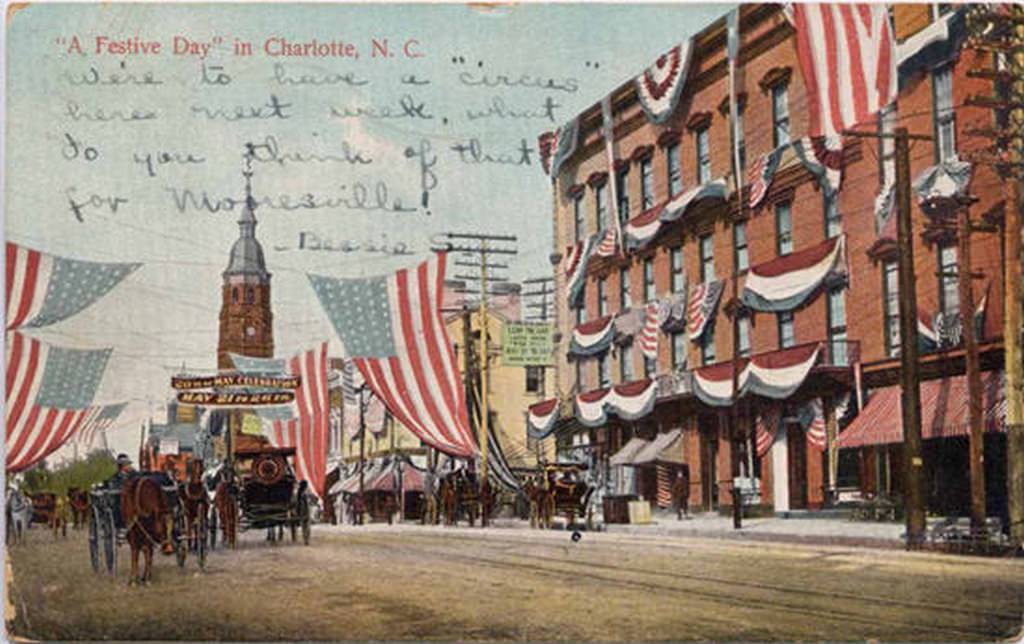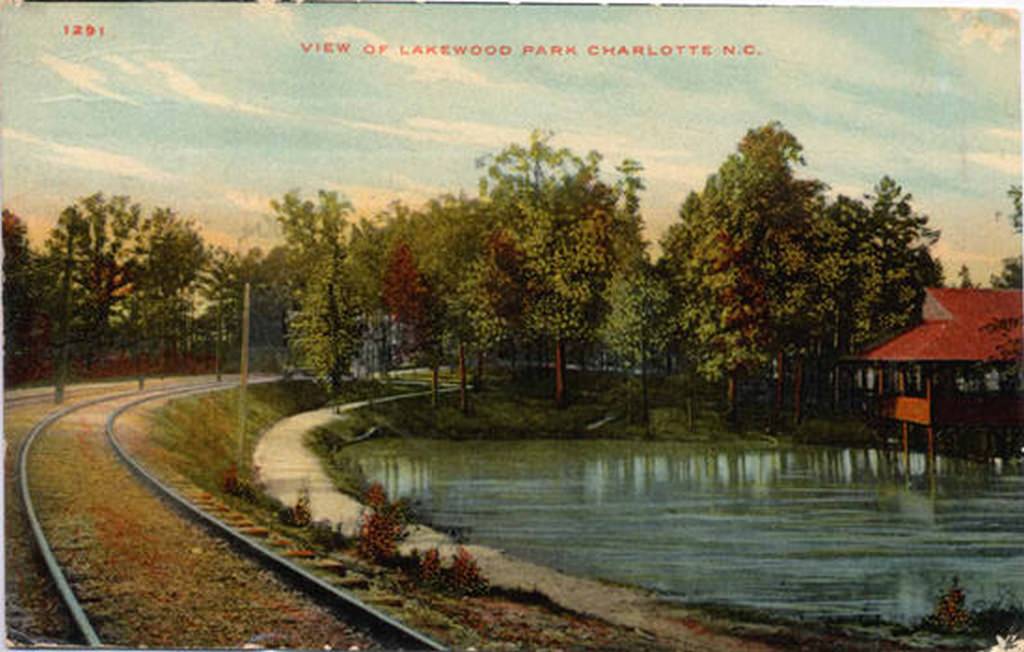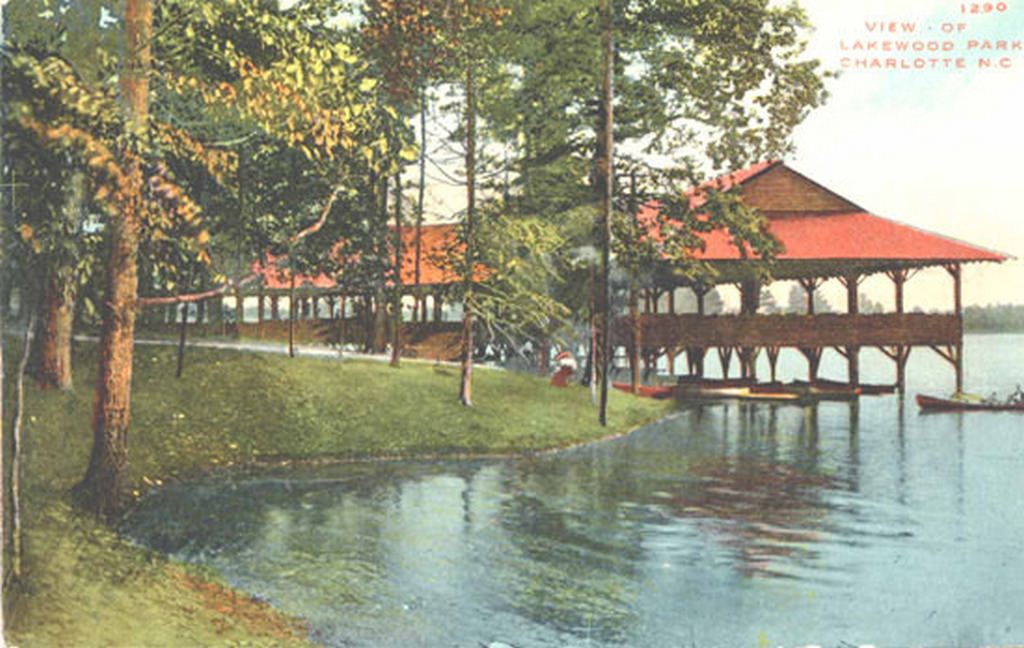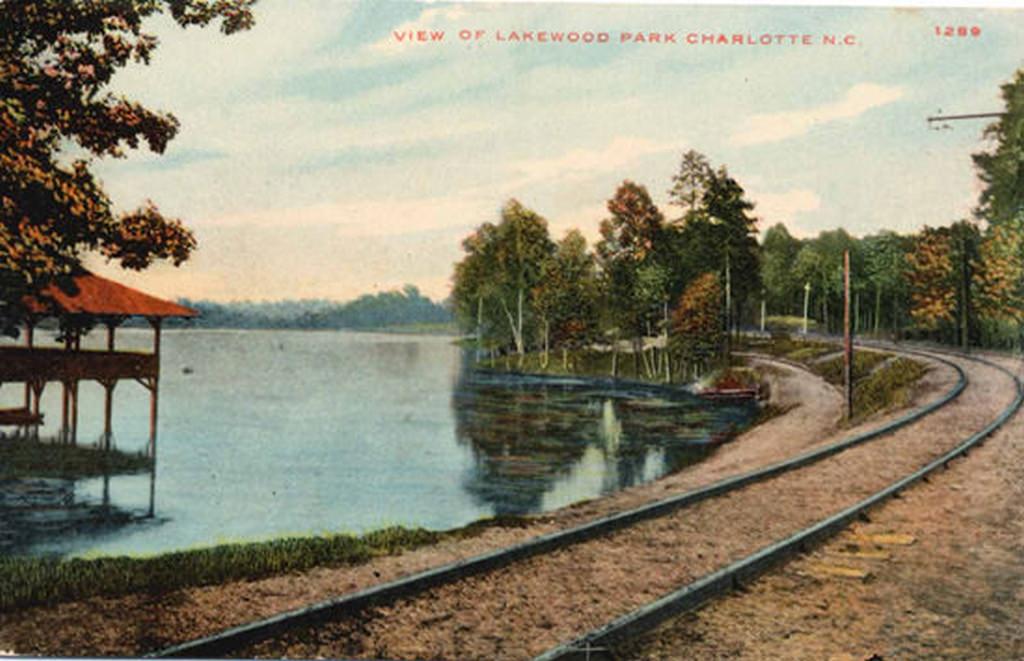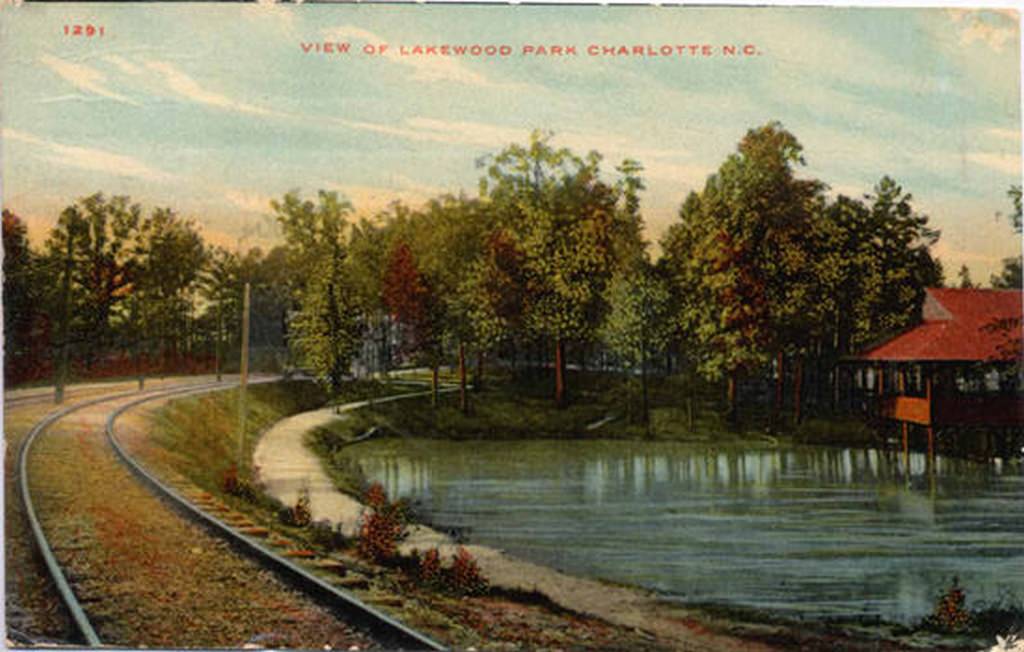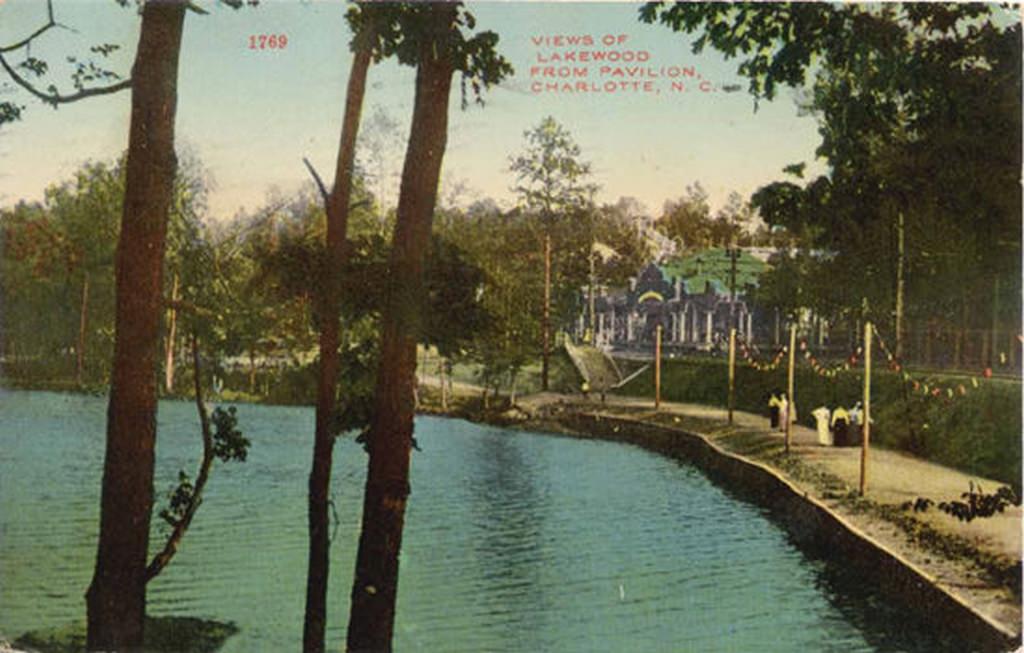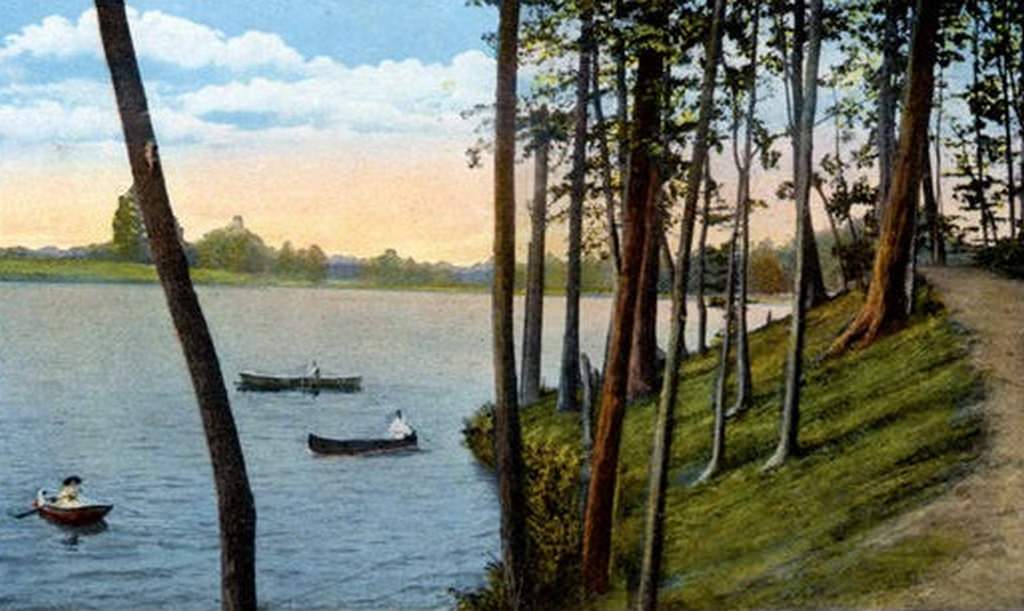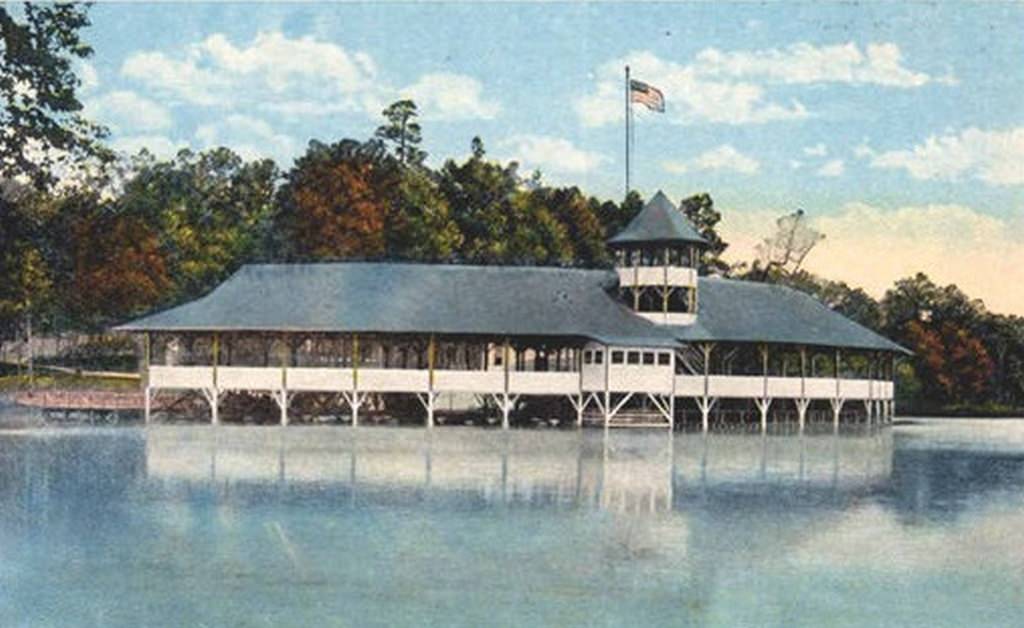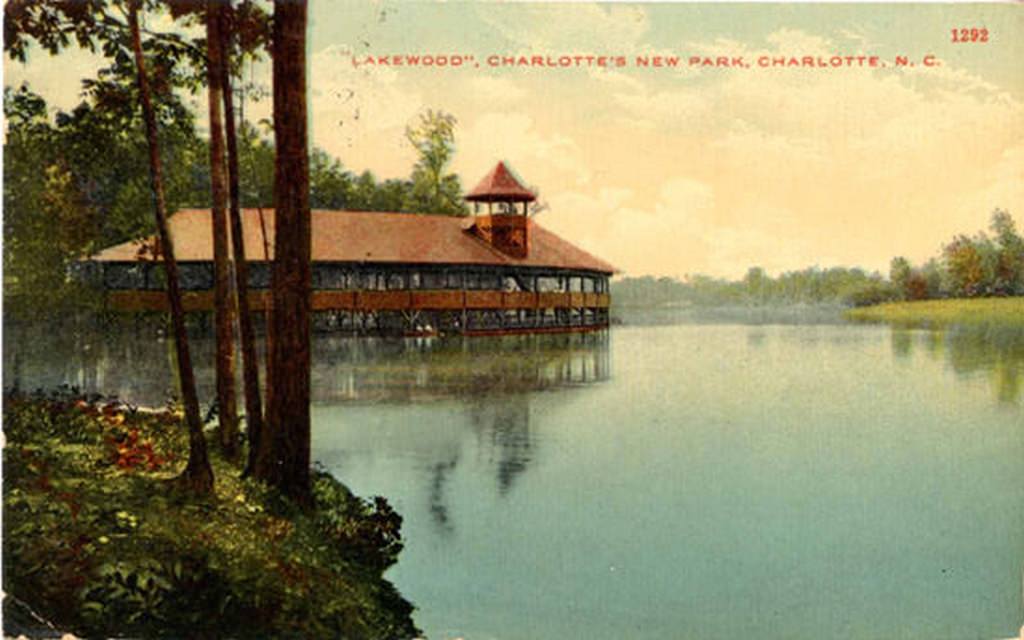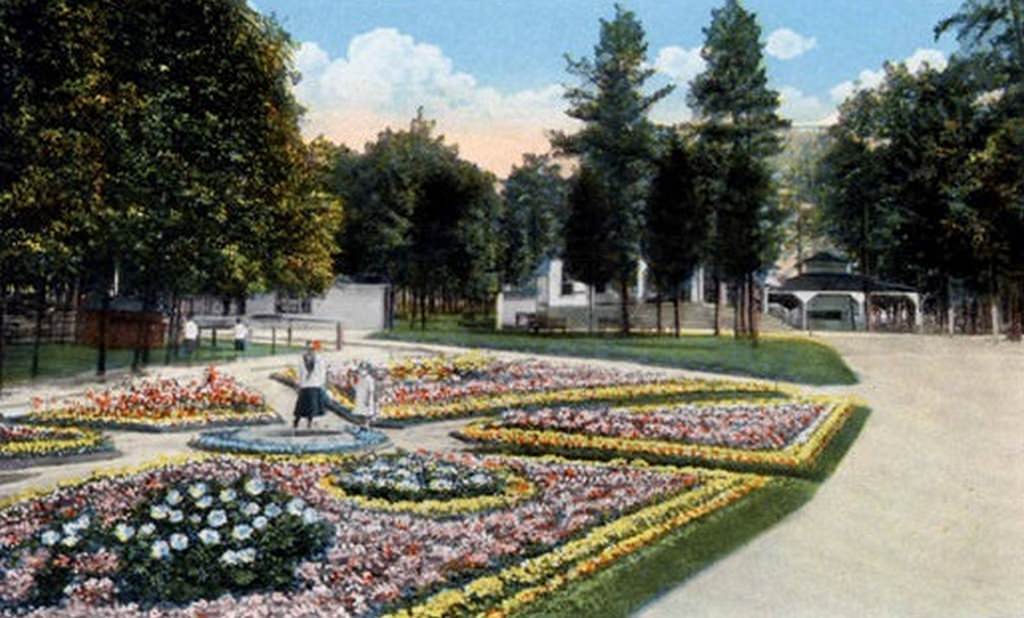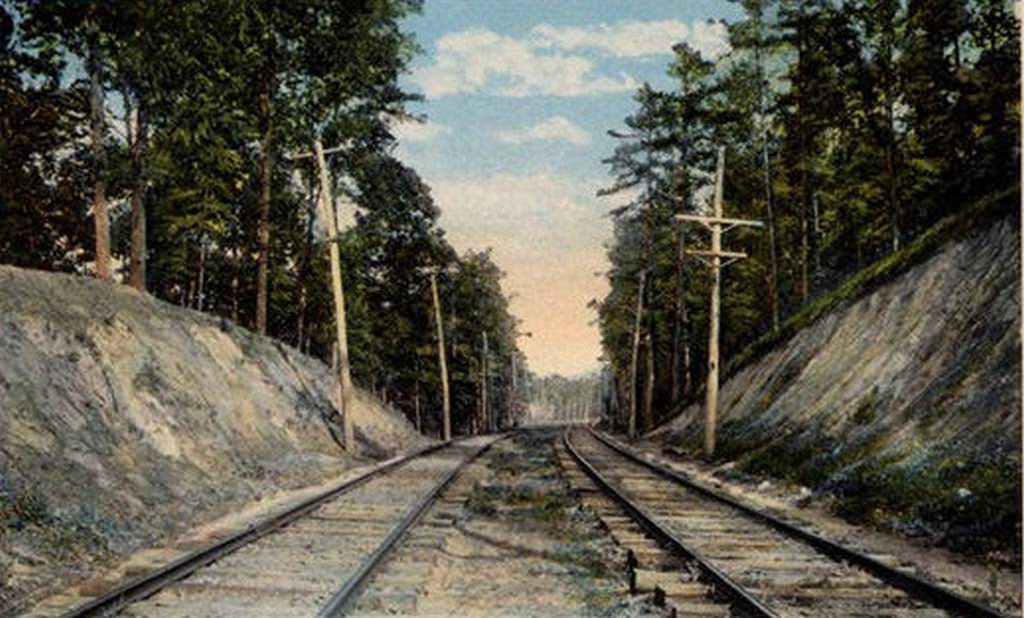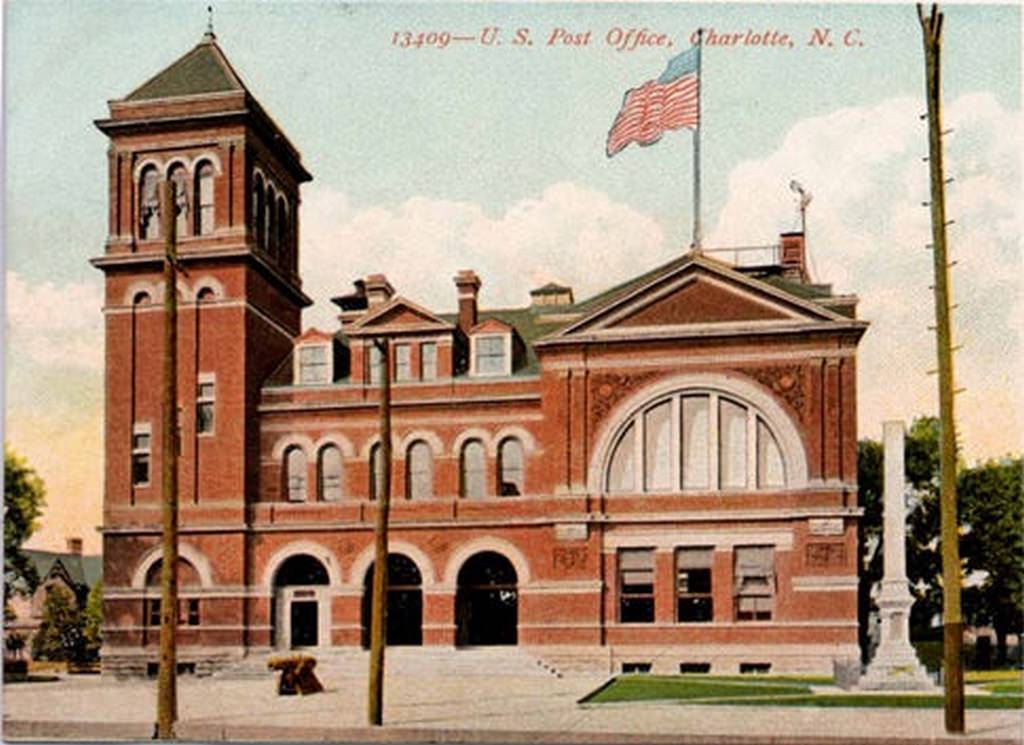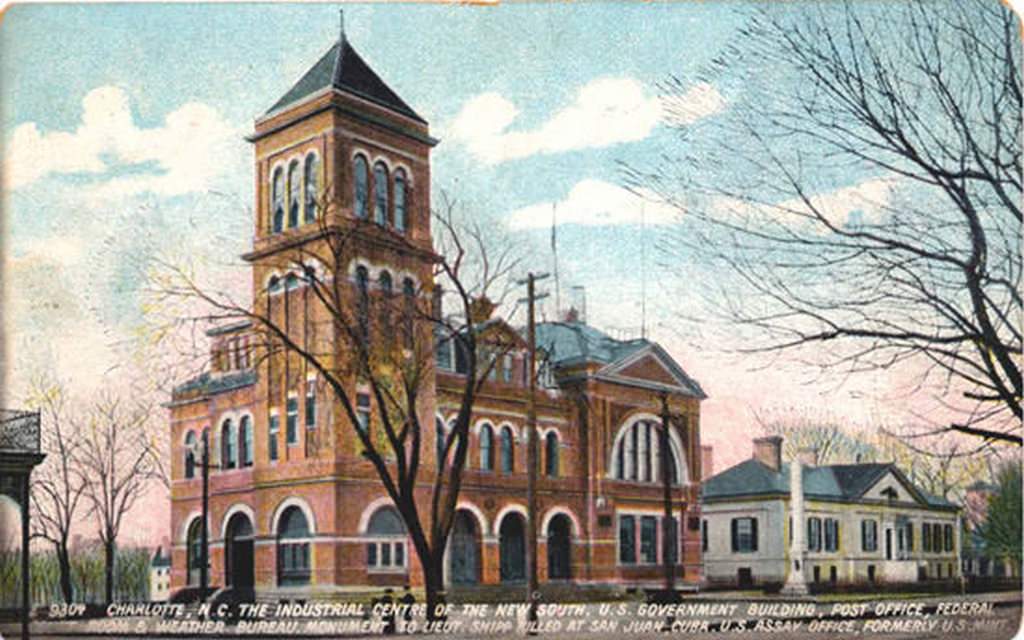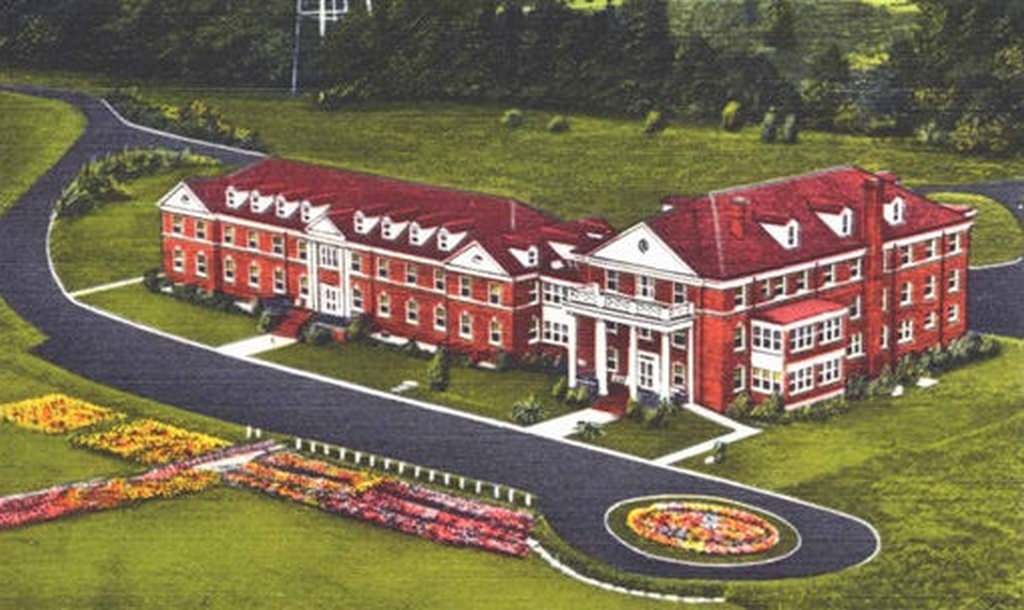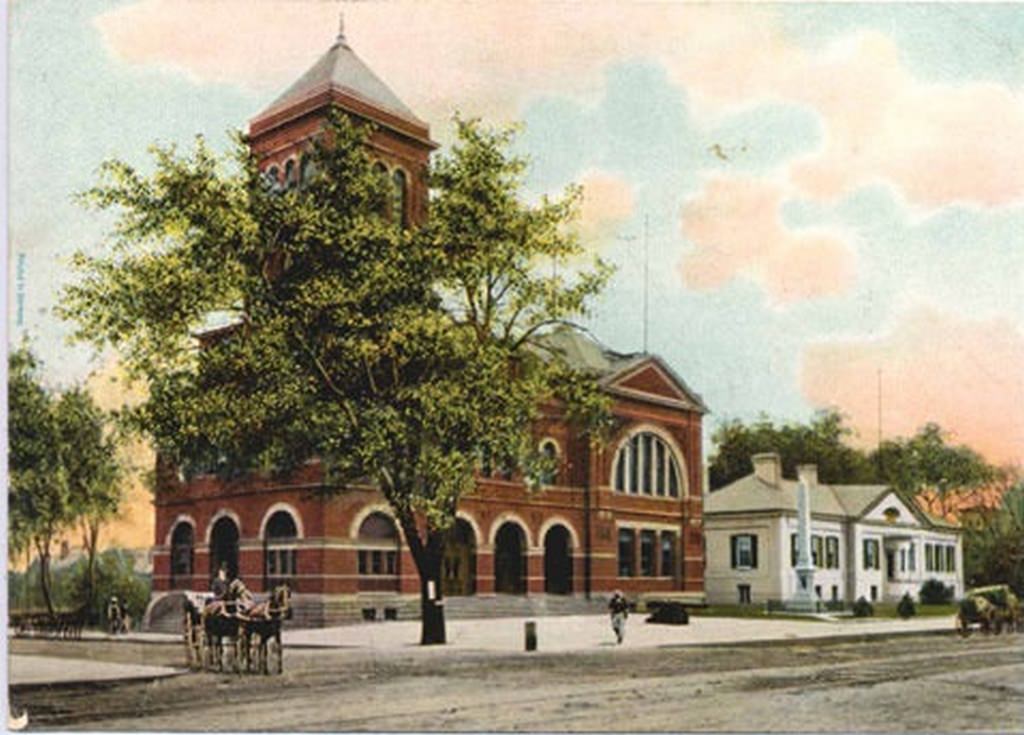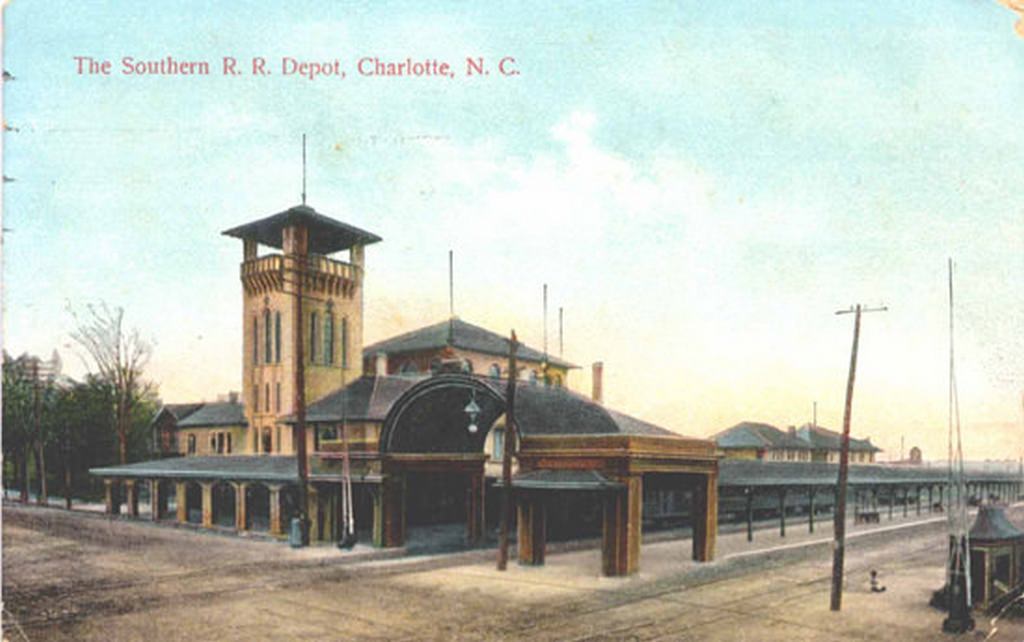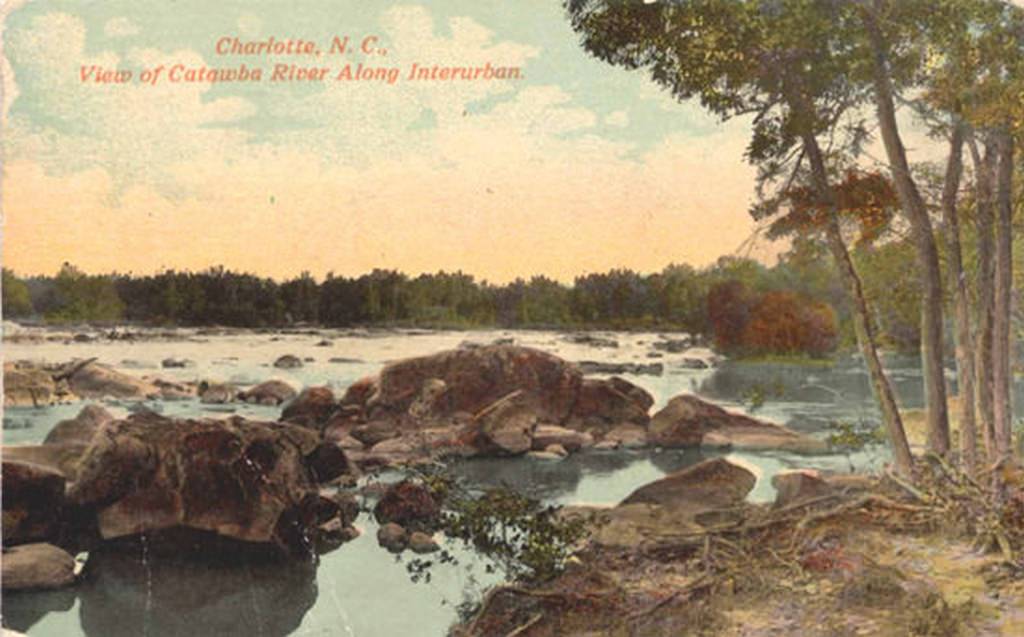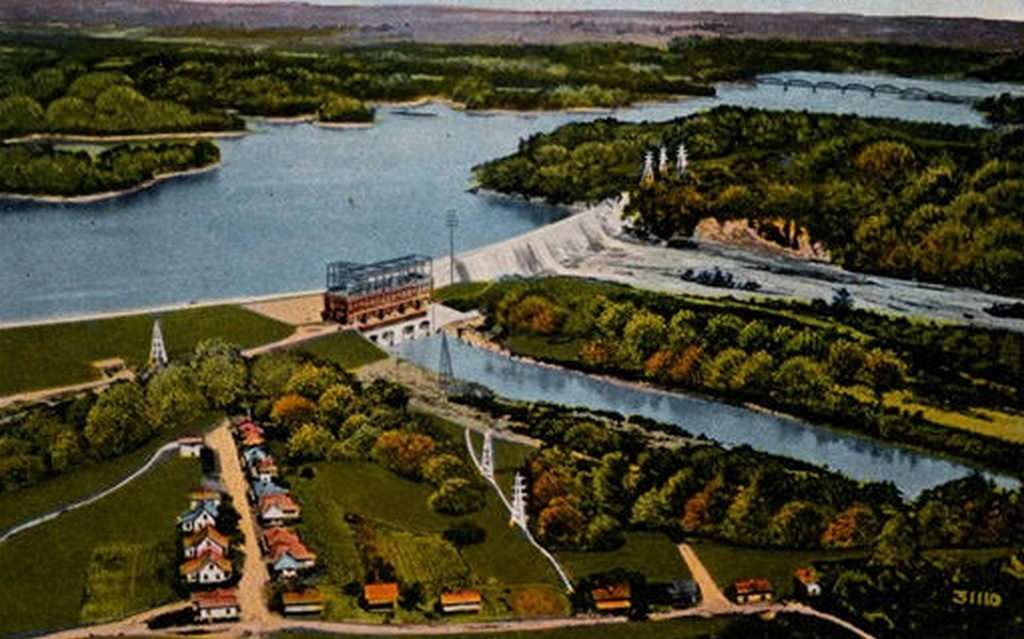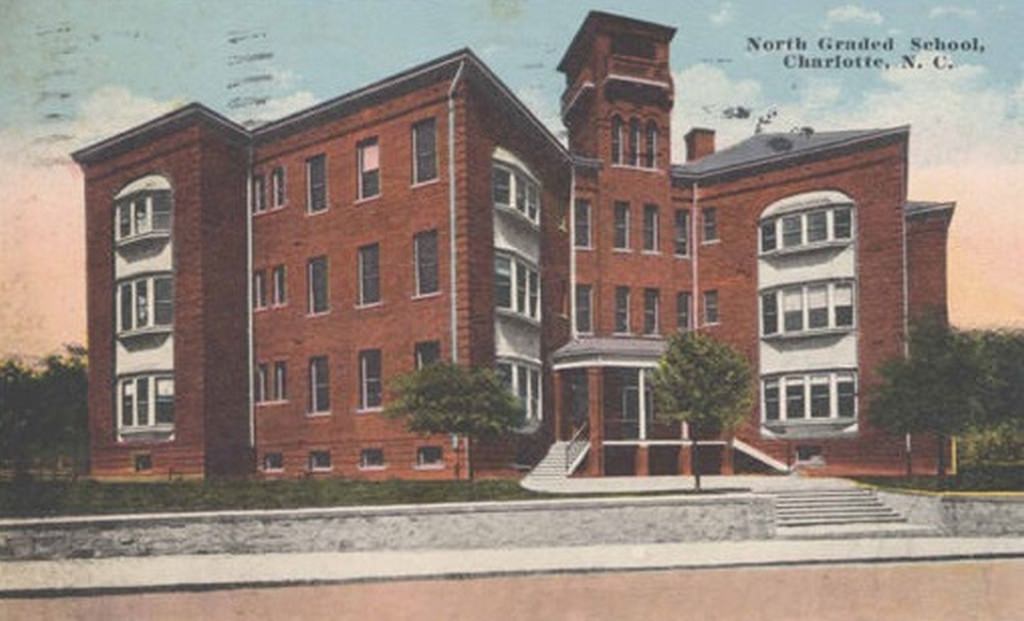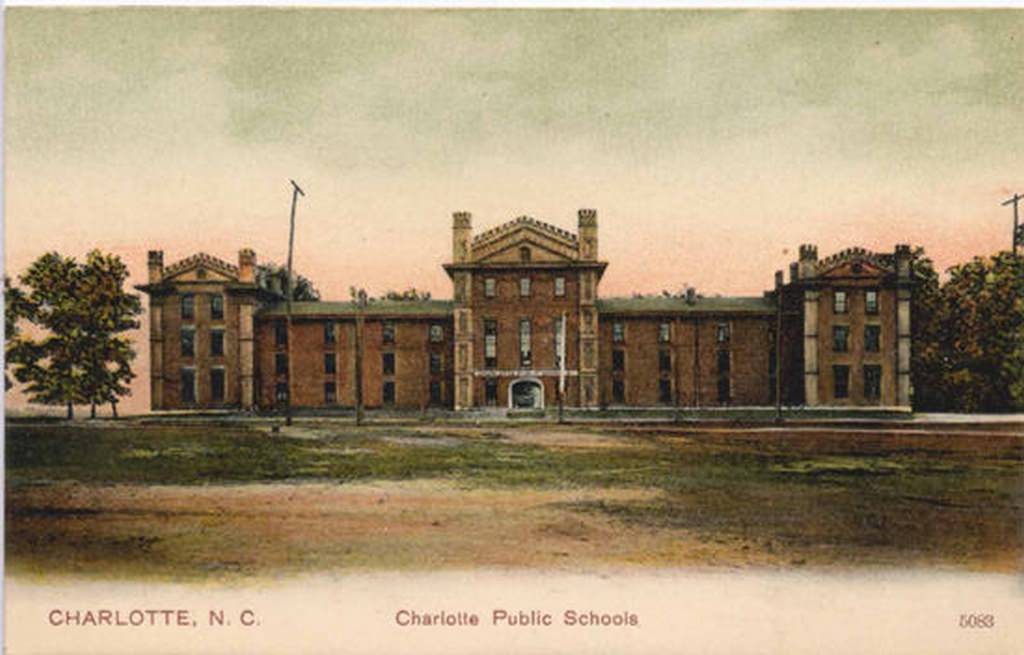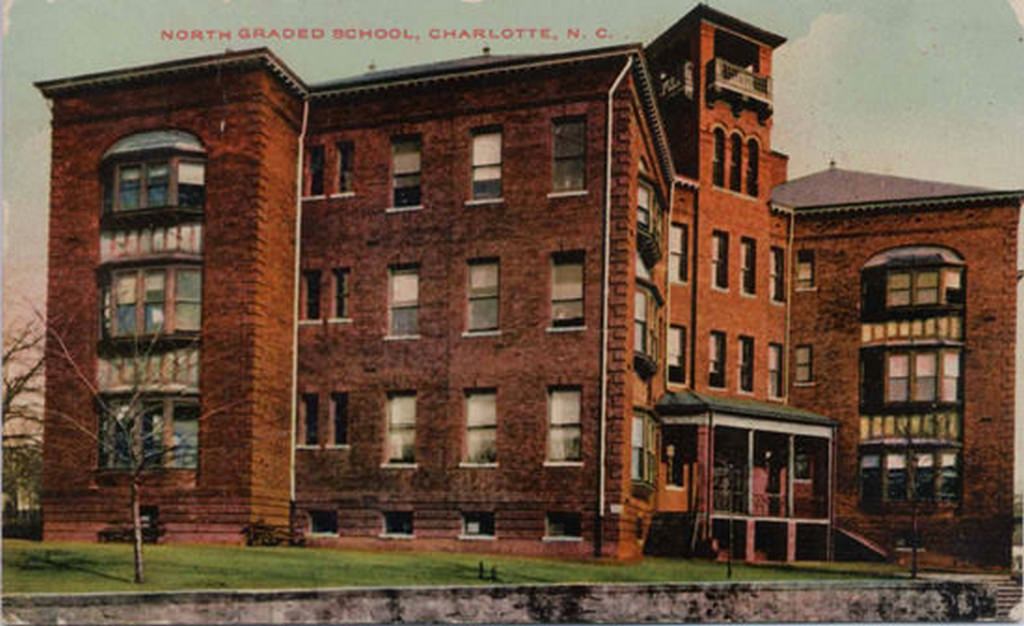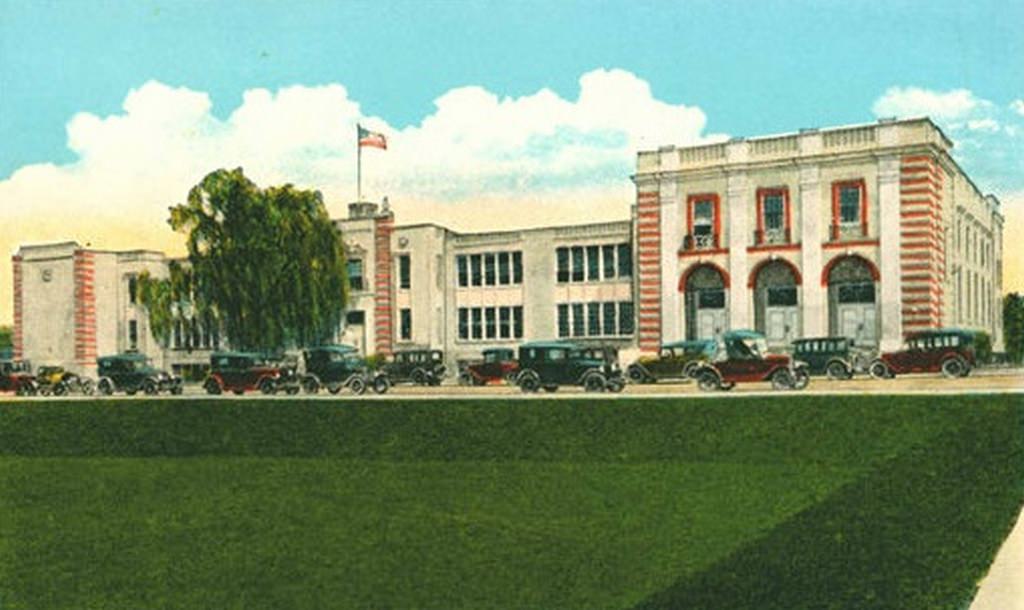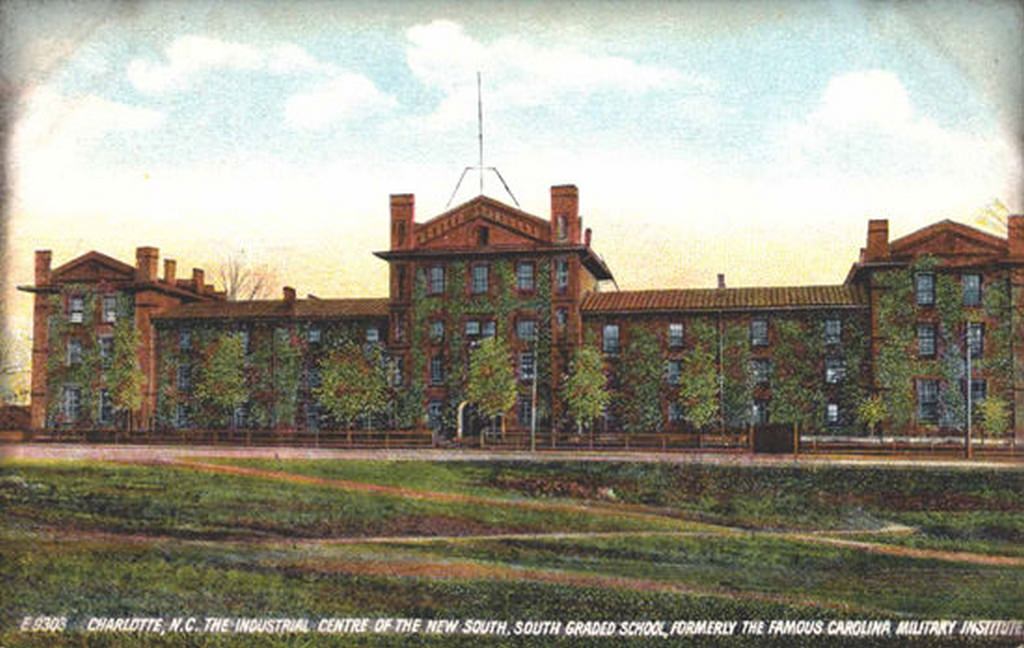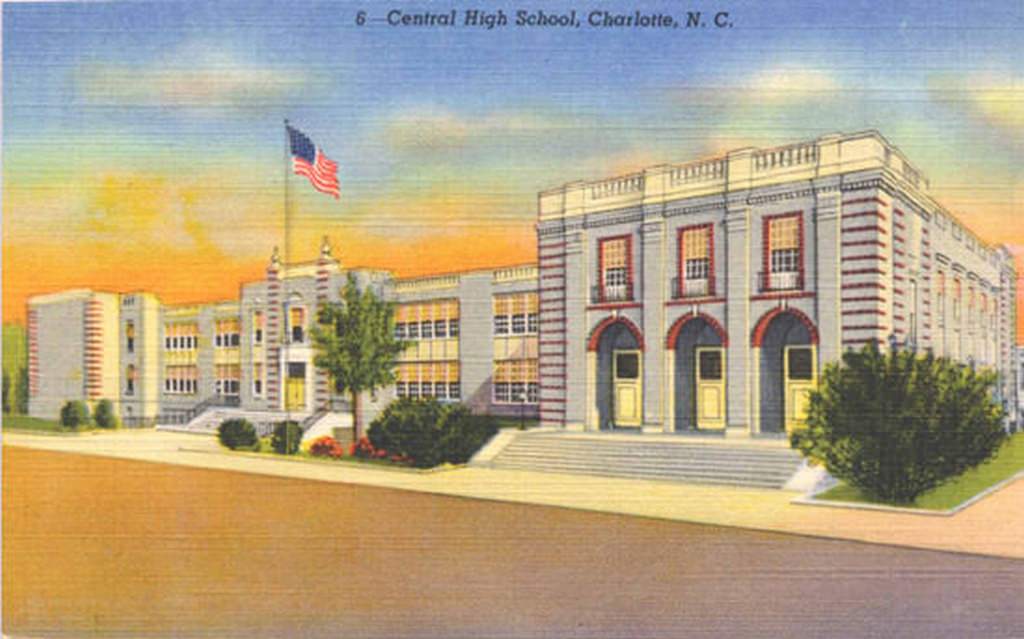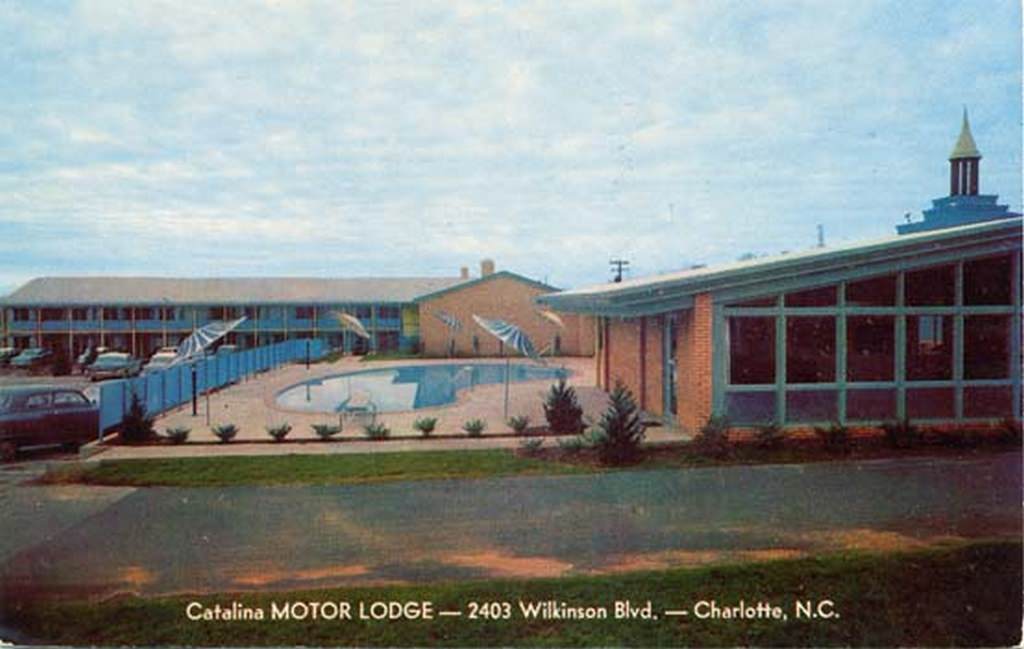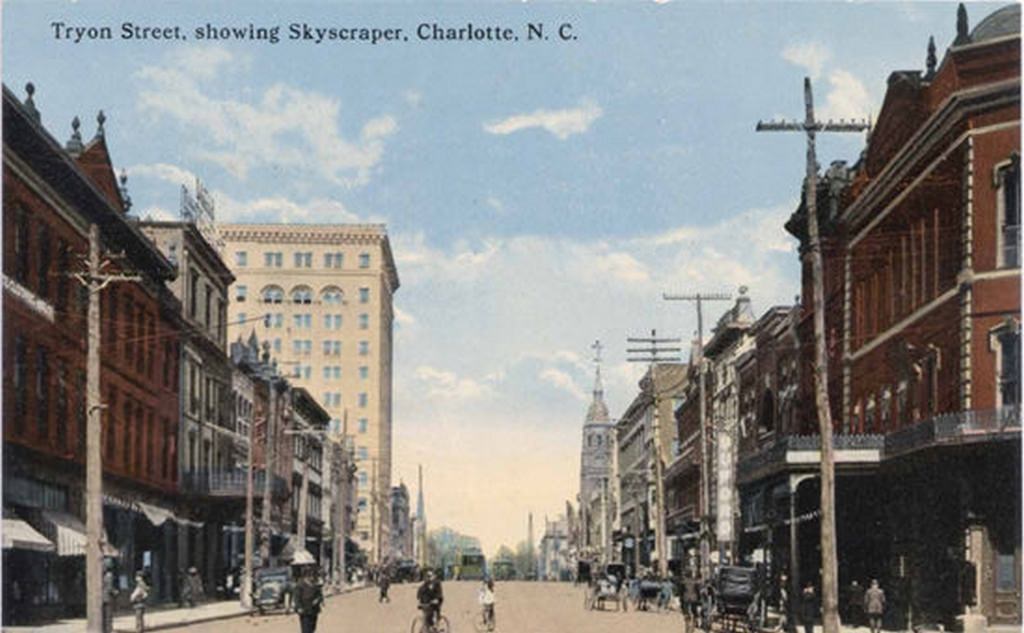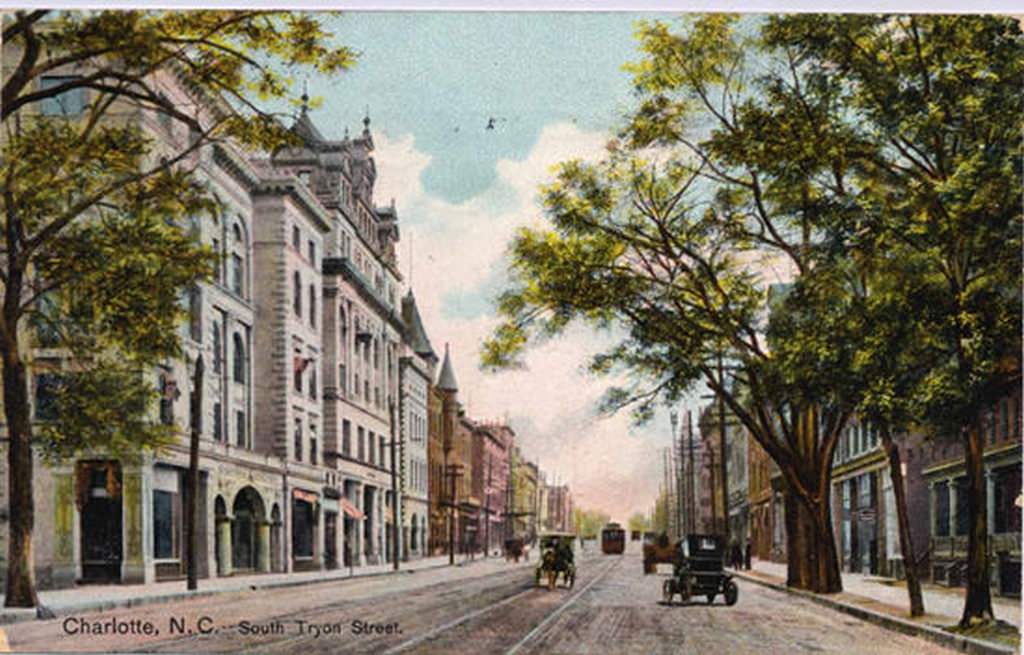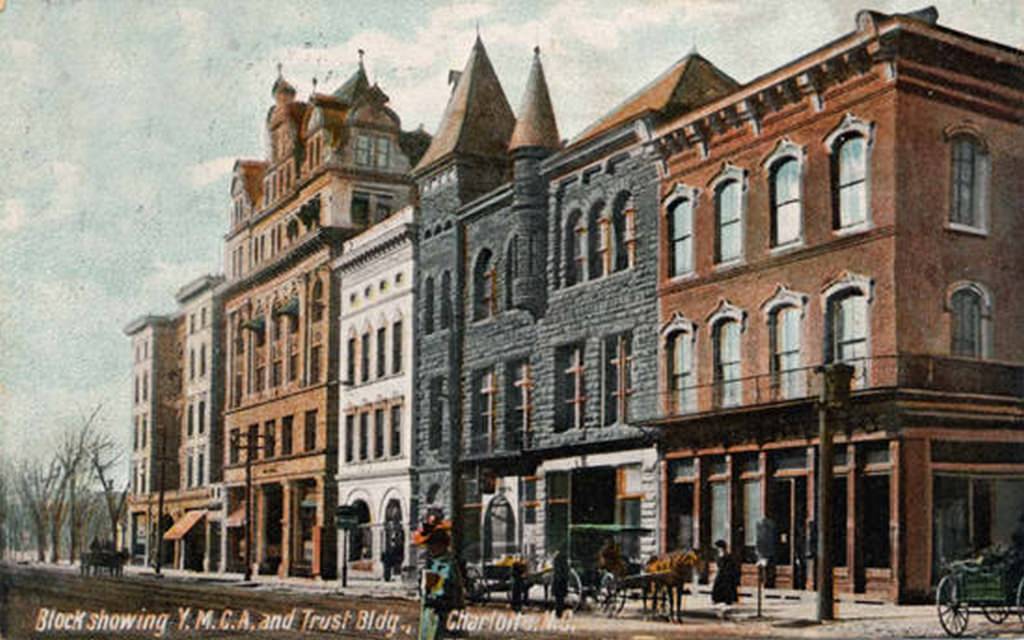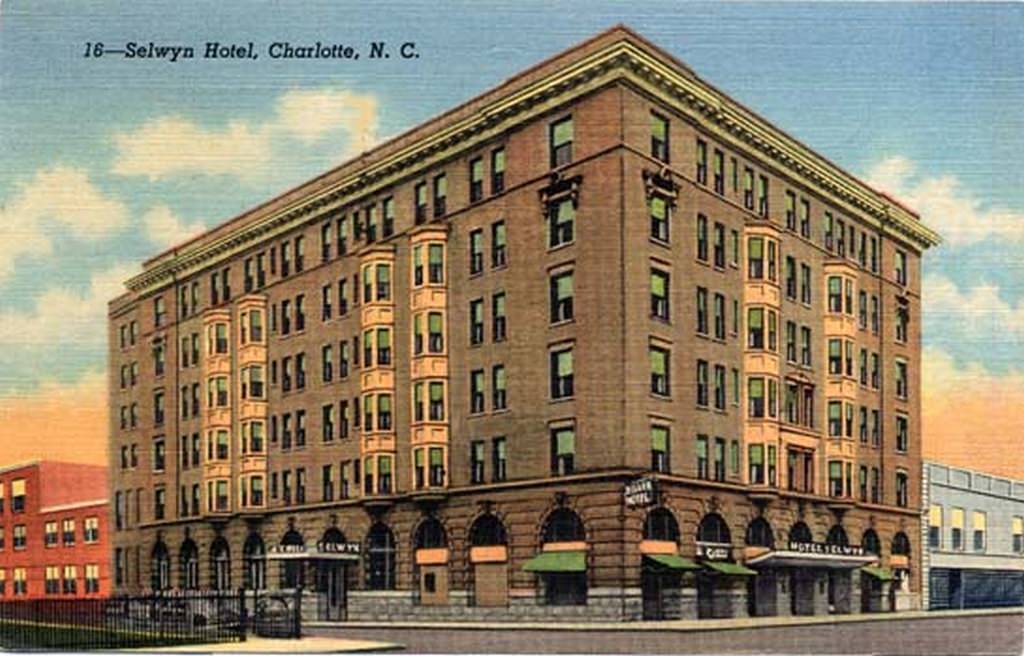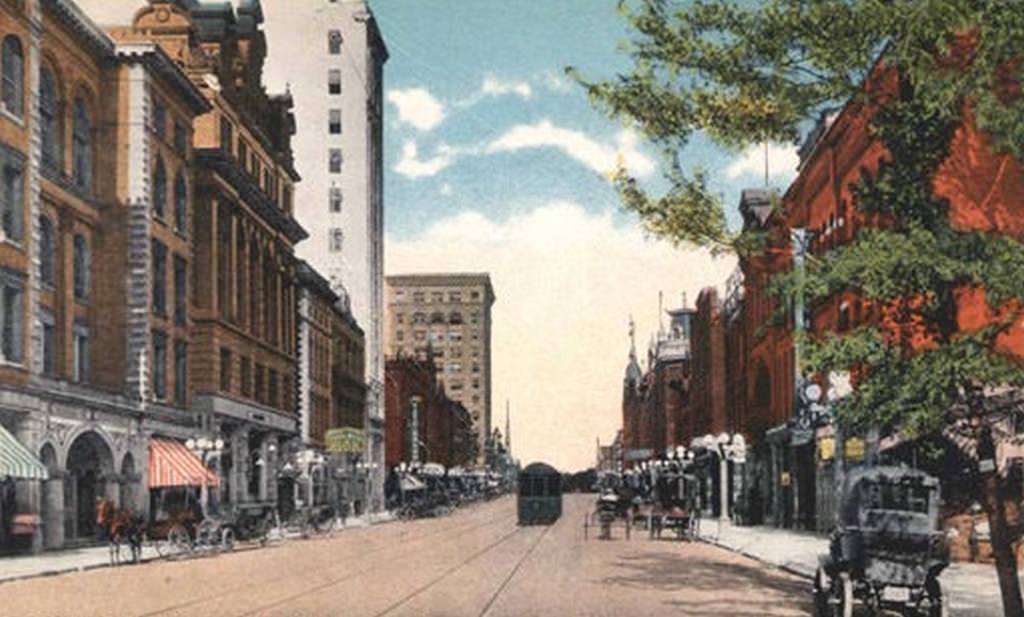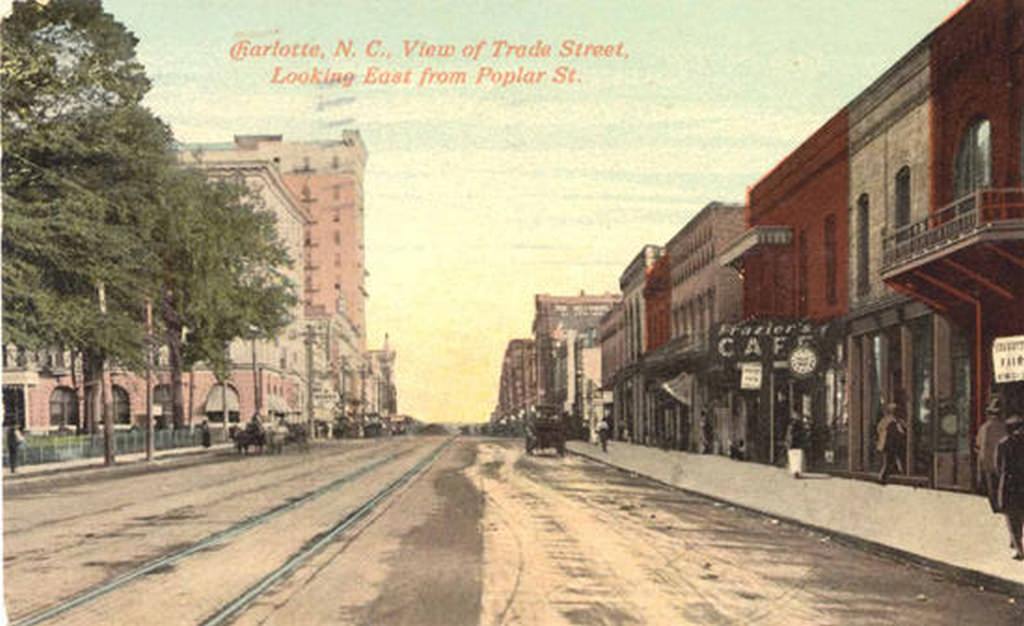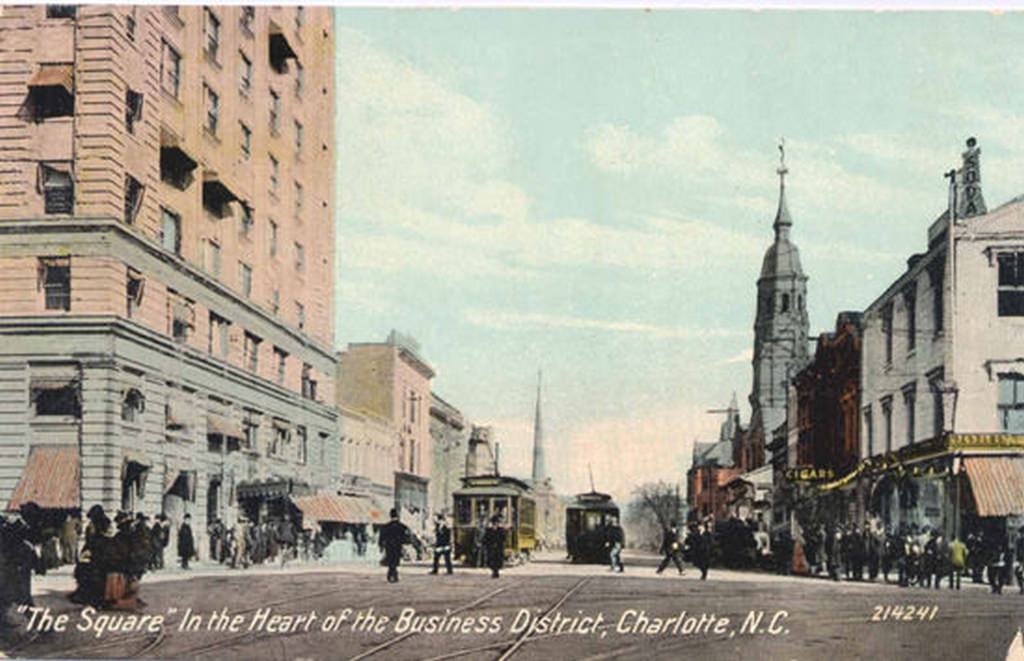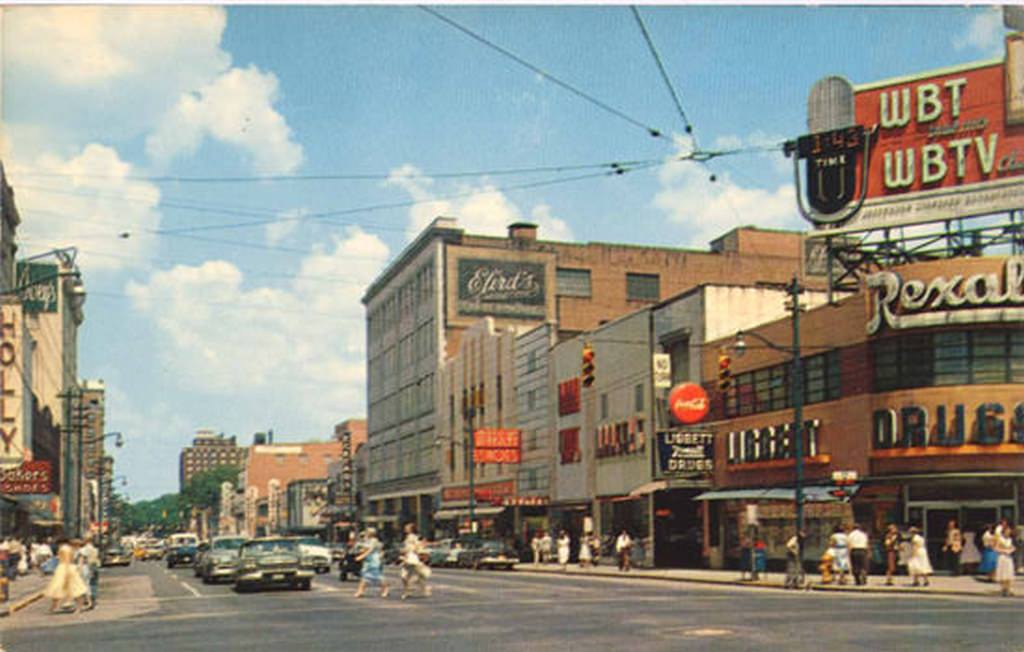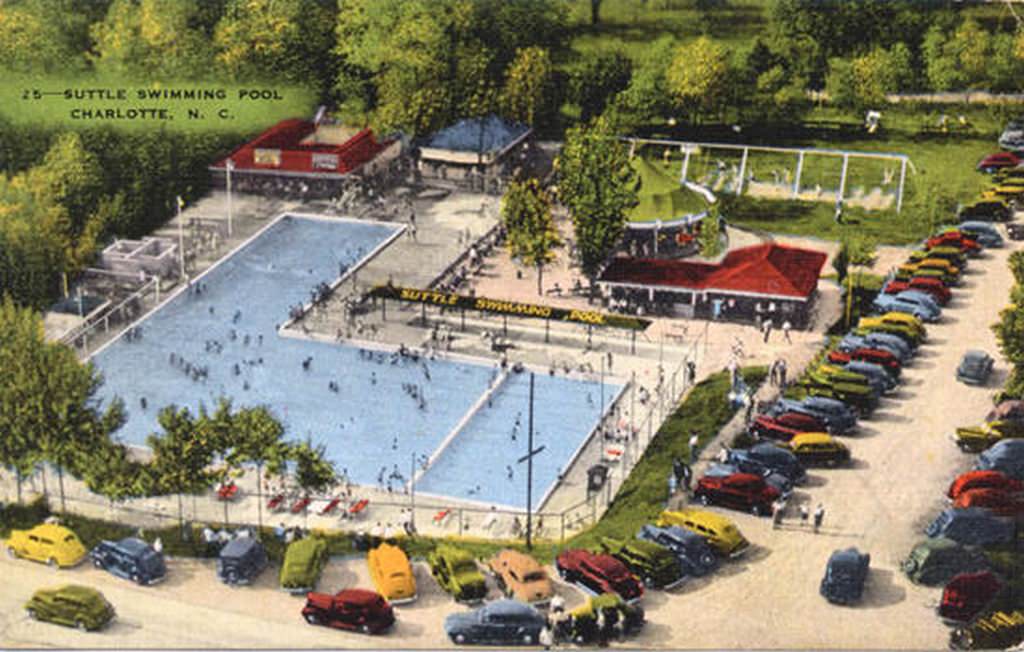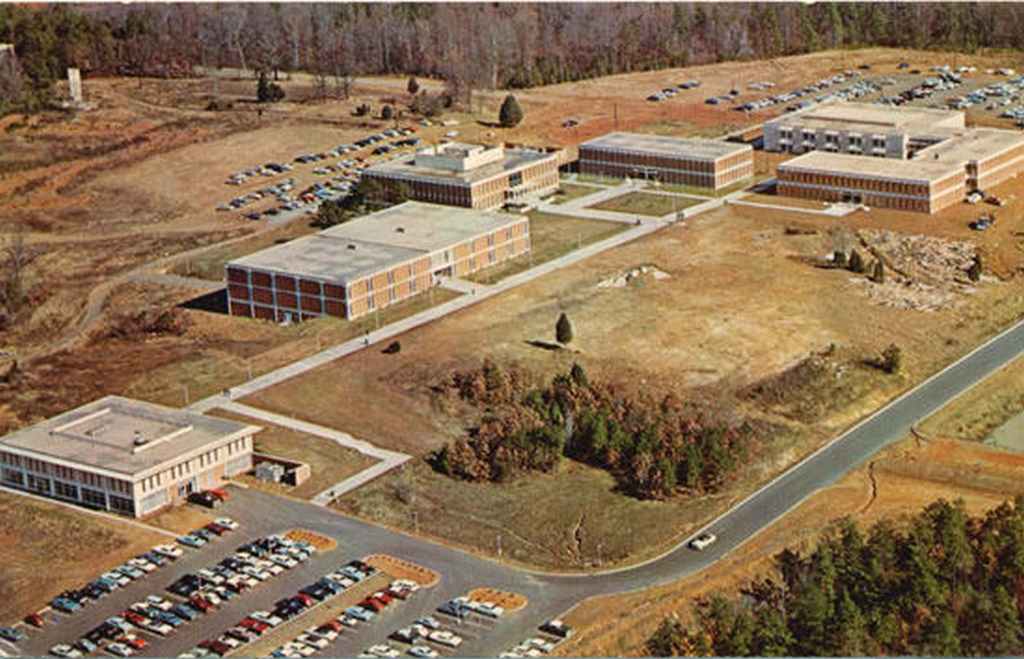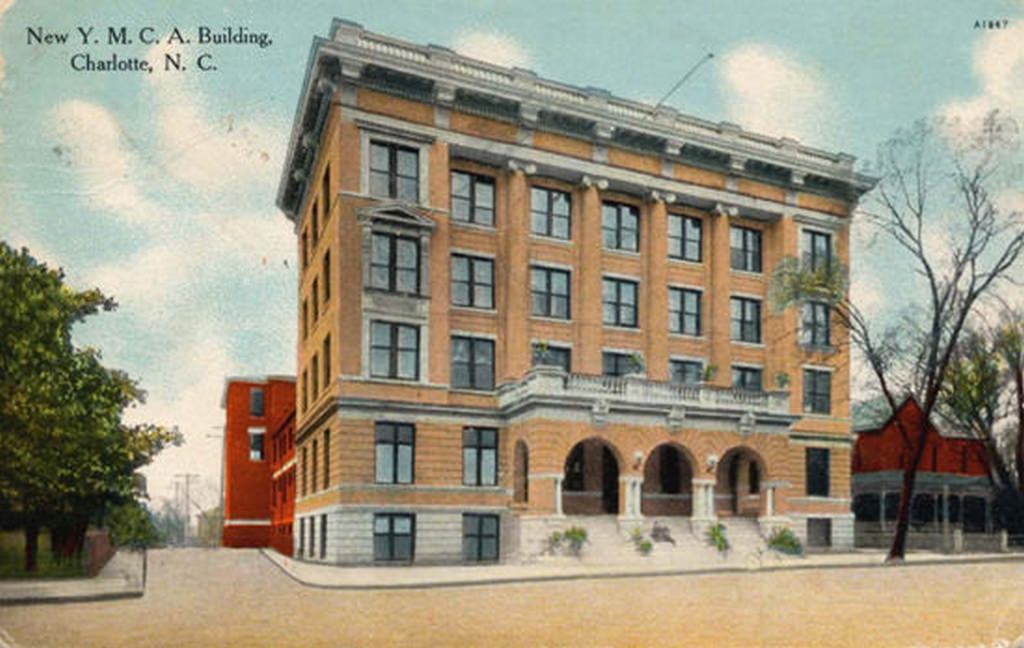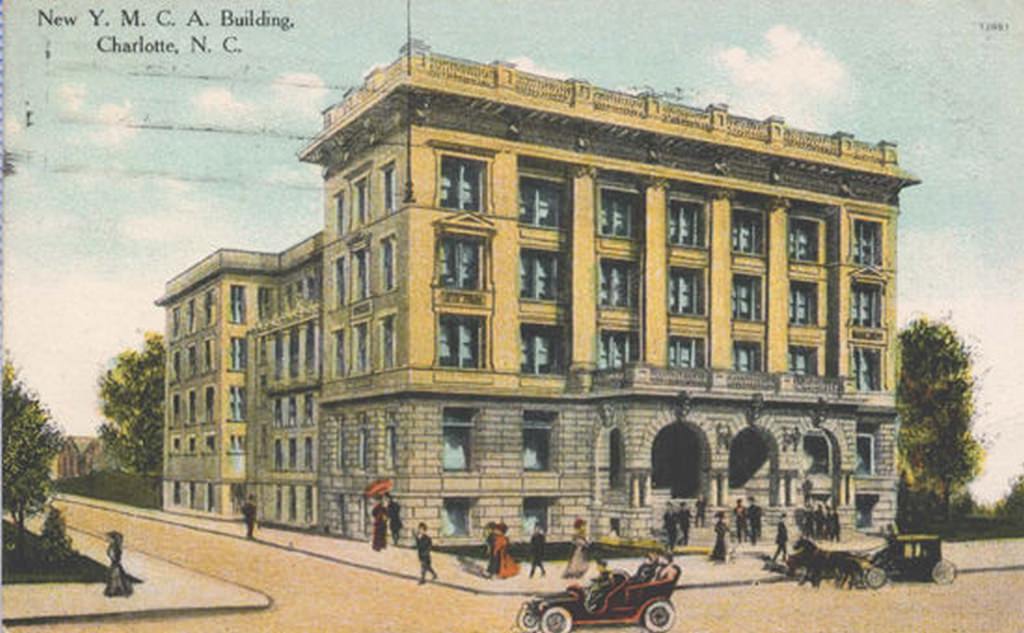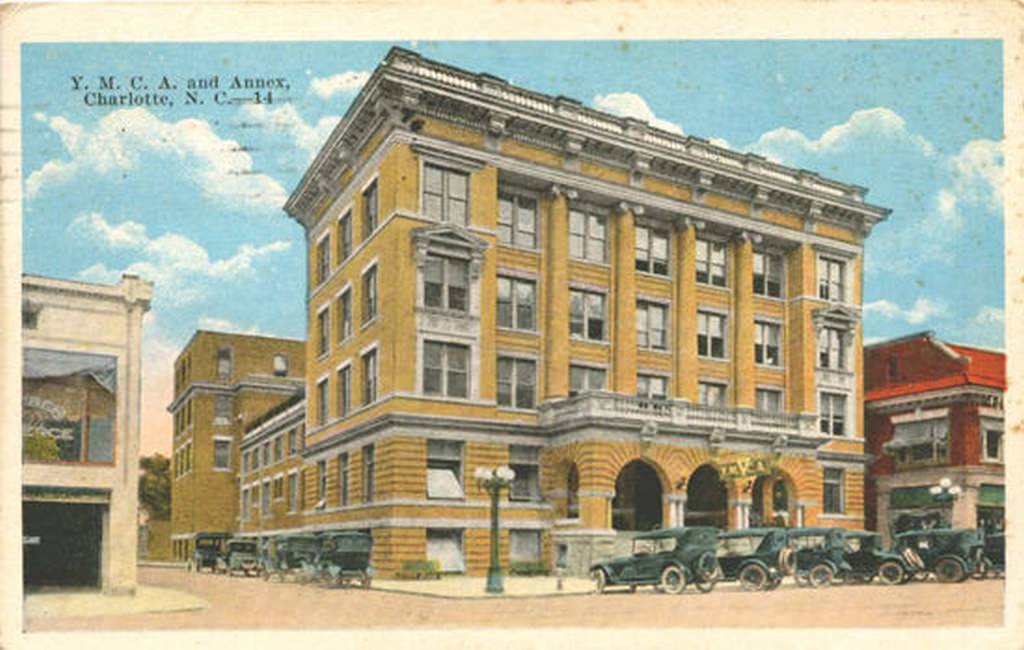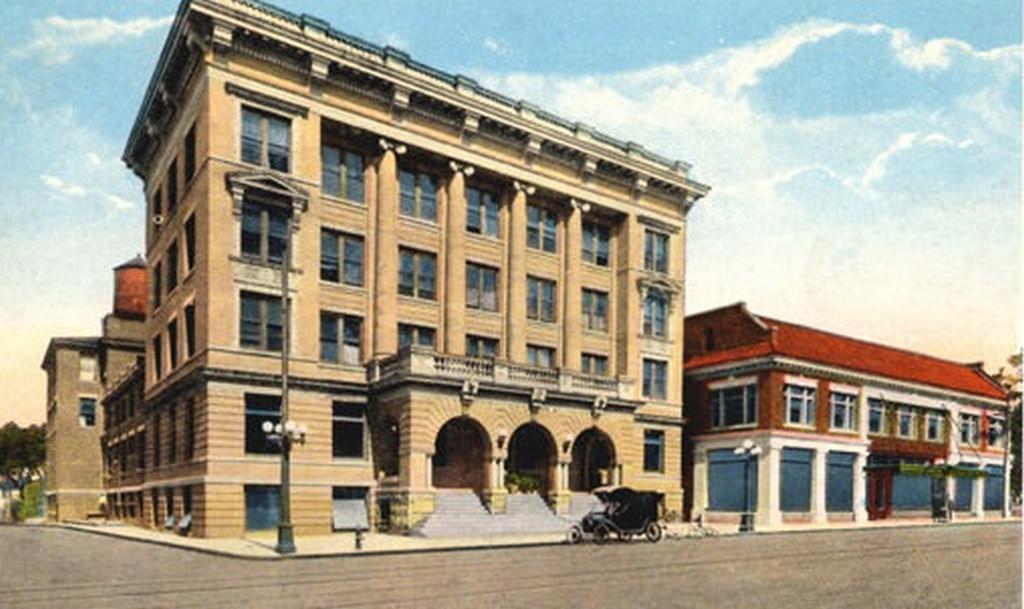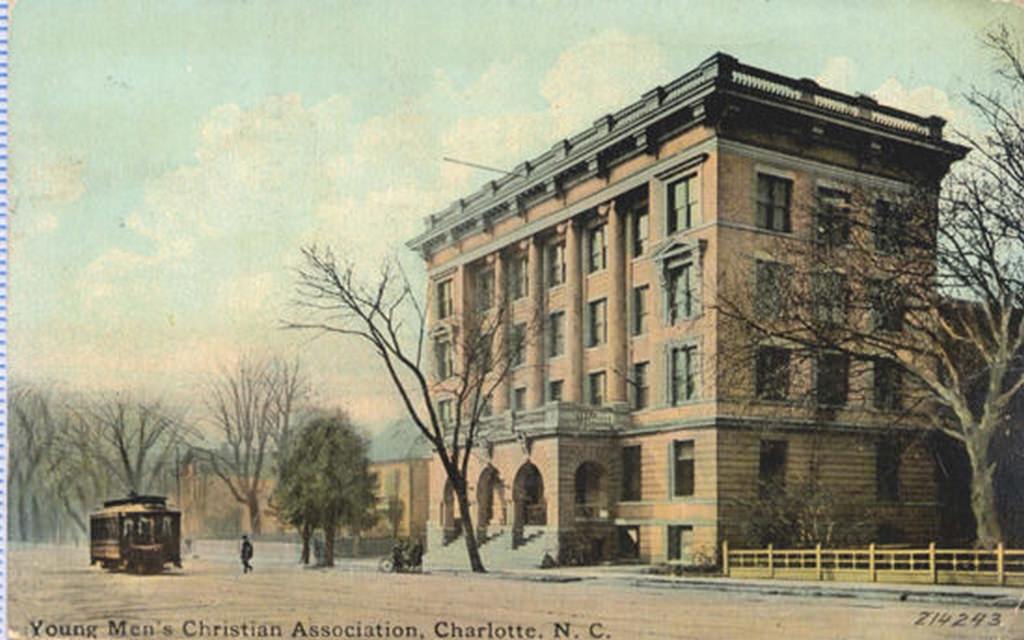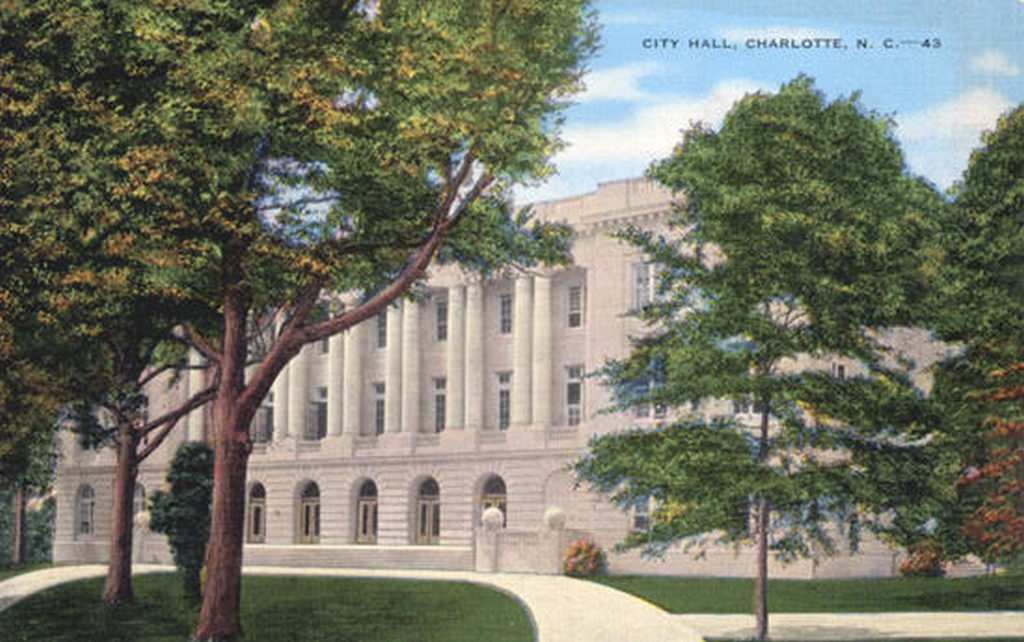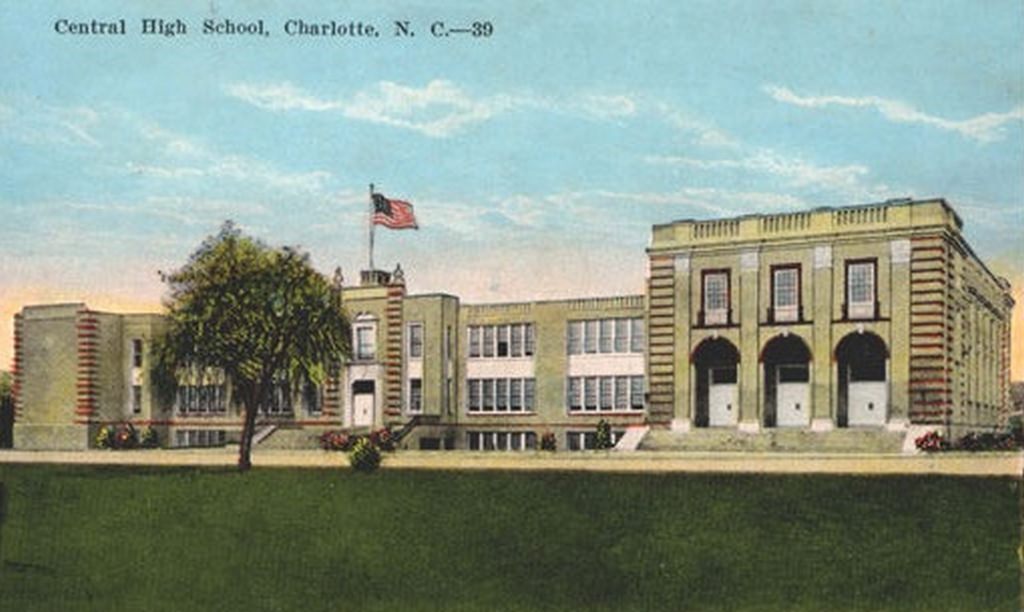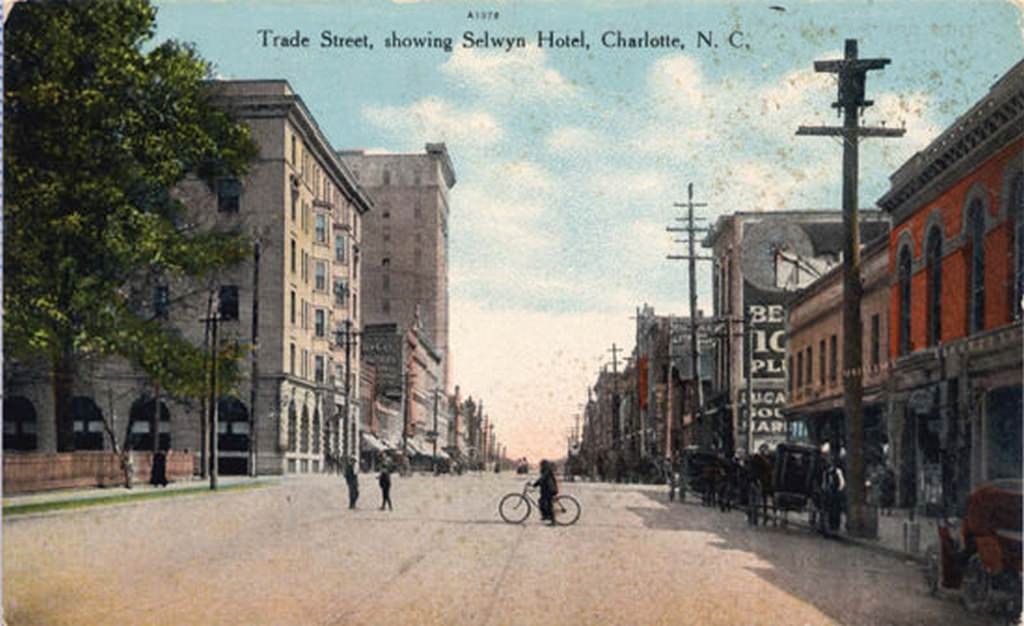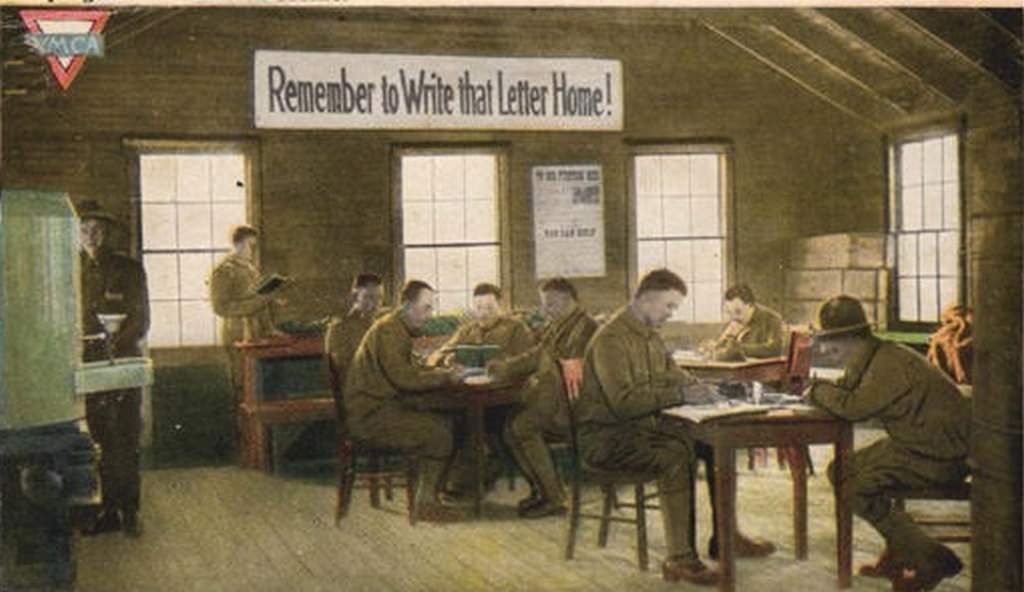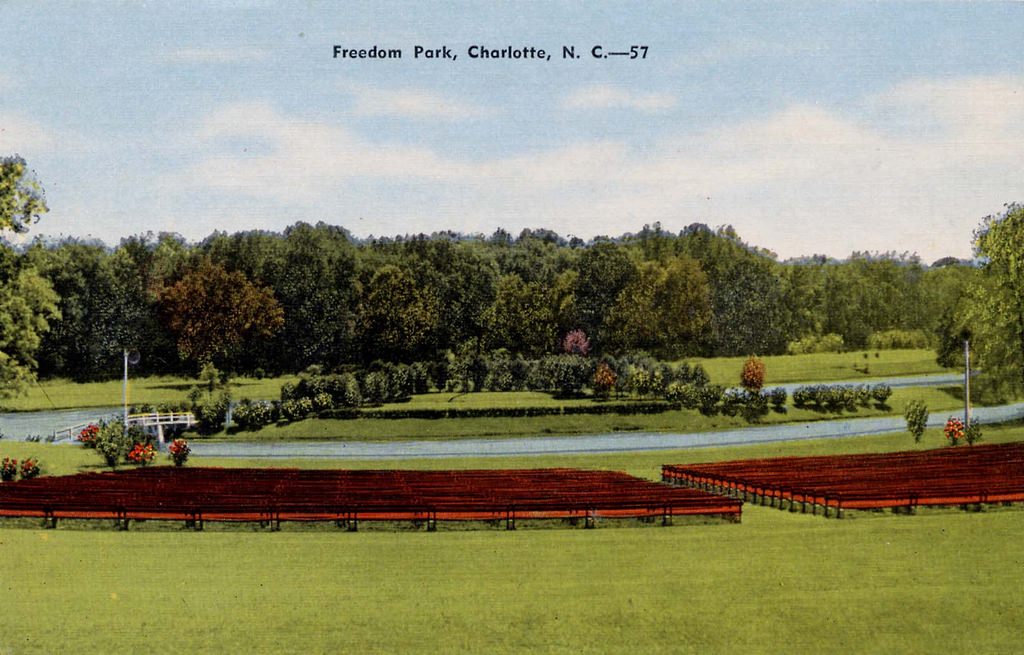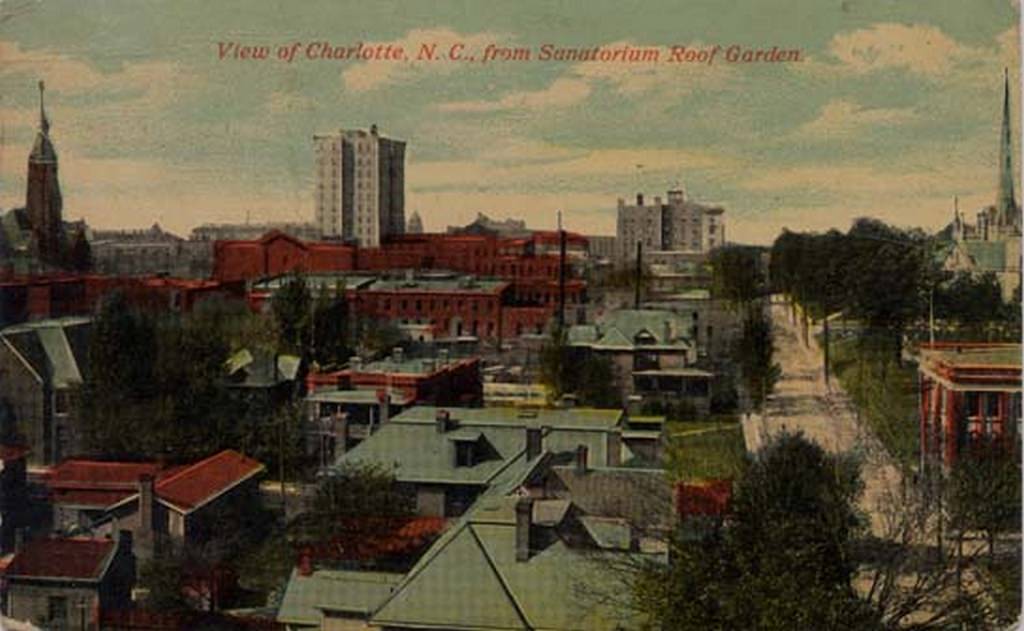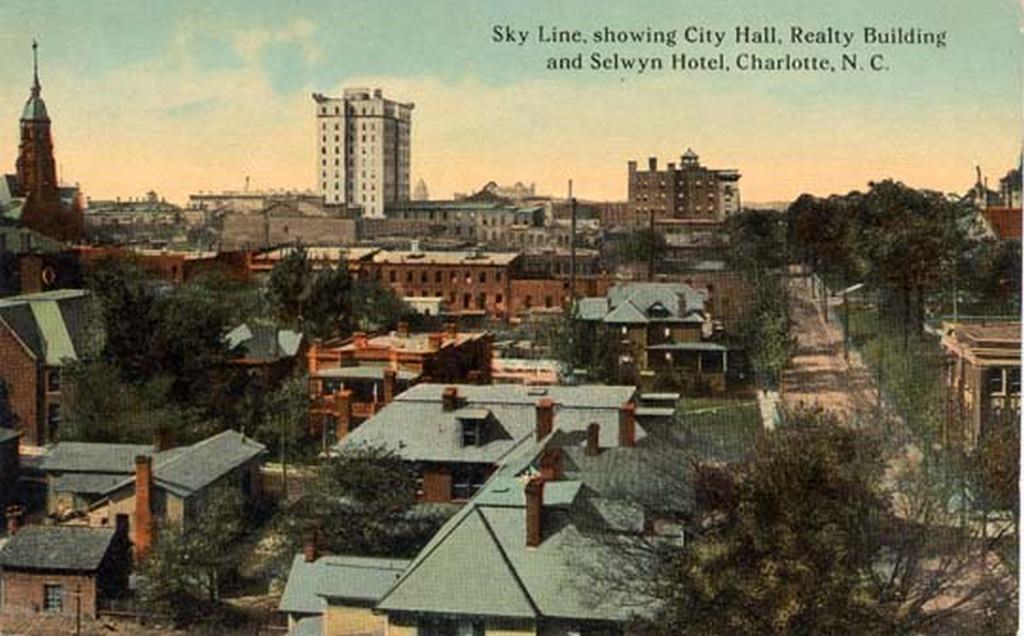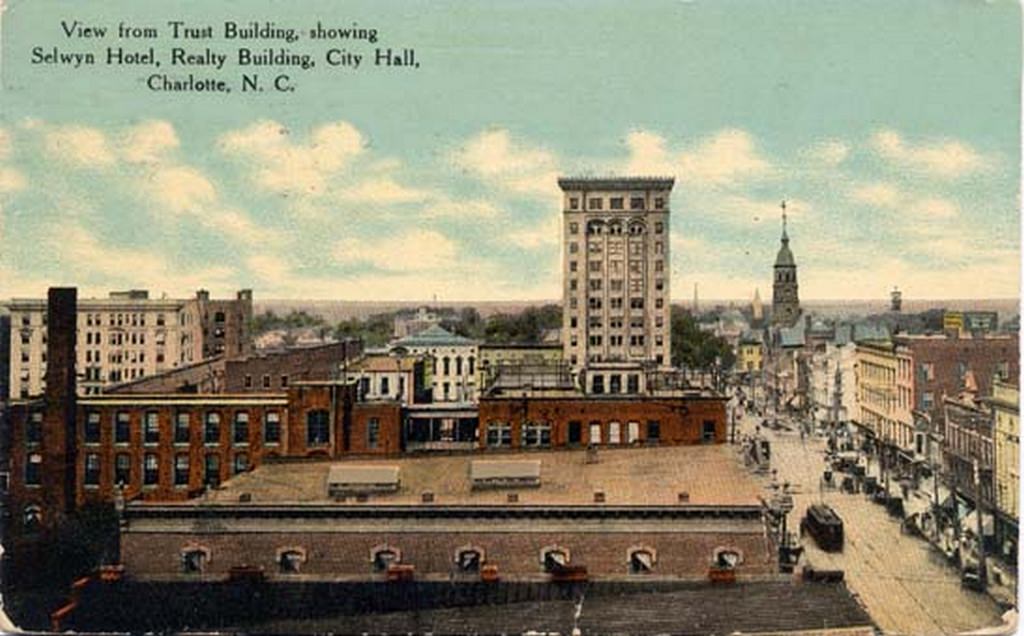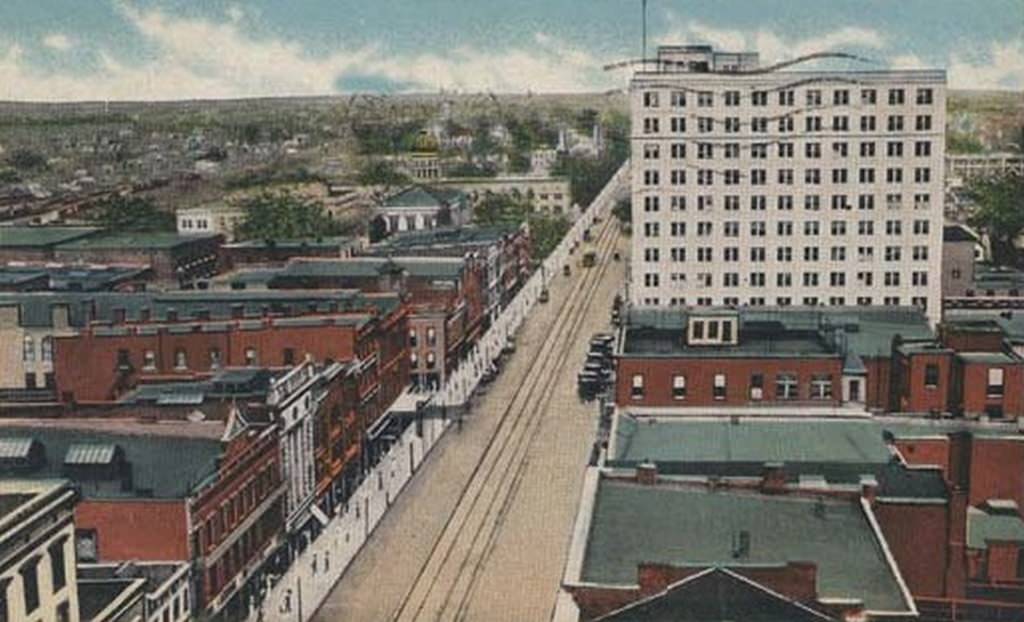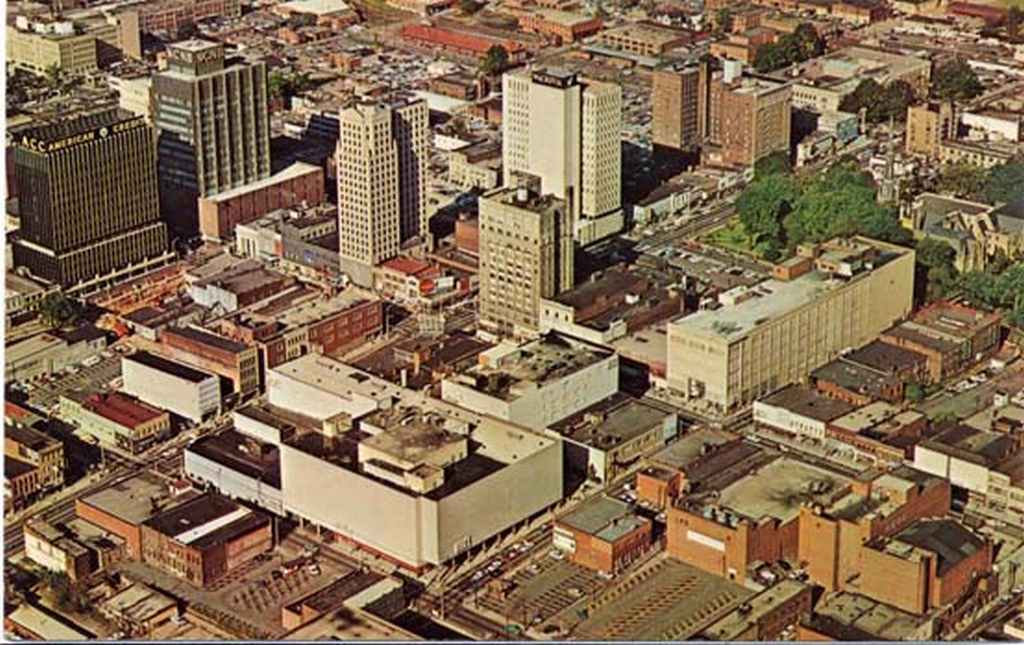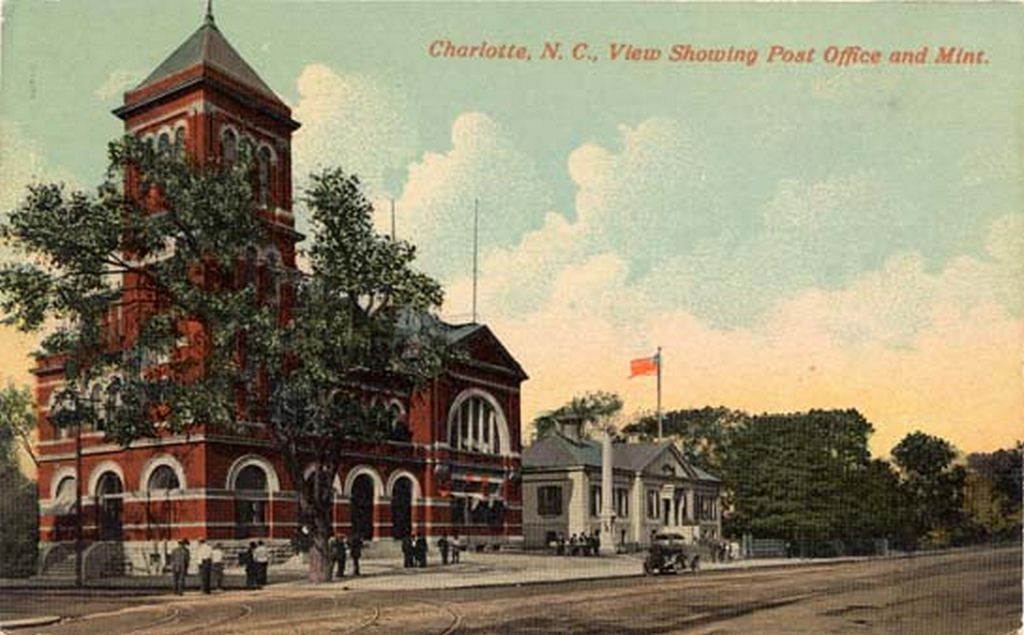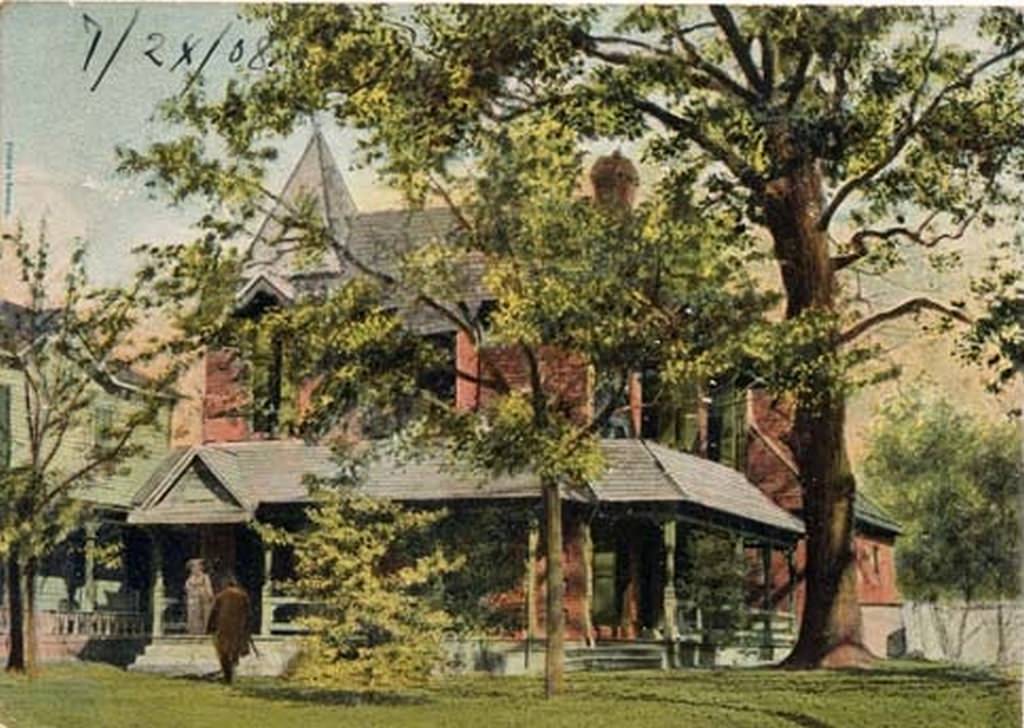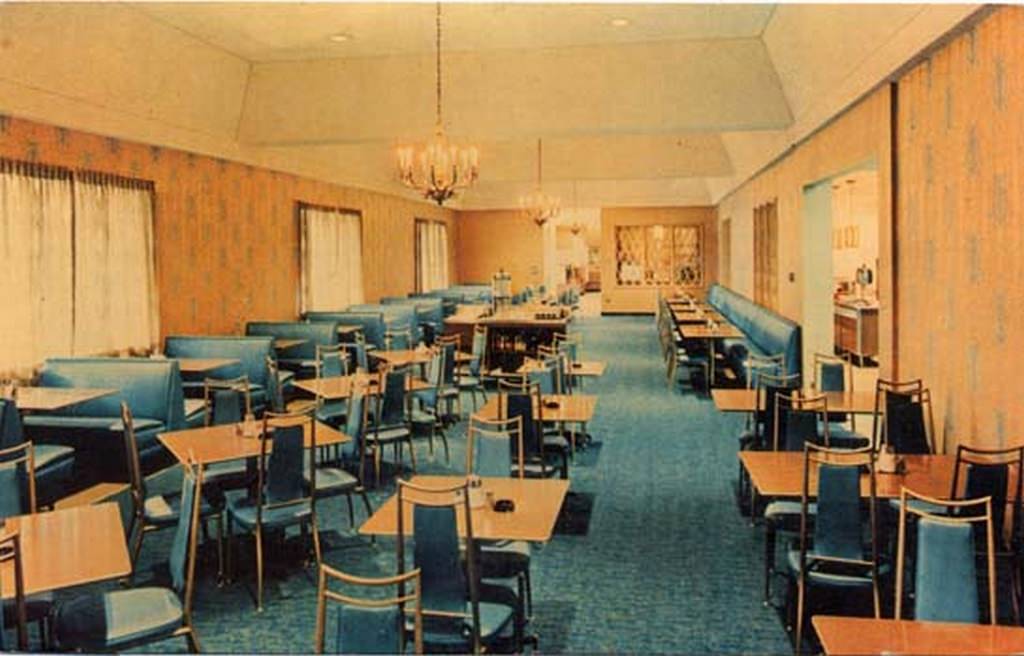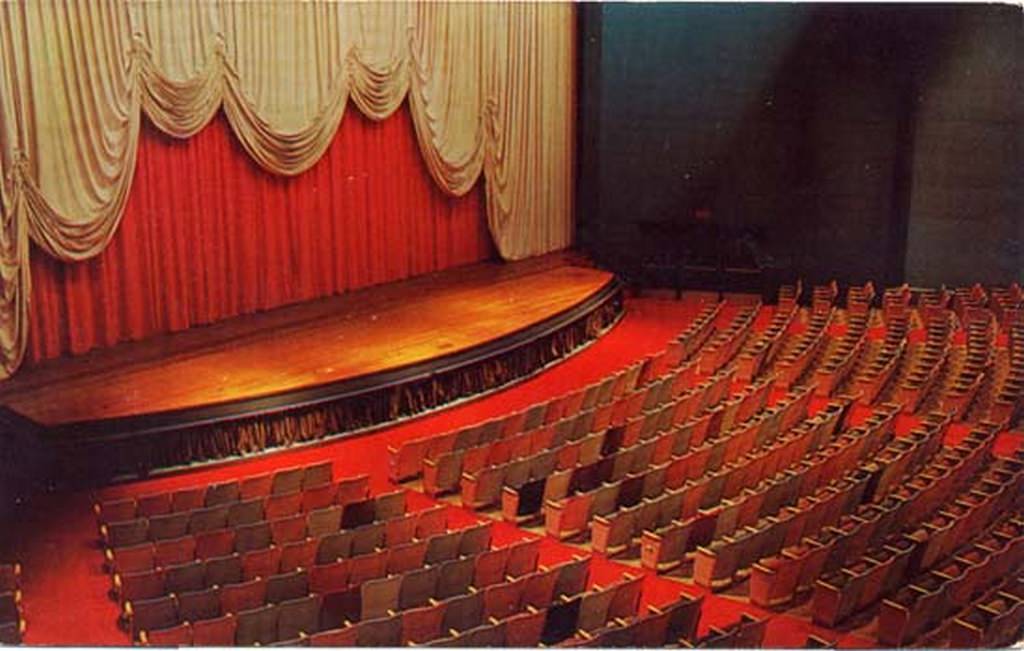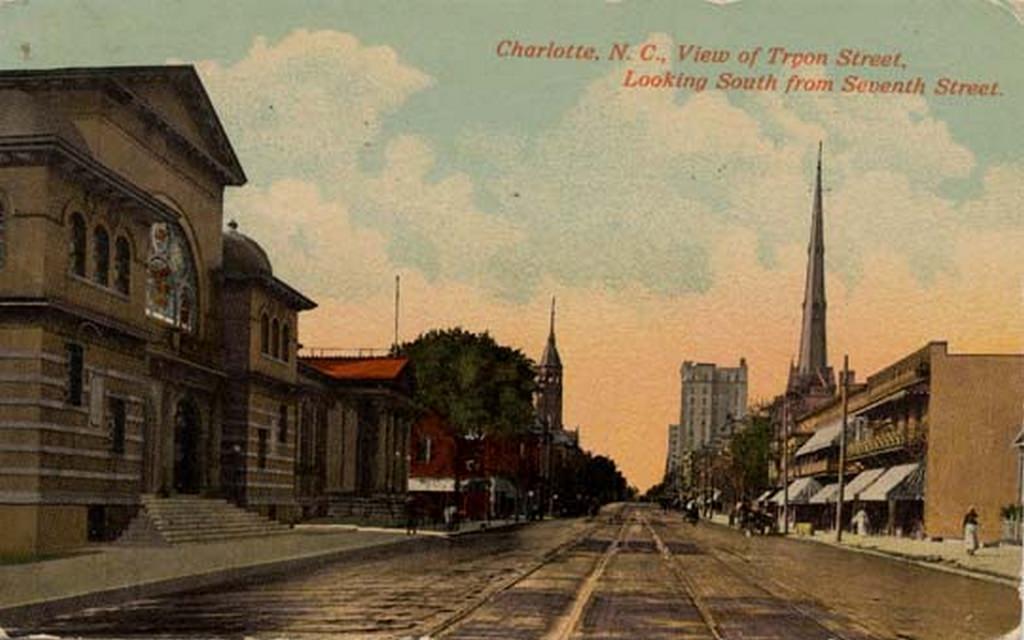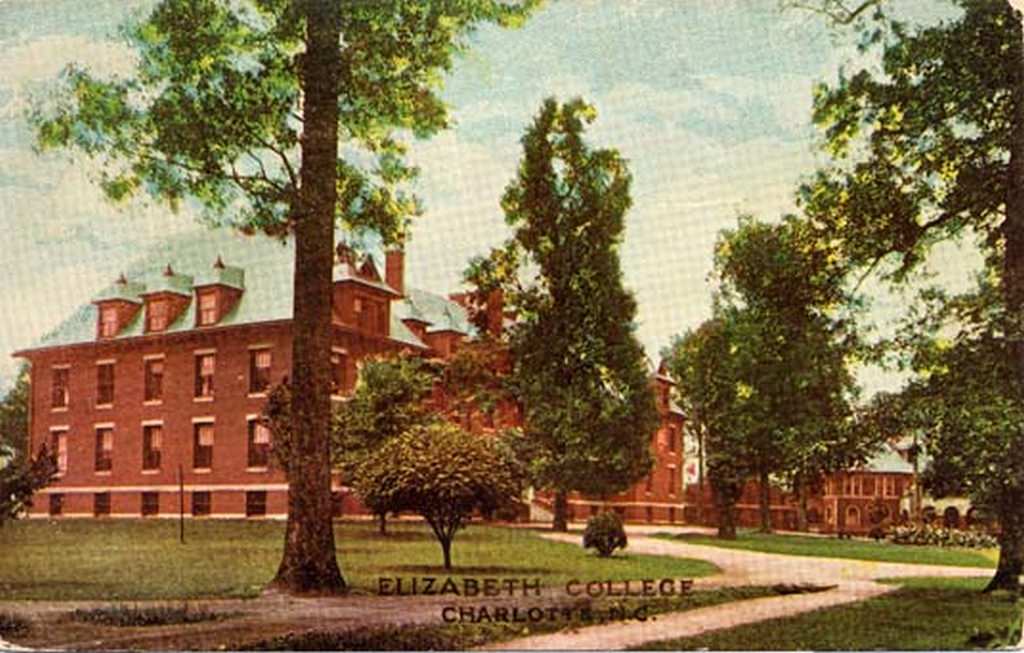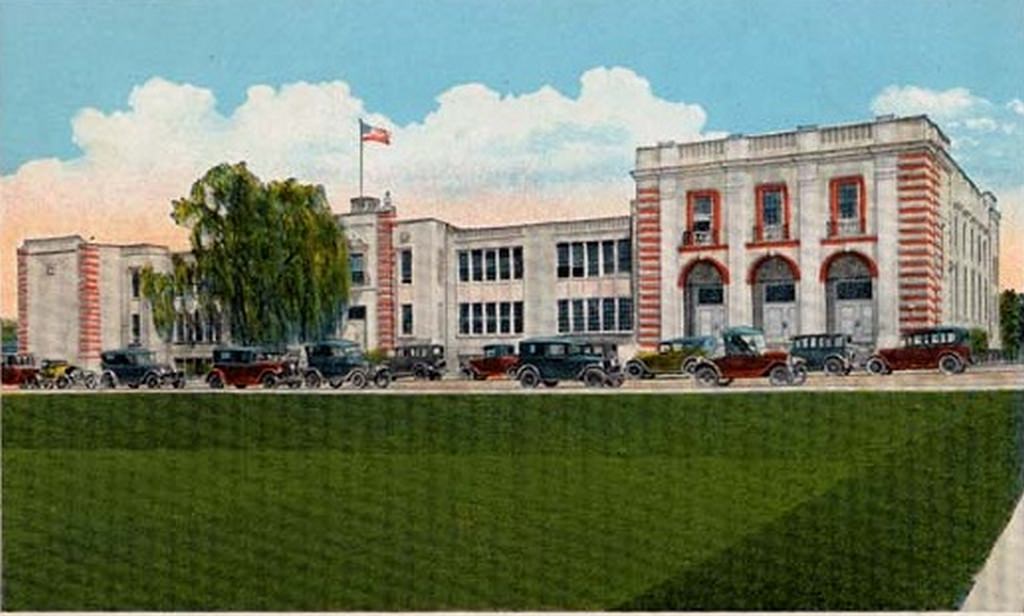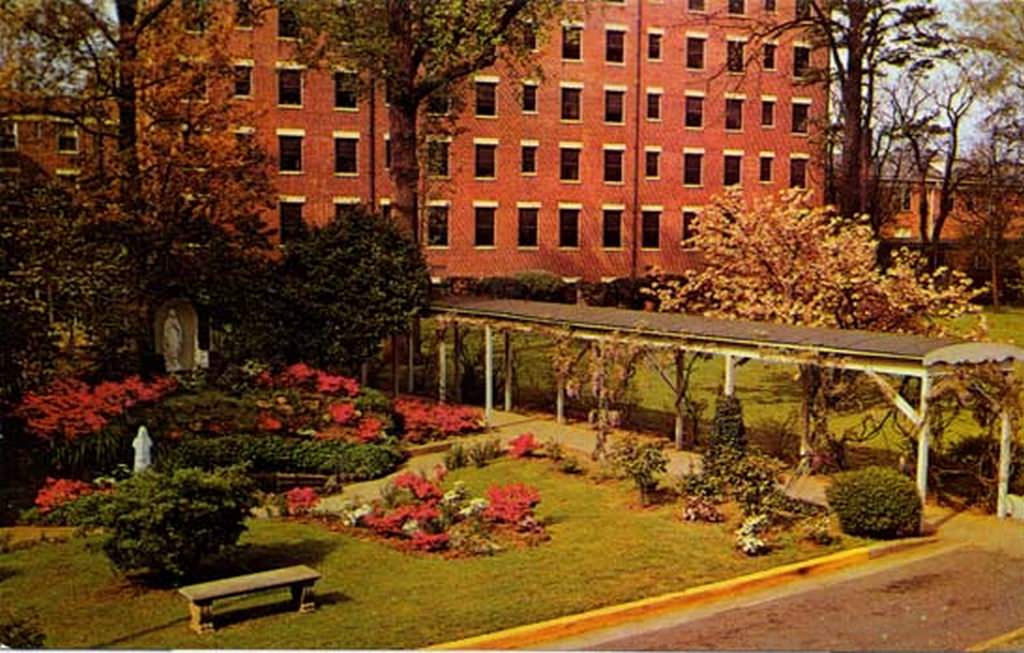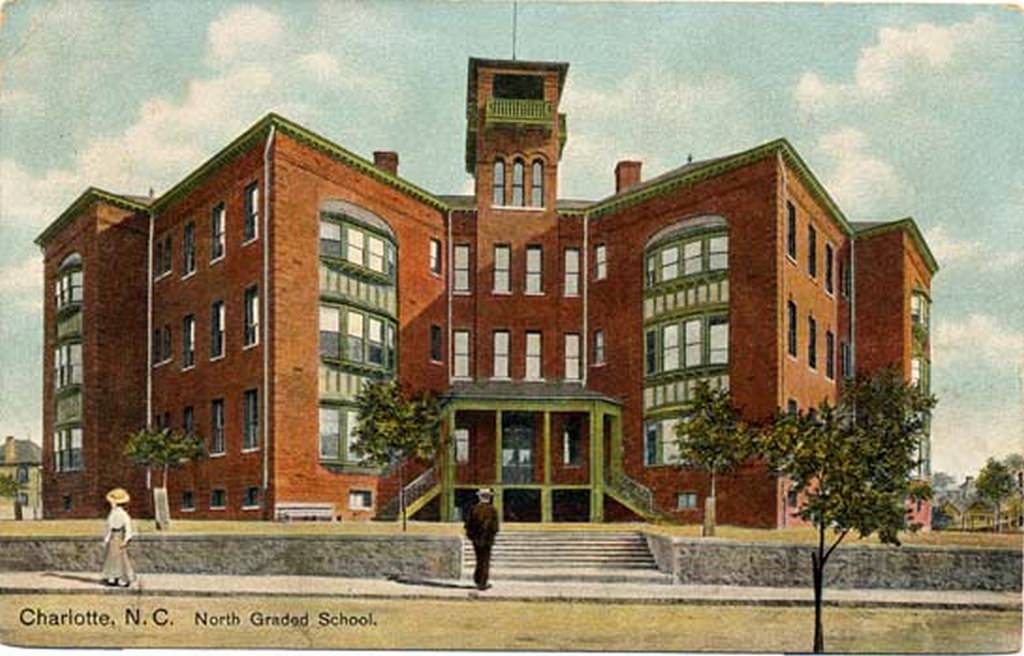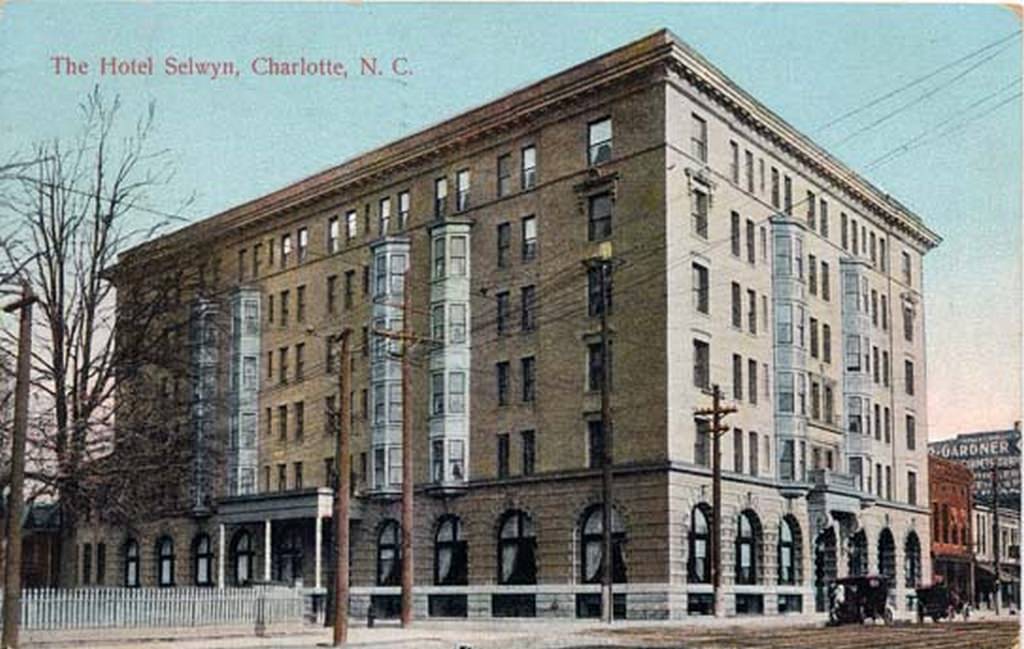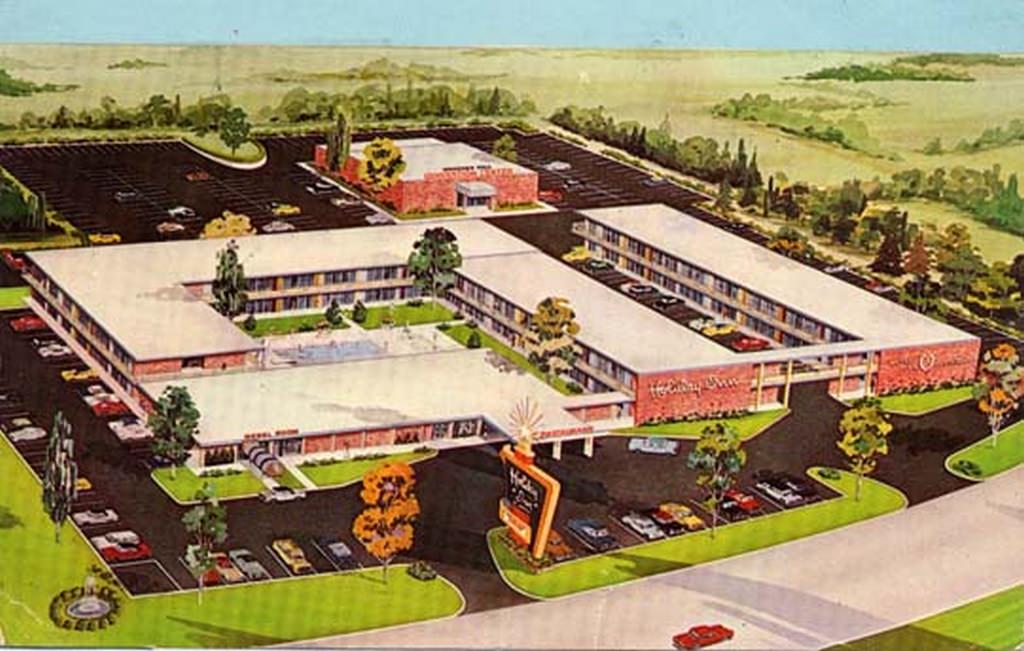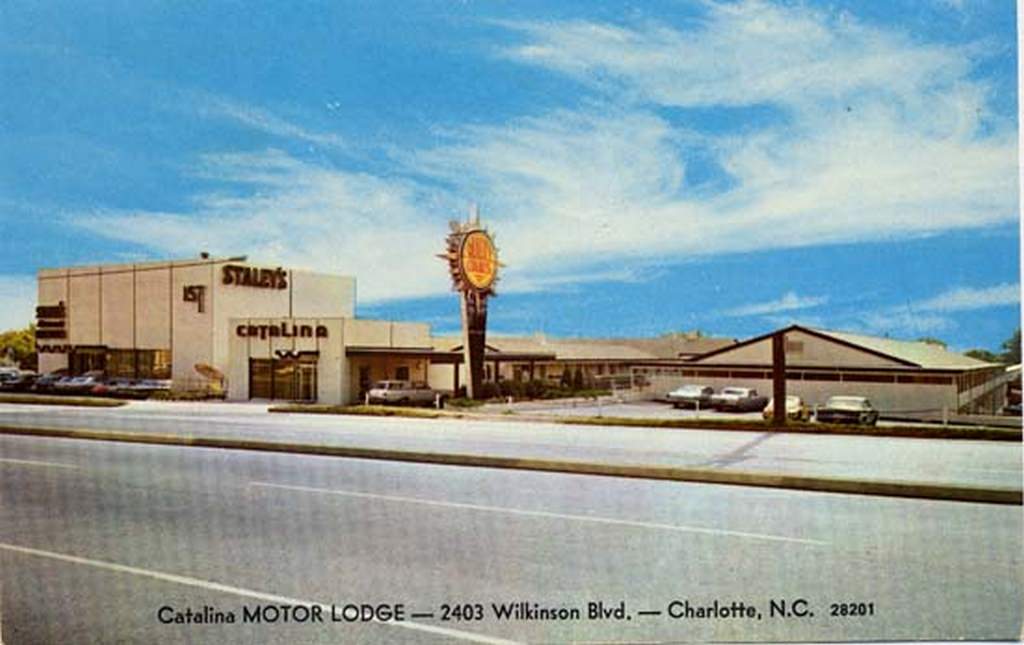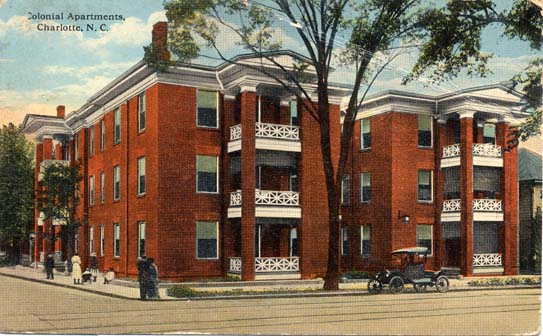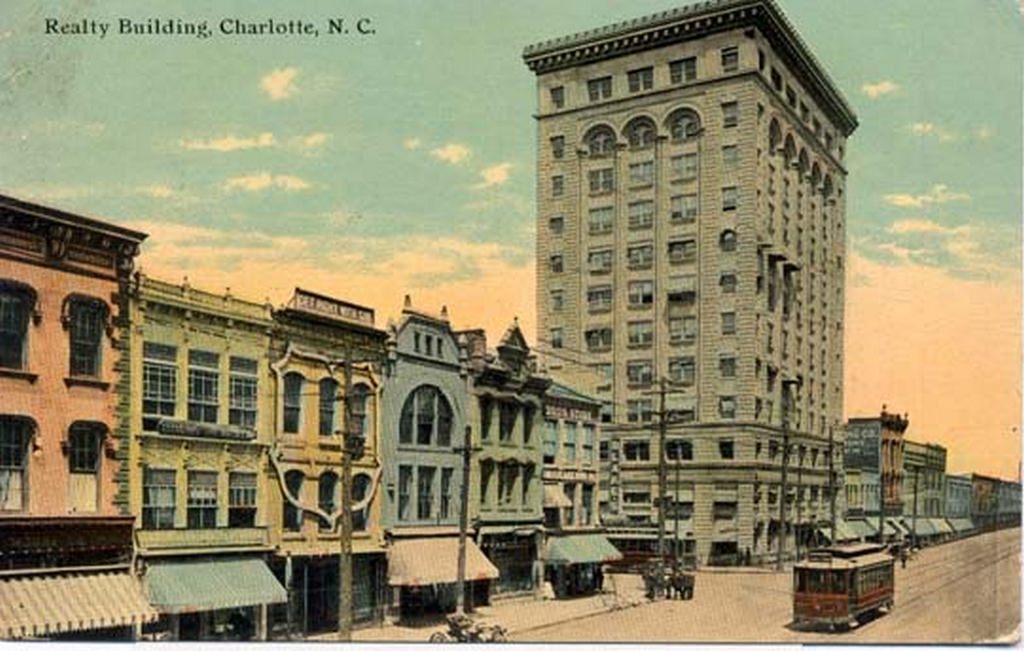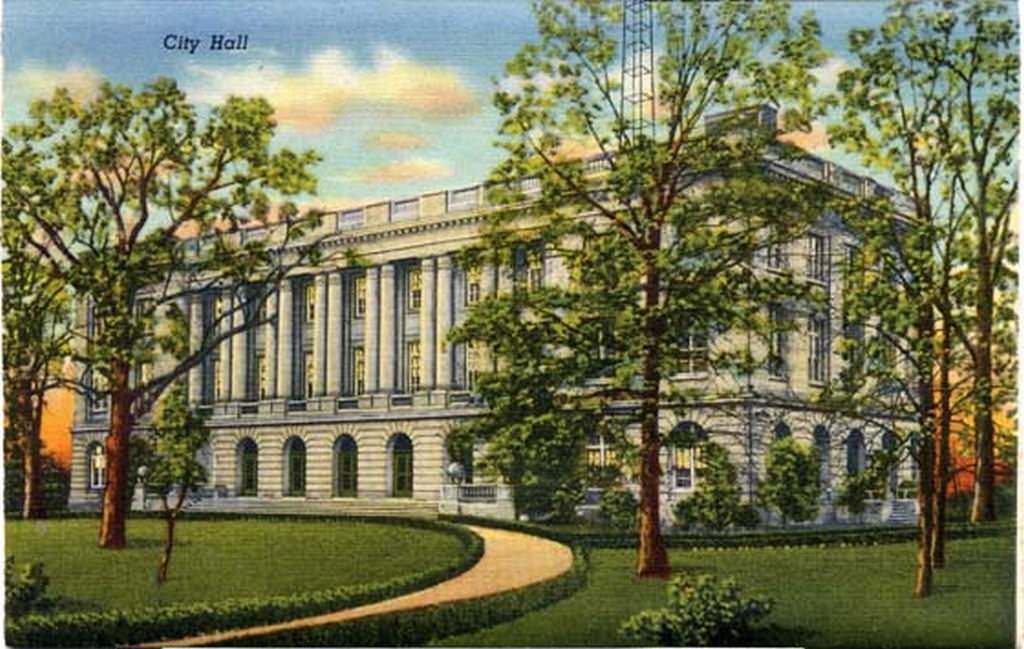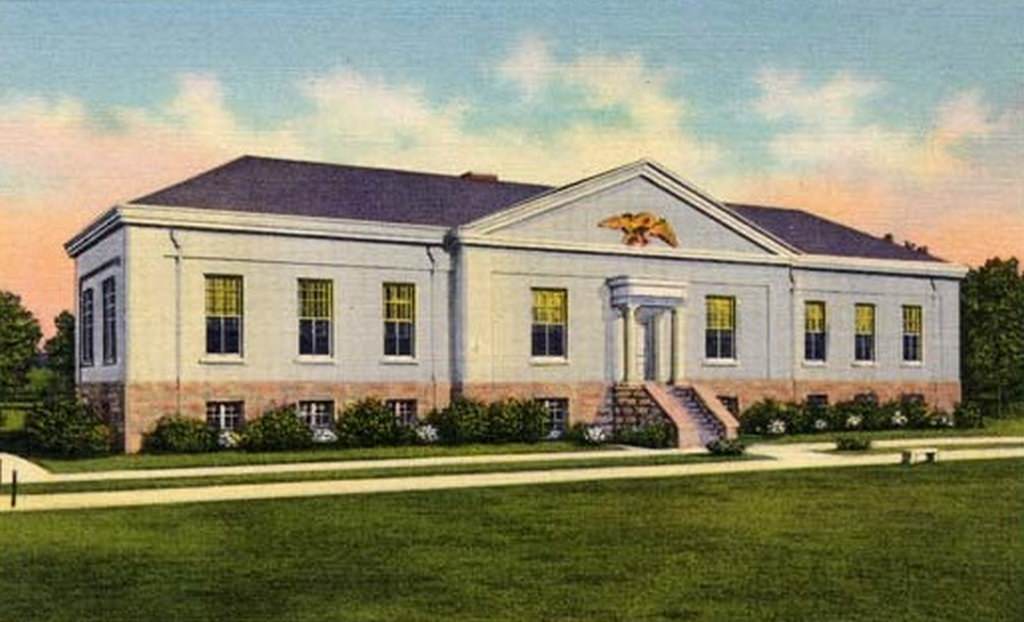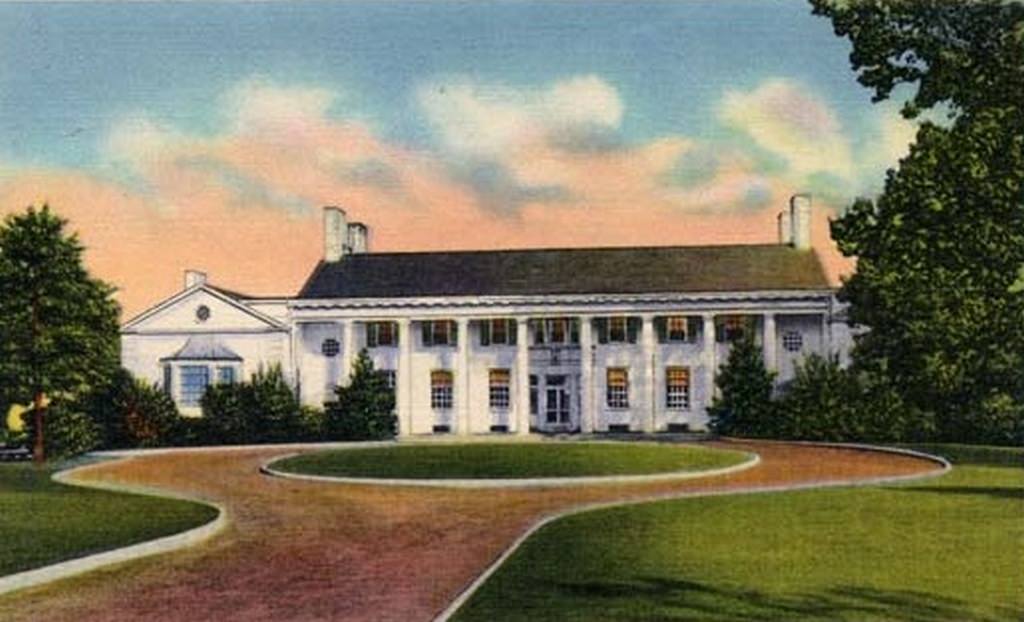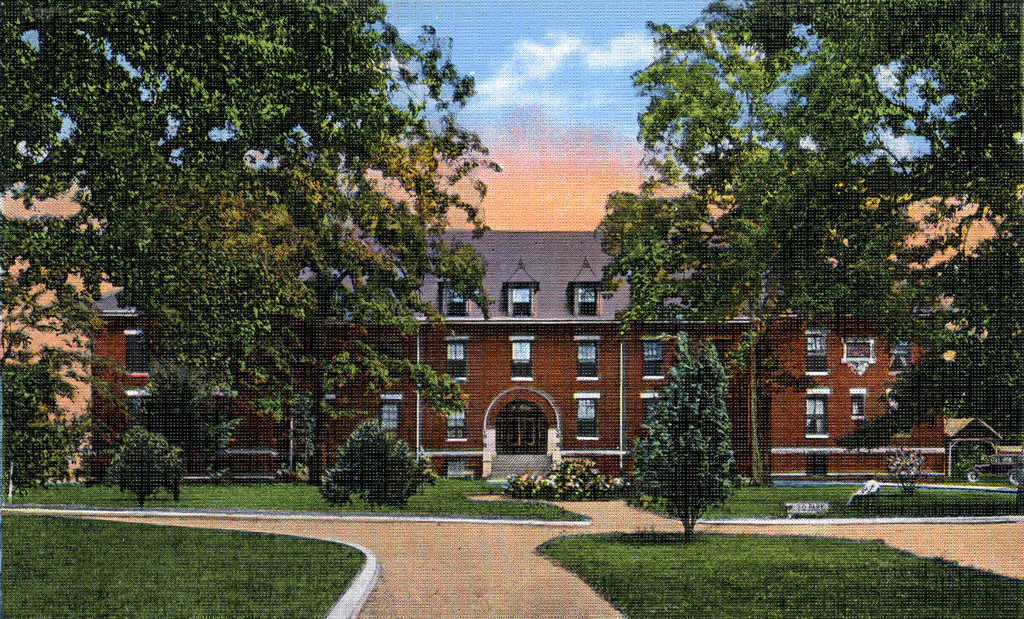Charlotte is the largest city in North Carolina. The town was named in honor of Charlotte of Mecklenburg-Strelitz, who had become Queen of Great Britain just seven years before it was incorporated. Charlotte was settled around 1755 by people of European descent. Local leaders signed the Mecklenburg Resolves or Mecklenburg Declaration of Independence in 1775. Although it was not a valid declaration of independence, it was among the first of its kind, eventually leading to the American Revolution. Throughout the 19th Century, numerous Presbyterian, Baptist, Methodist, Episcopal, Lutheran, and Roman Catholic churches were formed in the city, giving it the nickname “The City of Churches.”
Charlotte experienced its first boom after the Civil War as a cotton processing center and railroad hub. When the U.S. government established Camp Greene north of present-day Wilkinson Boulevard during World War I, the population grew. After the war, many soldiers and suppliers stayed and the city and established their homes and businesses here. Today Charlotte is a beautiful city with expansive green spaces, a thriving culture, and a friendly population.
Below are some stunning historical photochrom postcards of Charlotte from the early 20th Century.
#1 YMCA Building (Second One), 1915
#2 Independence Square, 1900
#3 Fourth Courthouse & Law Building, 1910
#4 Presbyterian Hospital, 1909
#5 Presbyterian Hospital, 1950
#6 Covenant Presbyterian Church, 1966
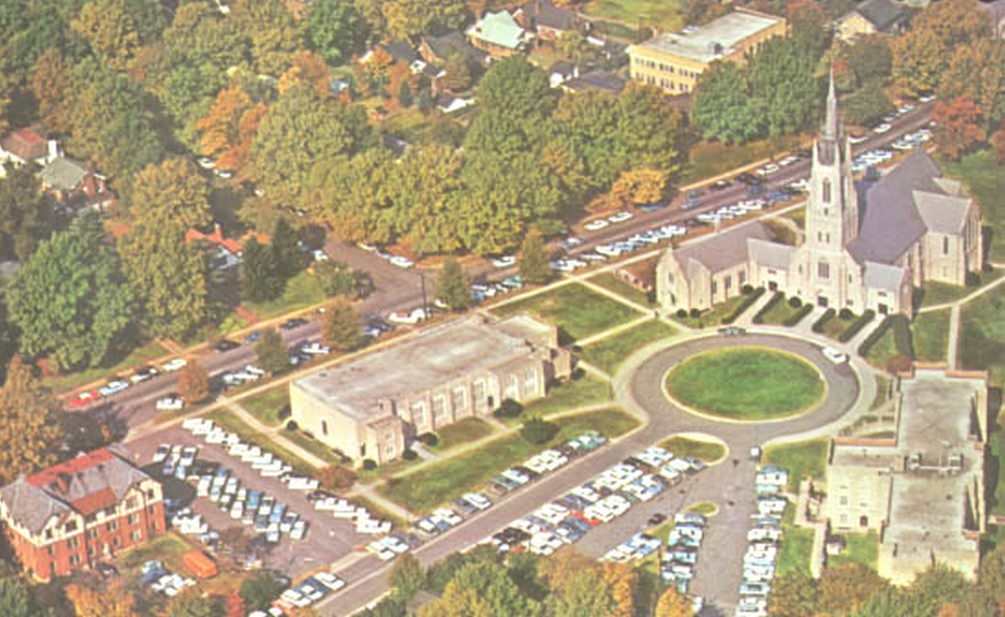
Covenant Presbyterian Church was formed in June 1947 with the merger of two churches, Second Presbyterian (organized 1873) and Westminster Presbyterian Church (organized 1897). Covenant is considered to be one of the finest examples of Gothic Revival architecture in the United States.
#7 Mecklenburg Hotel, 1923
#8 Selwyn Hotel, 1910
#9 Clayton Hotel, 1920
#10 Southern Manufacturer’s Club and Mrs. Stonewall Jackson House, 1900
#11 Anna Morrison Jackson’s Second House, 1905
#12 Couple driving through Myers Park, 1918
#13 Fifth Mecklenburg County Courthouse, 1928
#14 Colonial Apartments, 1925
#15 Fourth Courthouse and Lawyers Building, 1908
#16 Central High School, 1925
#17 William Phifer House, 1880
#18 Blandwood Apartments, 1925
#19 St. Mark’s Lutheran Church, 1910
#20 William Phifer House, 1908
#21 University of North Carolina at Charlotte, 1972
#22 Mecklenburg Hotel, 1940
#23 Aerial view of Charlotte, 1912
#24 Charlotte skyline, 1918
#25 Southern Manufacturer’s Club, 1908
#26 Ovens Auditorium, 1966
#27 Covenant Presbyterian Church, 1966
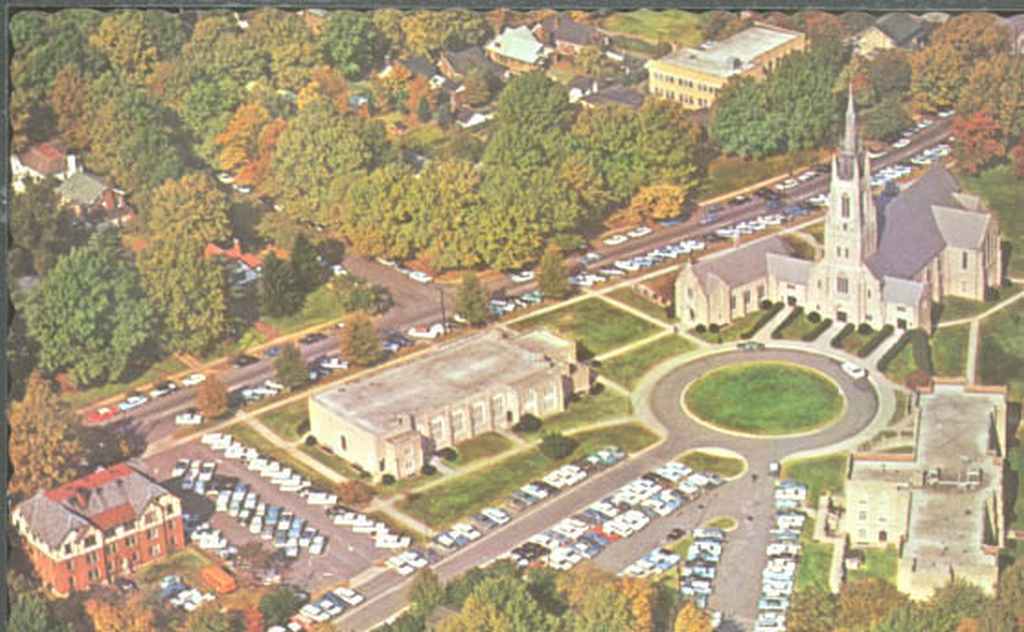
Covenant Presbyterian Church was formed in June 1947 with the merger of two churches, Second Presbyterian (organized 1873) and Westminster Presbyterian Church (organized 1897). Covenant is considered to be one of the finest examples of Gothic Revival architecture in the United States.
#28 Freedom Park, 1961
#29 South Park Mall, 1971
#30 Ovens Auditorium, 1961
#31 Aerial view of uptown Charlotte, 1950
#32 Aerial view of Charlotte, 1983
#33 Charlotte Bus Station on Trade Street, 1950
#34 Red Fez Club, 1933
#35 Charlotte City Hall, 1927
#36 Charlotte City Hall, 1927
#37 Charlotte City Hall, 1927
#38 The Mecklenburg County Courthouse and the Lawyers Building, 1911
#39 Fifth Mecklenburg County Courthouse
#40 Carnegie Library of Charlotte, 1908
#41 Selwyn Hotel, 1920
#42 Charlotte Sanatorium, 1908
#43 Mercy Hospital, 1925
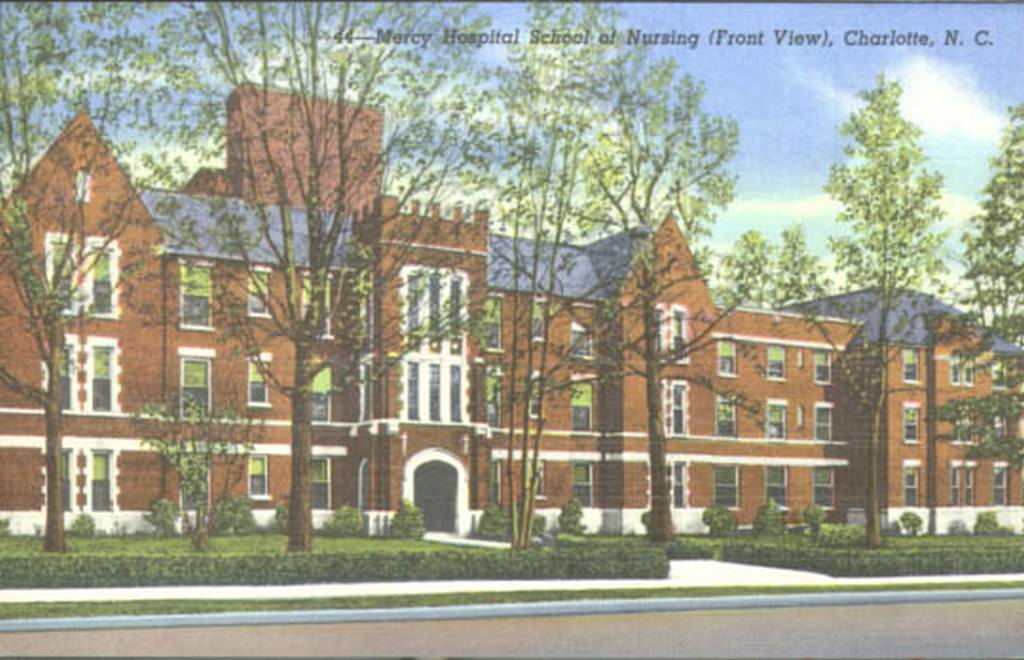
Mercy Hospital was founded by the sisters of Mercy of Belmont, North Carolina in February 1906. Originally it was a twenty-five-bed facility in a wooden building on East First Street behind St. Peter's Roman Catholic Church. The second facility, pictured here, opened in 1916 on East Fifth Street. Additions increased and by 1960, the hospital had a capacity of 300 beds
#44 Presbyterian Hospital, 1985
#45 Mercy Hospital, 1908
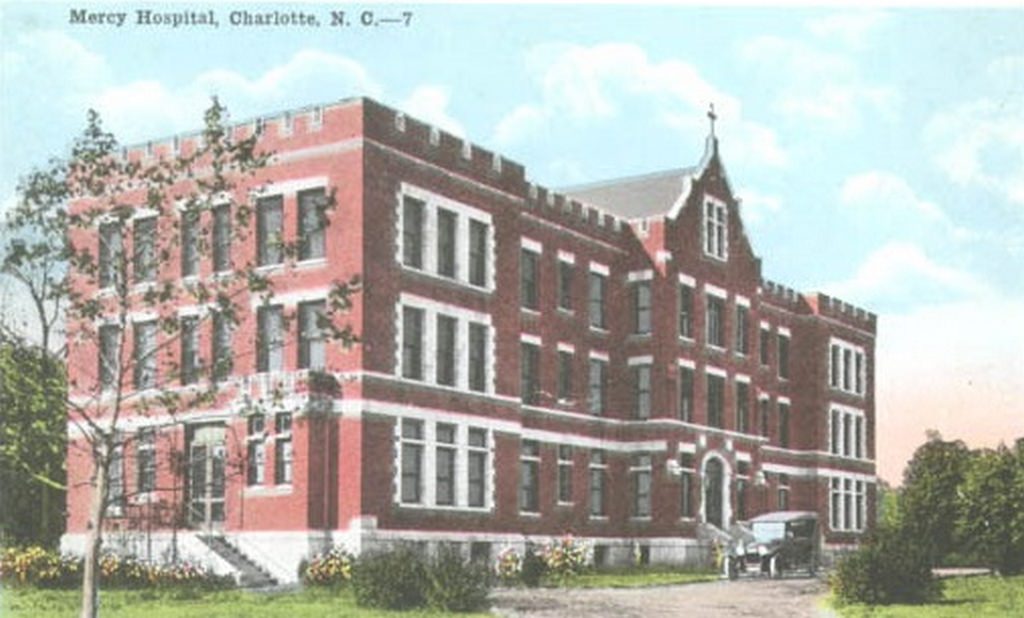
Mercy Hospital was founded by the sisters of Mercy of Belmont, North Carolina in February 1906. Originally it was a twenty-five-bed facility in a wooden building on East First Street behind St. Peter's Roman Catholic Church. The second facility, pictured here, opened in 1916 on East Fifth Street. Additions increased and by 1960, the hospital had a capacity of 300 beds.
#46 Charlotte Memorial Hospital, 1940
#47 Charlotte Memorial Hospital, 1960
#48 Mercy Hospital School of Nursing, 1906
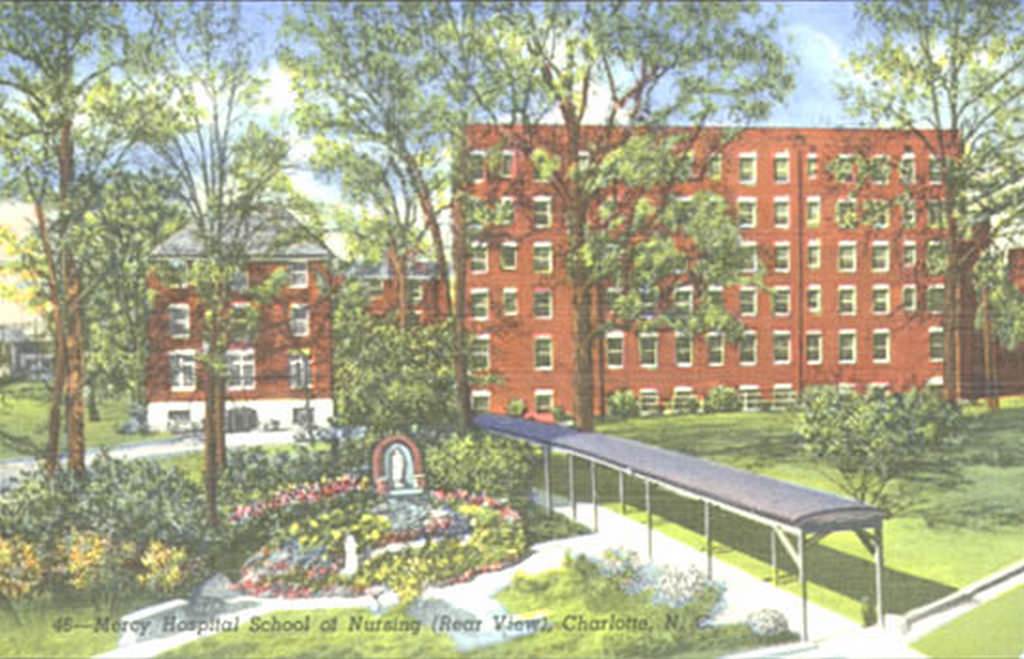
Mercy Hospital was founded by the sisters of Mercy of Belmont, North Carolina in February 1906. Originally it was a twenty-five-bed facility in a wooden building on East First Street behind St. Peter's Roman Catholic Church. The second facility, pictured here, opened in 1916 on East Fifth Street. Additions increased and by 1960, the hospital had a capacity of 300 beds.
#49 Camp Greene Stables on Remount Road, 1918
#50 South Tryon Street, 1915
#51 Uptown Charlotte, 1900
#52 Aerial view Tryon Street, 1905
#53 YMCA Building (Second One) and Annex, 1920
#54 Charlotte Business District, 1910
#55 Camp Greene mess line, 1918
#56 United States Post Office, 1900
#57 First Baptist Church, 1948
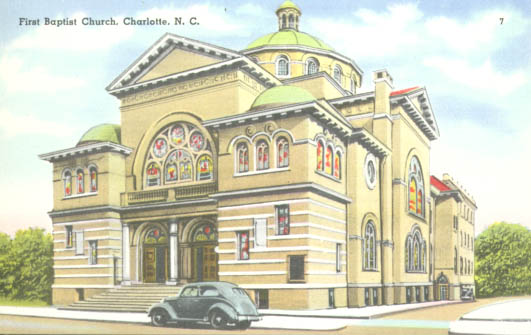
Once the home of First Baptist Church, this site is located in the 300 block of North Tryon Street. The church can trace its history to 1832. This facility was built in 1908 and served the congregation until the 1970s when they moved to a new church. The older facility was transformed into a cultural center for arts education and is known as Spirit Square.
#58 Dilworth United Methodist Church, 1926
#59 Central High School, 1920
#60 Independence Square, 1920
#61 The 100 block of North Tryon Street at night, 1925
#62 A view of Tryon Street with its new skyscraper, 1914
#63 University of North Carolina at Charlotte, 1965
#64 Elizabeth College, 1908
#65 Charlotte Country Club, 1945
#66 Lake Norman, 1970
#67 House in Myers Park, 1920
#68 Looking south down Tryon Street, 1955
#69 Hoskins Mill Village, 1913
#70 Elizabeth School and Knox Presbyterian Church, 1920
#71 Aerial view of Charlotte’s business section, 1910
#72 Aerial view of Charlotte, 1917
#73 Charlotte’s business section, 1929
#74 Looking westward from the Realty Building, Charlotte, 1910
#75 Masonic Temple Proposed, 1920
#76 Charlotte Auditorium, 1890
#77 Southern Manufacturers’ Club and Mrs. Stonewall Jackson’s Residence, 1900
#78 Charlotte Coliseum, 1960
#79 Charlotte Business District, 1910
#80 Charlotte Pipe & Foundry Company, 1900
#81 O’Donoghue Hall (Catholic School), 1907
#82 Charlotte City Hall, 1927
#83 Charlotte City Hall (1927).1926
#84 Tryon Street in Charlotte at the turn of the century, 1903
#85 Charlotte Country Club, 1938
#86 Charlotte Country Club, 1920
#87 Charlotte Country Club, 1910
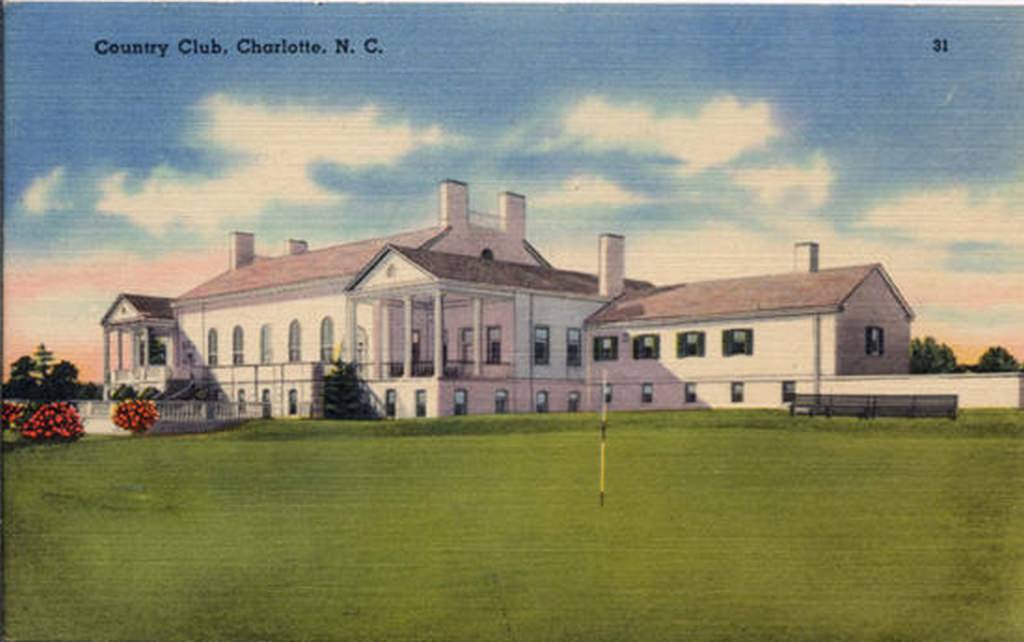
Charlotte Country Club began as The Mecklenburg Club in 1910. This first Club was located west of the city adjoining a pond on or near Stewart Creek. The activities of this early Club were confined to card games, picnics, boating, and fishing. The club moved to its present location in the Plaza Midwood neighborhood in 1931.
#88 Lake at Charlotte Country Club, 1917
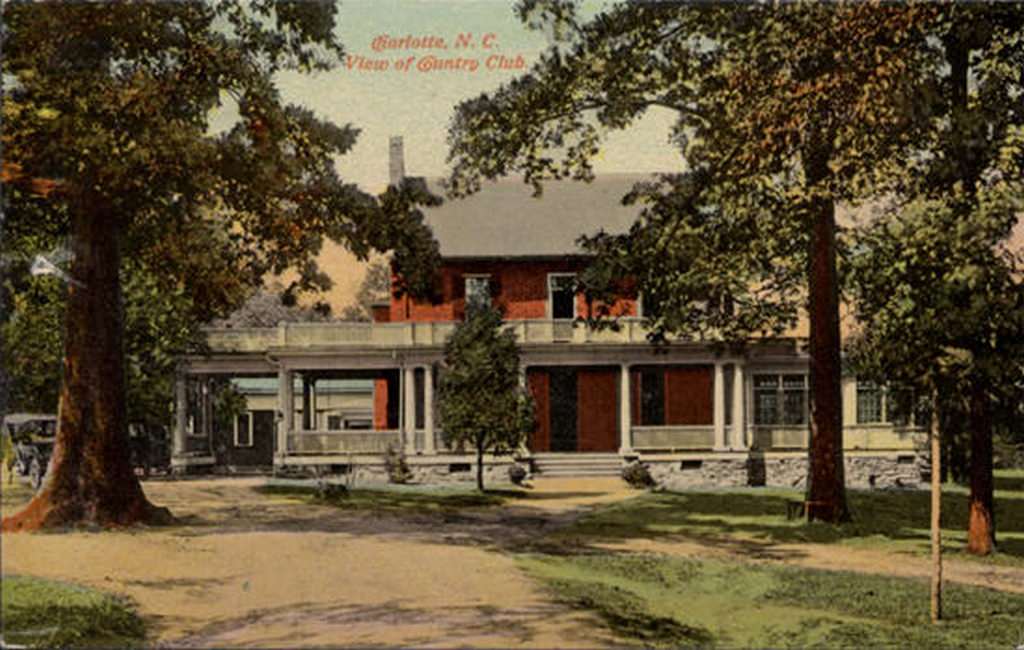
Charlotte Country Club began as The Mecklenburg Club in 1910. This first Club was located west of the city adjoining a pond on or near Stewart Creek. The activities of this early Club were confined to card games, picnics, boating, and fishing. The name was changed to Charlotte Country Club in 1917. The club moved to its present location in the Plaza Midwood neighborhood in 1931.
#89 Charlotte Country Club, 1917
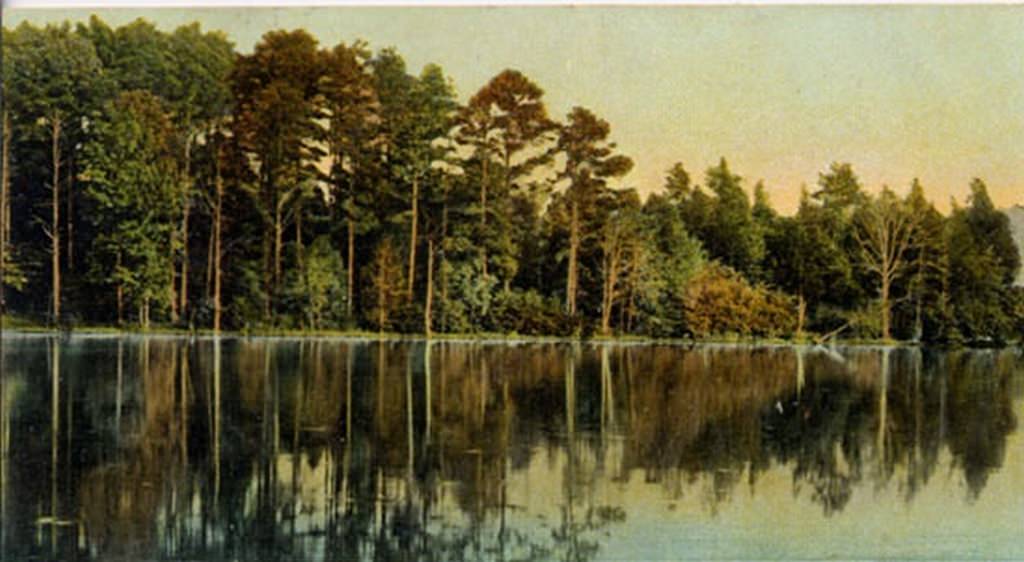
Charlotte Country Club began as The Mecklenburg Club in 1910. This first Club was located west of the city adjoining a pond on or near Stewart Creek. The activities of this early Club were confined to card games, picnics, boating, and fishing. The name was changed to Charlotte Country Club in 1917. The club moved to its present location in the Plaza Midwood neighborhood in 1931.
#90 Charlotte Country Club, 1917
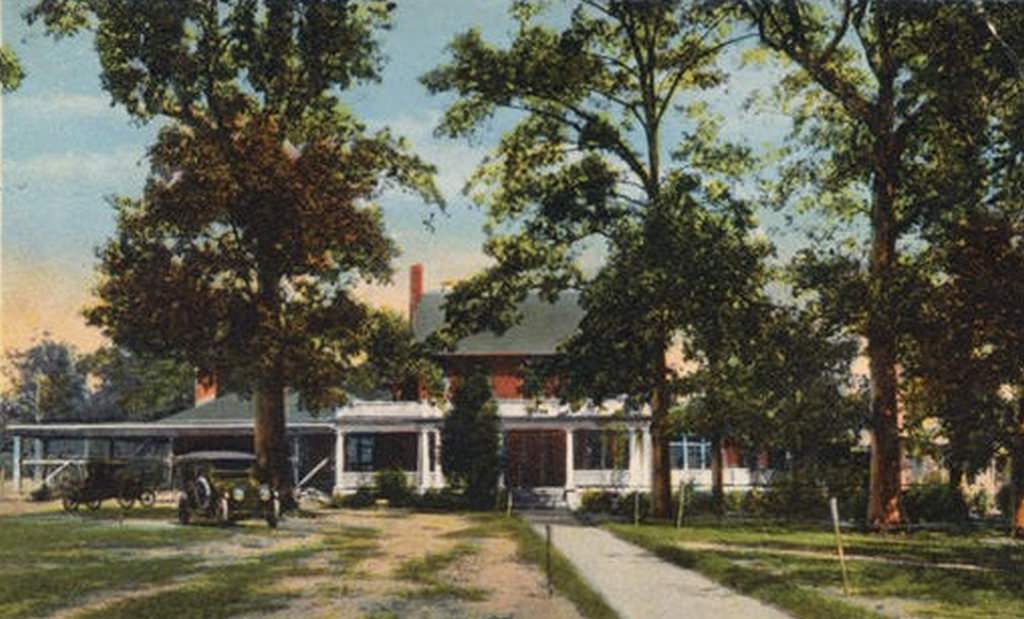
Charlotte Country Club began as The Mecklenburg Club in 1910. This first Club was located west of the city adjoining a pond on or near Stewart Creek. The activities of this early Club were confined to card games, picnics, boating, and fishing. The name was changed to Charlotte Country Club in 1917. The club moved to its present location in the Plaza Midwood neighborhood in 1931.
#91 South Tryon Street looking north from the Mecklenburg Courthouse, 1910
#92 Dilworth Road Looking north. The Addison Apartments are in view. 1914
#93 East Trade Street with a view of a trolley and a horse and buggy, 1900
#94 Two skyscrapers along Tryon Street in Charlotte, 1910
#95 Independence Square looking south on Tryon Street, 1920
#96 Fifth Mecklenburg County Courthouse, 1928
#97 United States Federal Courthouse and Post Office, 1928
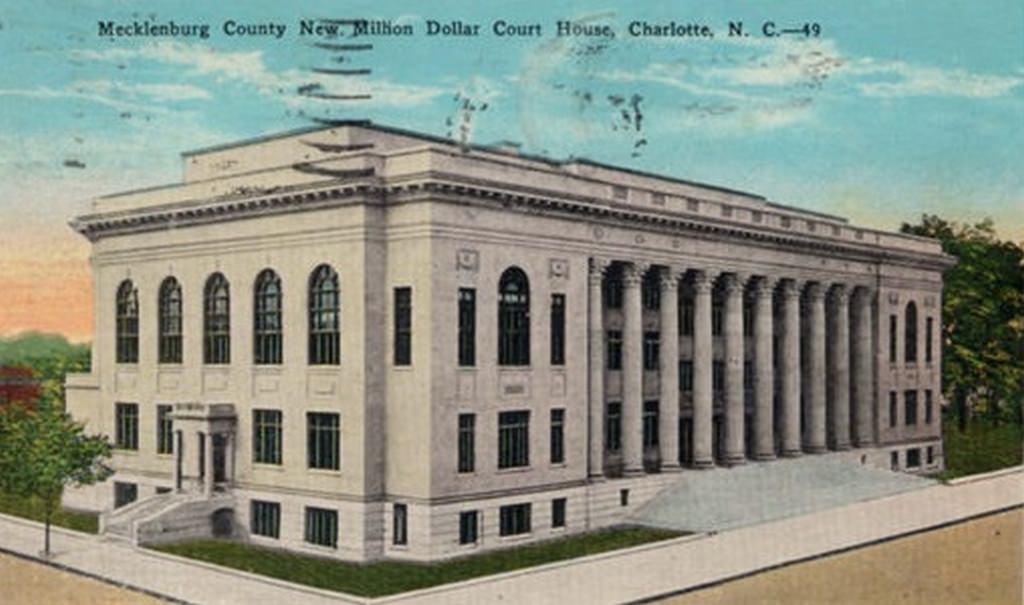
The Charles R. Jonas Federal Building is an historic two-story, limestone structure in the neo-classical design. Completed in 1915, it is located at 401 West Trade Street, in Charlotte. At various times it has served as a courthouse of the United States District Court for the Western District of North Carolina, and a United States post office. In 1975, the building was renamed in honor of long-serving North Carolina Congressman Charles R. Jonas, and was transferred to the city in exchange for land in the fall of 2005. The city lease the building to the federal government for continued use.
#98 United States Post Office and Courthouse, 1931
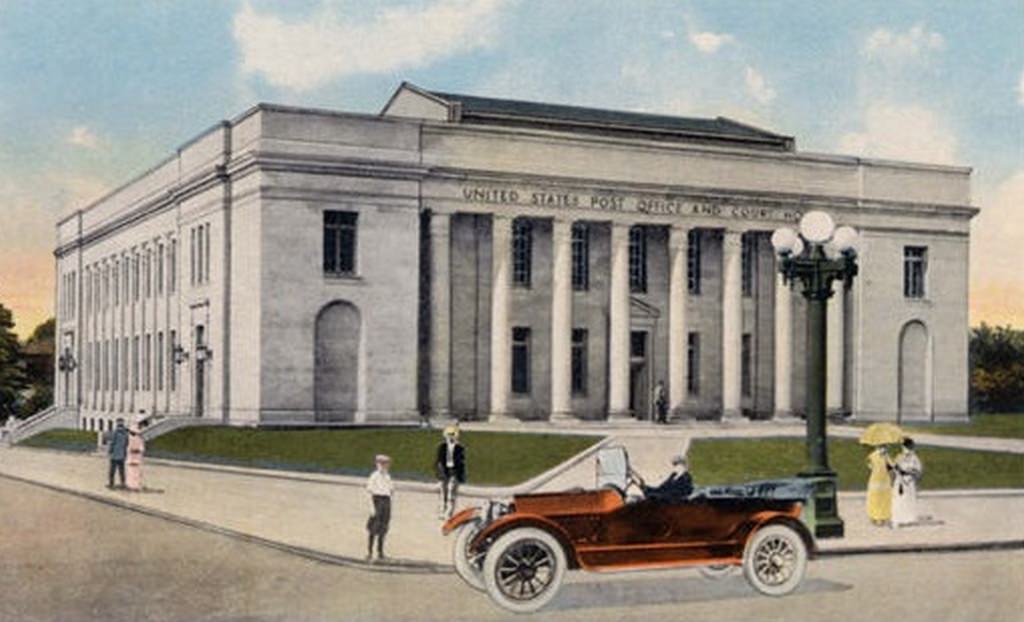
This the way the courthouse and post office appeared when it was first constructed in 1915. Today Charles R. Jonas Federal Building is an historic two-story, limestone structure in the neo-classical design. It is located at 401 West Trade Street, in Charlotte with an addition that was built in 1934. At various times it has served as a courthouse of the United States District Court for the Western District of North Carolina, and a United States post office. In 1975, the building was renamed in honor of long-serving North Carolina Congressman Charles R. Jonas, and was transferred to the city in exchange for land in the fall of 2005. The city leases the building to the federal government for continued use.
#99 Fourth Mecklenburg County Courthouse, 1910
#100 Fourth Mecklenburg Court House and Lawyers Building, 1920
#101 Fourth Mecklenburg County Courthouse, 1910
#102 Mercy Hospital.
#103 Mercy Hospital in the Elizabeth Neighborhood, 1940
#104 Mercy Hospital, 1955
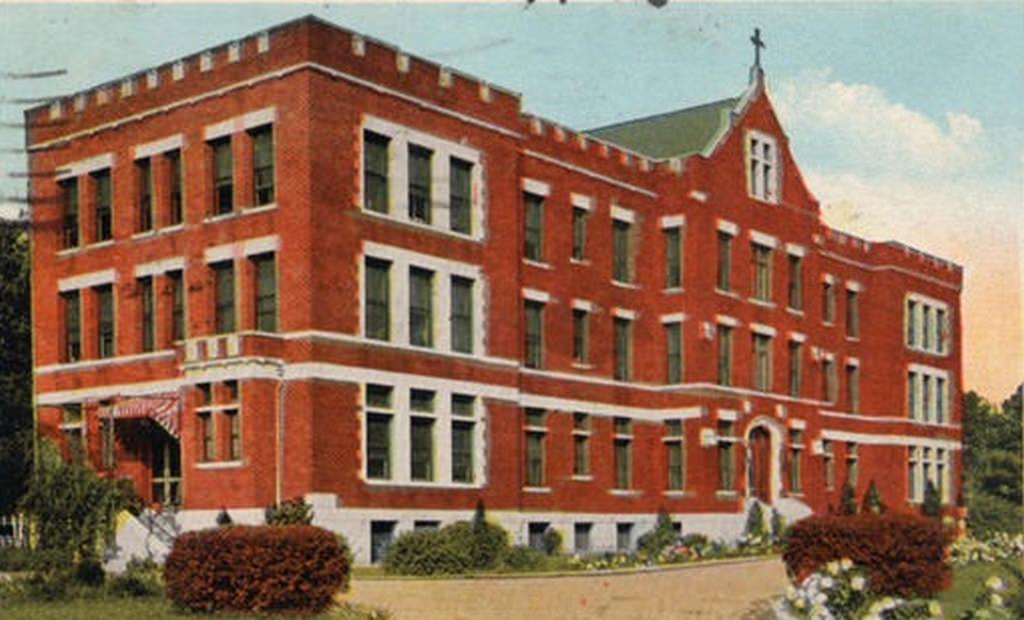
Mercy Hospital was founded by the sisters of Mercy of Belmont, North Carolina in February 1906. Originally it was a twenty-five-bed facility in a wooden building on East First Street behind St. Peter's Roman Catholic Church. The second facility, pictured here, opened in 1916 on East Fifth Street. Additions increased and by 1960, the hospital had a capacity of 300 beds
#105 Charlotte Sanatorium, 1911
#106 Charlotte Memorial Hospital, 1940
#107 Presbyterian Hospital, 1942
#108 Charlotte Memorial Hospital, 1950
#109 Good Samaritan Hospital, 1950
#110 C. C. Coddington Villa, 1928
#111 Anna Morrison Jackson’s House Number Two.1908
#112 Hezekiah Alexander House, 1930
#113 Myers Park Residence, 1920
#114 Anna Morrison Jackson’s Second House, 1909
#115 Stonewall Hotel, 1900
#116 Selwyn Hotel, 1920
#117 Selwyn Hotel, 1918
#118 The Selwyn Hotel was located on West Trade Street, 1907
#119 Stonewall Hotel and Annex, 1910
#120 Mecklenburg Hotel, 1920
#121 Selwyn Hotel, 1910
#122 Mecklenburg Hotel, 1920
#123 Selwyn Hotel. 1925
#124 Tryon Street looking south. 1965
#125 Mint Museum of Art, 1939
#126 United States Mint, 1910
#127 United States Mint, 1900
#128 Mecklenburg Declaration Day, 1908
#129 Lakewood Park Trolley Tracks, 1910
#130 Lakewood Park was located on the west side of Charlotte, 1910
#131 Lakewood Park & Trolley Tracks, 1910
#132 Lakewood Park Trolley Tracks, 1910
#133 Lakewood Park View from the Pavilion, 1911
#134 Boating on Lakewood Park, 1910
#135 Lakewood Park Pavilion, 1910
#136 Lakewood Park, 1910
#137 Lakewood Park Gardens, 1910
#138 Trolley lines to Lakewood Park, 1910
#139 United States Post Office & Courthouse, 1937
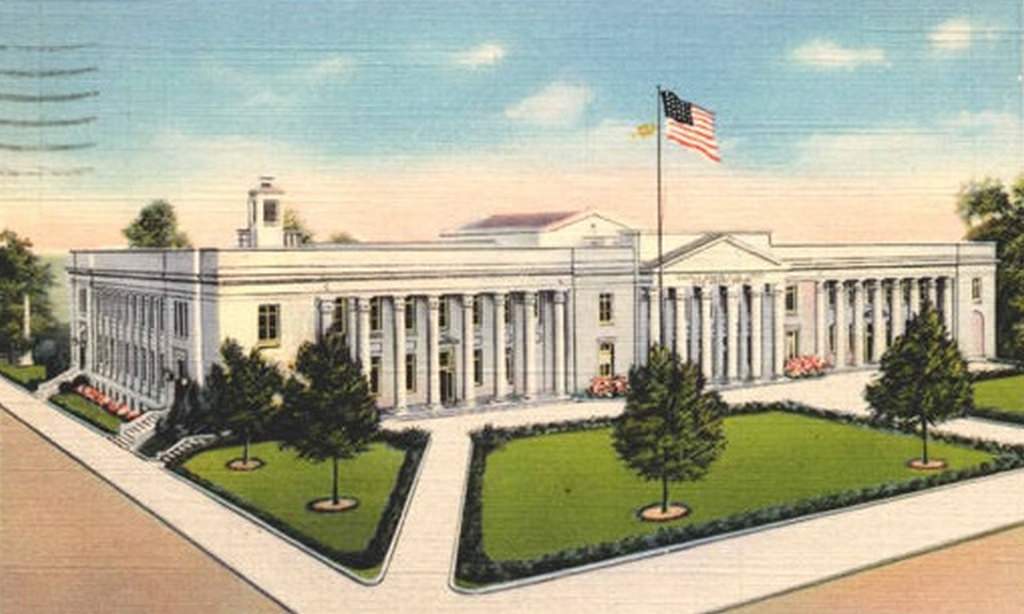
The Charles R. Jonas Federal Building is an historic two-story, limestone structure in the neo-classical design. Completed in 1915, it is located at 401 West Trade Street, in Charlotte. At various times it has served as a courthouse of the United States District Court for the Western District of North Carolina, and a United States post office. In 1975, the building was renamed in honor of long-serving North Carolina Congressman Charles R. Jonas, and was transferred to the city in exchange for land in the fall of 2005.
#140 United States Post Office, 1910
#141 United States Post Office, Assay Office, and Shipp Monument, 1908
#142 The Methodist Home is located on Shamrock Drive in Charlotte, 1957
#143 United States Post Office & Assay Office, 1906
#144 Southern Railroad Depot, 1909
#145 A view of the Catawba River in Mecklenburg County, 1915
#146 Mountain Island Power Plant on Catawba River, 1950
#147 North Graded School, 1916
#148 South Graded School, 1900
#149 North Graded School, 1909
#150 Central High School, 1925
#151 South Graded School, 1900
#152 Central High School, 1940
#153 Catalina Motor Lodge, 1965
#154 Tryon Street, 1915
#155 South Tryon Street in Charlotte with a view of the Trust Building on the left, 1900
#156 South Tryon Street showing YMCA and the Trust Building, 1908
#157 Selwyn Hotel, 1956
#158 South Tryon Street with trolleys and horse and buggies, 1900
#159 A view of Trade Street looking East from Poplar Street, 1907
#160 Intersection of Trade and Tryon Streets (Square), 1900
#161 The intersection of Trade & Tryon Streets (the Square), 1955
#162 Suttle Swimming Pool, 1951
#163 University of North Carolina at Charlotte, 1968
#164 YMCA Building (Second One), 1910
#165 North Carolina Medical College, 1909
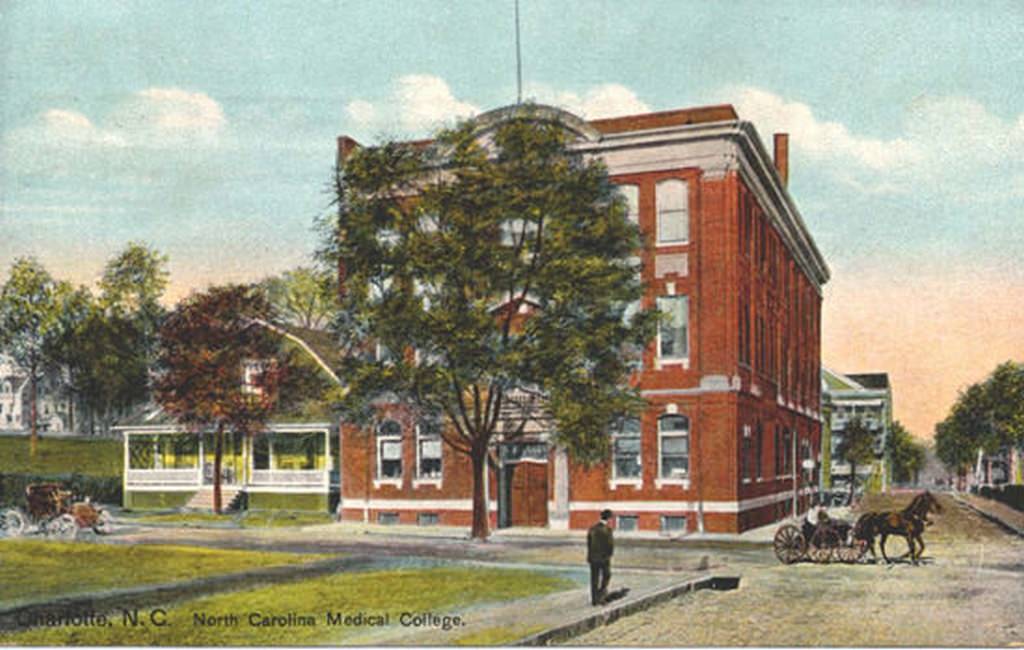
The North Carolina Medical College was chartered in 1892 at Davidson College. The upper graduates moved to Charlotte in 1903 with the opening of the Presbyterian Hospital. The entire medical college moved into this building Charlotte in 1907. Its address was 215 N. Church St., the southwest corner of Sixth and Church Streets. The school closed in 1913. Today the building has been renovated for apartments.
#166 YMCA Building (Second One), 1909
#167 YMCA Building (Second One) and Annex, 1922
#168 YMCA and Latta Arcade, 1918
#169 YMCA Building (Second One), 1911
#170 Charlotte City Hall (1927), 1920
#171 Central High School, 1920
#172 Trade Street with the Selwyn Hotel on the right, 1905
#173 Soldiers writing home at Camp Greene, 1918
#174 Freedom Park, 1953
#175 View of Charlotte and Fourth Ward from Charlotte Sanatorium, 1914
#176 Charlotte’s skyline, 1910
#177 Charlotte Skyline, 1910
#178 Bird’s-eye view of Charlotte, 1918
#179 Aerial shot of uptown Charlotte in 1966.
#180 Charlotte Memorial Stadium and Armory, 1937
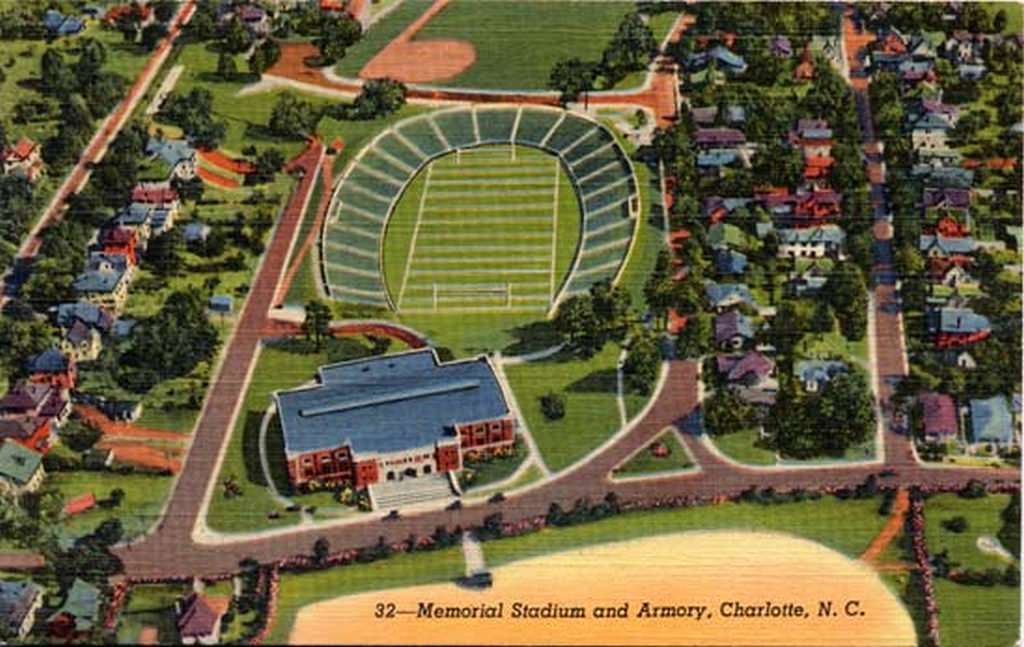
The Armory housed the National Guard organizations. At one time, the basement floor was equipped with target carriers. The upper floor is used for sports, dances and shows. The American Legion Memorial Stadium was completed in 1937. With 15,386 seats, a number of sport events and concerts are held there.
#181 Charlotte Post Office and Mint, 1906
#182 Anna Morrison Jackson’s House Number Two, 1908
#183 Bailey Cafeteria (Interior View), 1965
#184 Ovens Auditorium (Interior View), 1965
#185 Tryon Street, 1914
#186 Elizabeth College, 1908
#187 Central High School, 1920
#188 Shrine of our Lady of Lourdes at Mercy Hospital, 1960
#189 North Graded School, 1908
#190 Hotel Selwyn, 1911
#191 Holiday Inn at 3815 North Tryon Street in Charlotte, 1972.
#192 Catalina Motor Lodge, 1965
#193 Colonial Apartments, 1915
#194 Realty Building (View from South Tryon Street), 1911
#195 Charlotte City Hall, located on East Trade Street, was first occupied in 1927
#196 Mint Museum of Art, 1939
#197 Charlotte Country Club, 1933
#198 United States Federal Courthouse and Post Office in Charlotte, 1938
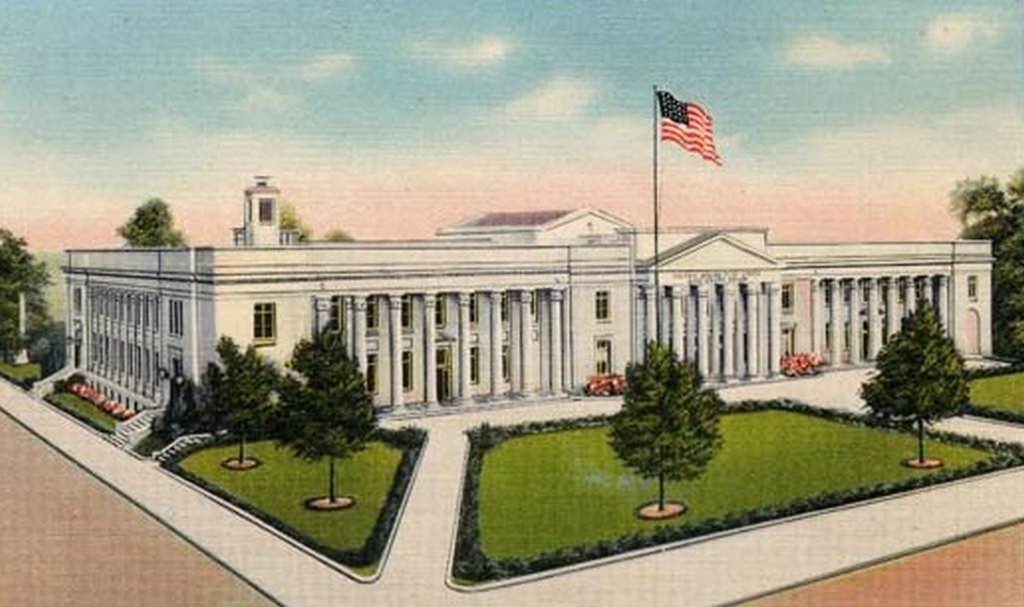
The Charles R. Jonas Federal Building is an historic two-story, limestone structure in the neo-classical design. Completed in 1915, it is located at 401 West Trade Street, in Charlotte. At various times it has served as a courthouse of the United States District Court for the Western District of North Carolina, and a United States post office. In 1975, the building was renamed in honor of long-serving North Carolina Congressman Charles R. Jonas, and was transferred to the city in exchange for land in the fall of 2005. The city leases the building to the federal government for continued use.
#199 Myers Park Neighborhood, 1928
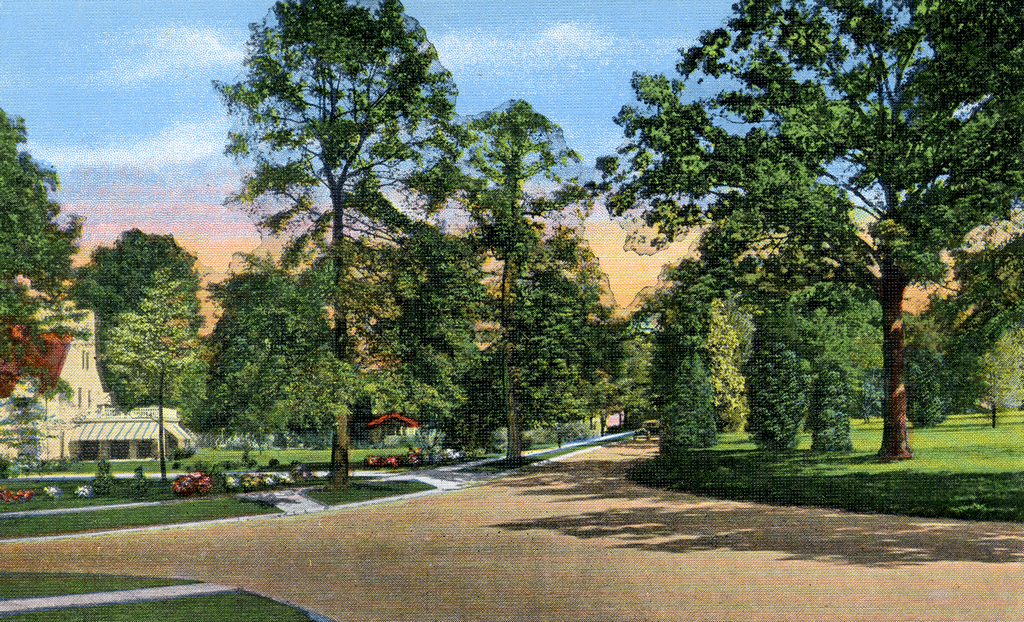
Myers Park was the second subdivision Prior to that it has been the estate of John Springs Myers which dated back to 1870. By 1883, Myers moved his family to what is now 804 East Trade Street. Although Myers sold parcels of his former estate after moving into town. However, it was until son-in-law George Stephens began purchasing land around the Myers estate and Myers transferred 783 acres to the Stephens Company in 1911 that housing boom in southeast Charlotte began.


